
Want to create or adapt books like this? Learn more about how Pressbooks supports open publishing practices.

13 Digital Learning Resources in Education
Angeliz Diaz
13.1 Introduction
- Asynchronous online learning – is a student-centered teaching method where their learning can occur in different times and spaces particular to each learner
- Digital learning resources – electronic resources such as applications (apps), software, programs, or websites that engage students in learning activities and support the learning goals of students
- Online learning – a method of education whereby students learn in an entirely internet-based environment
- Remotely – at or from a distance; typically by means of an electronic connection
- Synchronous online learning – a method of learning that requires students to attend classes at a structurally scheduled time virtually
- Traditional learning – a method of instructional interaction that occurs in person and in real time between teachers and their students
Learning Objectives
By the end of this chapter, students should be able to:
- Understand the role digital resources have in education
- Understand how the presentation of information digitally may affect the quality of learning
- Describe the different types of instruction delivery
- Distinguish the difference between synchronous and asynchronous learning
- Discuss the advantages and disadvantages of virtual learning
The inclusion of technology for lesson delivery in classrooms is progressively becoming the new normal nationally. Even though COVID-19 has sparked an exponential increase in the number of students signing up for e-learning, the use of digital learning resources like websites and applications created to enhance learning comprehension of the courses’ content was something already seen before the pandemic. Our earlier implementations combined traditional learning materials and the use of multimedia technology as supplements to the courses. This ratio, where most of the course content was presented with traditional tools like notes, in-person lectures, and textbooks, allowed the 21st-century tools like online tutorials to not be overused or over-depended on. Even with such an efficient balance, society had to adapt from traditional learning in an in-person learning environment to online learning using entirely internet-based environments due to the pandemic. The pandemic itself created an increase in the amount of digitized information and learning resources. Because these technologies have always been there, their implementation to the extent where society actually had to rely on them to learn was a very concerning transition for us all. With that increase in the usage of other resources for learning, their effectiveness, more specifically, digital learning resources, was put into question. The digital resources set forth to carry out the education of students gained broad acceptance as a result of the limited options available.
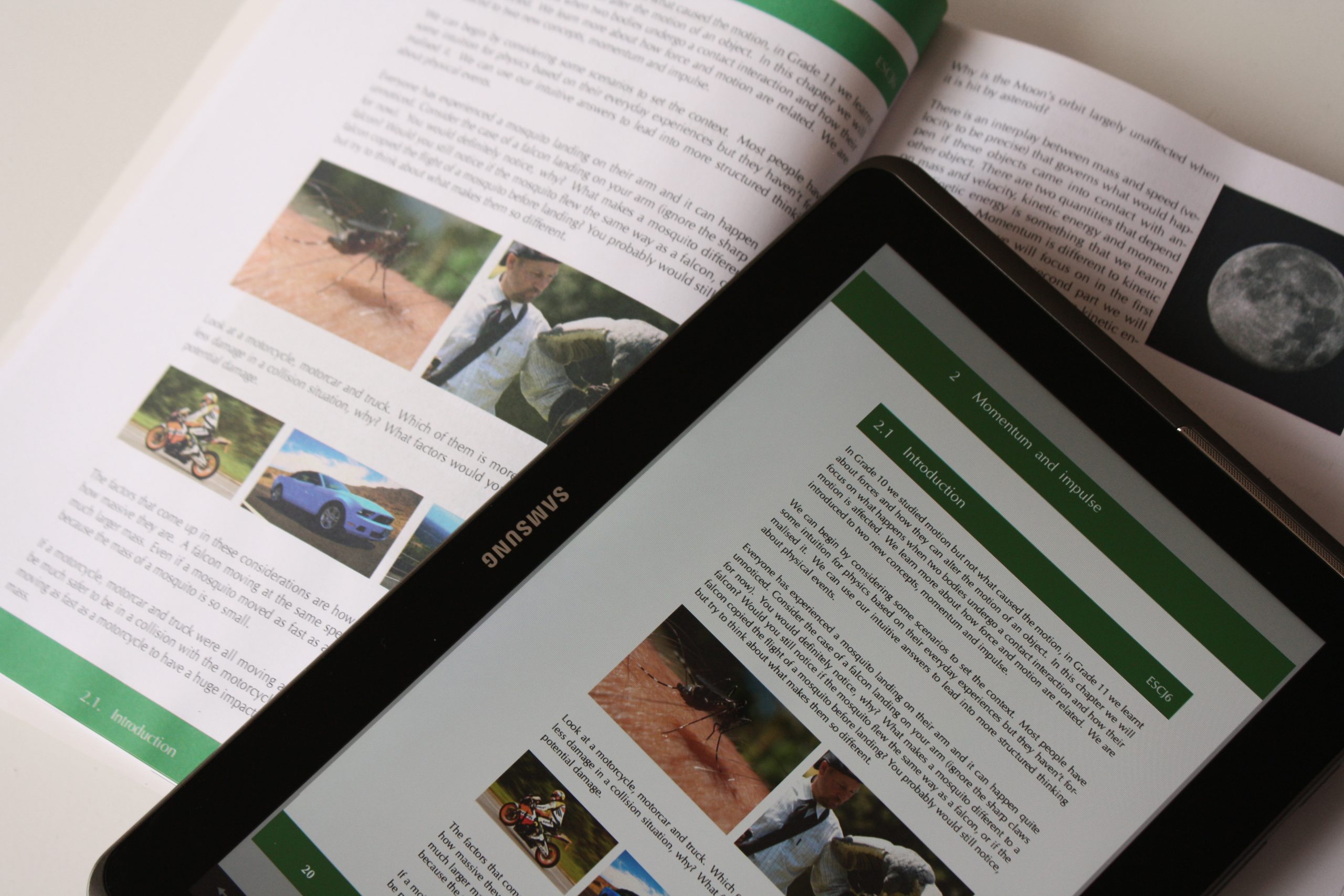
“ Natural Sciences workbook in print and online ” by Siyavula Education is licensed under CC BY 2.0
With the choice to sign up for online courses and usage of digital resources so readily available, it was assumed to be the newly convenient method of lesson delivery. The idea that students could learn in preferred environments through different learning styles was appealing. Still, it consequently held the power to create an over-reliance on online tools, thus decreasing the quality of learning regarding retention, comprehension, and accessibility regarding digital learning resources.
13.2 What are digital resources? How are they used in both traditional and online learning environments?
Key Takeaway
Digital learning resources are used for education in many ways and implemented in different forms. In traditional classrooms, digital learning resources are used as supplements to the primary course content, while in virtual learning the digital resources actually make up what is the “content” of the class.
With the choice to sign up for online courses and usage of digital resources so readily available, it was assumed to be the newly convenient method of lesson delivery. The idea that students could learn in preferred environments through different learning styles was appealing to ensure the achievement of students’ learning goals. These digital learning resources are opportunities for the expansion of learning. They are available online, worldwide, and at the touch of a hand. The most recognized digital learning resources are Youtube, Khan Academy, MOOCs, podcasts, Quizlet, e-textbooks, and so forth.
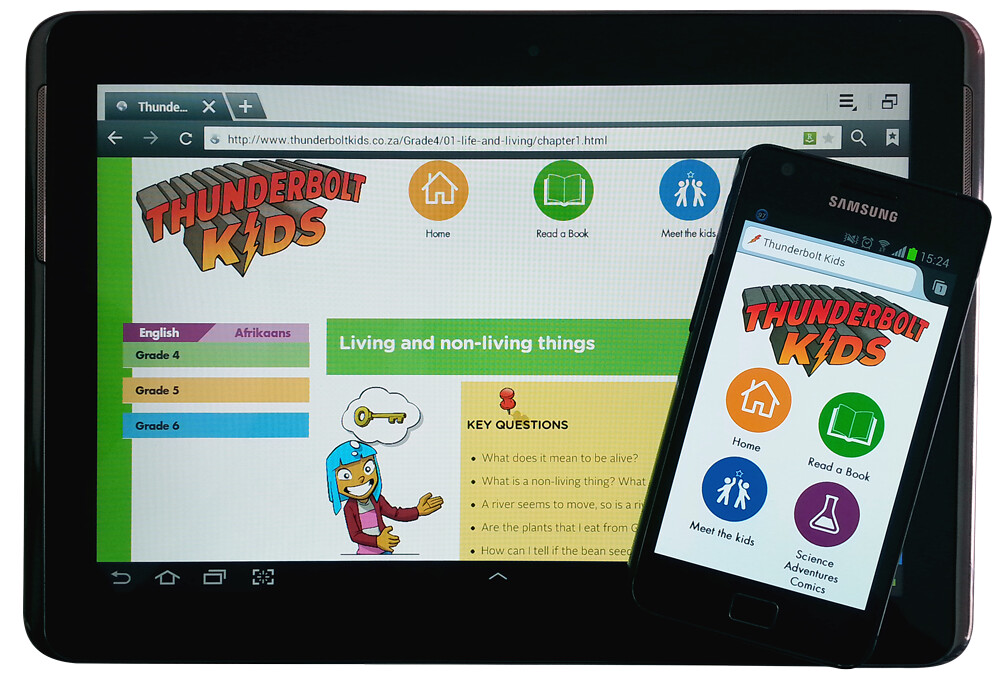
13.2.1 How digital resources are implemented in Traditional teaching and E-Learning environments
Traditional learning occurs in an in-person classroom setting where a teacher delivers knowledge to their students. Traditional learning classrooms expected their students to engage not only with the content but also their peers through constructive subject-related discussions. Outside of the classroom, the students are expected to develop their knowledge on the lesson learned in class and apply it to not only real-world scenarios but also put it to practice in assigned homework exercises. Digital learning resources are readily available for students, whether they are inside the classroom or applying their knowledge outside of class. Typically when learning a particular topic that may be harder to understand without visualization, the instructor of the courses may use digital resources to provide more information to the student and enhance the student’s overall ability to see beyond what is on paper. This availability and access to digital resources allows students to balance between the traditional paper-based course materials they are assigned in their traditional classroom and selectively implement digital learning resources when they may need further clarification on the course content and so forth.
Online learning, also known as e-learning, is a learning system in education whereby students learn the things they would traditionally but in an entirely internet-based environment. In these online courses, the content of the class is delivered to students in either a synchronous style or an asynchronous style. While the two styles both heavily rely on digital resources to execute their lessons, the structure of the courses is what sets them apart. In a synchronous online learning course, the instructor and the course students engage with each other and the course content remotely in different locations but at the same scheduled meeting time. The instructors of synchronous courses typically require their students to complete assignments and readings in preparation for class discussion virtually. These courses involve interactive lectures, discussions, student-led conversations, and presentations during structured class meetings (Staff Writers, 2021). In an asynchronous online learning course, the instructor and the students all interact with the content of the course at their own time from different locations. The instructors of asynchronous courses allow the students to learn a sequence of units through prepared digital resources without holding a live session or enforcing a meeting schedule. Both synchronous and asynchronous courses use online tools and assign readings, upload media, assign online quizzes, suggest supplementary subject-related videos for clarification, utilize Google Docs, and much more (University of Waterloo, 2020).
13.3 The history of technology in education
From paperback books to microcomputers, the technological advancements established throughout decades worth of time have created the technologically advanced classroom environments our students take part in presently.
Since the early 1800’s different forms of technological breakthroughs have shaped education. With the development of new printing techniques in the 1820s, greater production and distribution of books was finally made possible. Because of this newfound accessibility brought by printing, the diversity of materials available to teachers and students significantly increased as textbooks began to become the new norm in public schools during that decade (Cohen, 1988). As the 19th century progressed, so did our societies’ ability to come up with technological advancements like the radio and television that would ultimately be used for the spread of class lessons, similar to the way we do so now with programs like Zoom and podcasts to make sure information is presented regardless of physical circumstances.

“Education Learning Tablet School Technology” by Max Pixel is in the Public Domain, CC0
In the 1970s, the computer was first introduced into the education system, leaving thousands of schools mesmerized by the potential the computers had to enhance the quality of learning for their students. In fact, they were so admired that federal and state programs began to require schools to purchase these technologies so that they could transform the instructional practices being carried out. By the end of the 1990s, computers were used to enhance classroom instruction, and there was an estimated one computer for every five students (Christensen, Johnston, & Horn, 2008).
Since its introduction into education back decades ago, there has been an evolution where we believe that students’ best performance can be achieved through the use of computers. While computers, initially, served as tutors for students, they have become so technologically advanced that our society has progressed to a state where we have almost become infatuated with the digital learning resources these computers grant us the access to utilize.
Society’s progression through time displays a pattern where the technological advancements developed were typically implemented into the educational systems in some form. The combination of traditional teaching and the implementation of multimedia technology as supplements to the course beneficially transformed the quality of learning for students. As a result of our continuous desire for progressions, the national shift from traditional learning in classrooms to completely virtual learning across millions of homes due to COVID-19 was not as difficult had these technological progressions not been in place. Because of the pandemic’s halt on normality, educational organizations were forced to make the most out of what was already available. The pandemic’s the form of instructional delivery. Granted, these e-teaching materials like e-textbooks and digital learning resources allowed for information to be accessible in a time of despair; it is argued that they were not anything new but rather a form of earlier digital learning materials. Earlier digital learning materials were merely electronic versions of paper-based teaching materials (Li, 2021). The digital learning resources that were once implemented in education as a complementary supplement to paper-based materials and course content are now the digital resources that are being used for the actual learning process itself. Now, society is progressively transitioning back to traditional in-person learning the way it was before COVID-19, with the presentation of information digitally being what seems to be a newly adopted form of normality.
1.4 The impact of digital learning resources on education
Digital learning resources are powerful tools that can be used to enhance the learning quality of students in ways a textbook may not be able to, and though these digital resources have their perks, there are also things that traditional paper-based materials like textbooks allow students to experience that digitalized materials for learning may not. Whether it be the traditional paper-based material or digitalized materials, each resource has its strengths and weaknesses when it comes to enhancing the quality of student education.
The effectiveness of any technological advancement can only be beneficial if it is used correctly so that it may serve its original purpose. The same notion applies to the development of different digital resources. While they come in various forms serving different educational purposes, all-digital learning resources hold the potential to enhance the learning comprehension, learning quality, and overall content retention of the student. The manner they are used and implemented allows for conclusions to be made regarding their effectiveness. The effectiveness of textbooks as a learning resource for students is actually one of the most discussed amongst most because of how traditional paperback textbooks have always served as a greater source of reference for digital learning resources.
13.4.1 Impacts of digital resources on the quality of learning
With digital learning resources, the way in which they are presented to students can significantly impact the quality of learning they receive. It is found that student retention is highly correlated with student perception of quality, meaning that instructors can only attract and aid students with digital learning resources if they provide educational services that are known to meet student requirements and add value to students learning (Ali et al., 2021). In order to ensure that students are intrigued by the content they are being presented, these digital learning resources must come into play in a strategic way that is able to engage the students with the content they are being taught in class. The only downside to this opportunity of engagement is that all students learn in different ways. Though digital learning resources have proven to be highly effective, they have also proven to highly distort the main idea and the bigger picture of certain material teachers are covering.
13.4.2 Advantages of digital resources in education
Digital resources can relieve financial strain. Because e-textbooks are generally cheaper than printed books, the usage of e-textbooks can provide a certain level of relief to the students worried about their rising academic expenses. The Advisory Committee on Student Financial Assistance reported that an average student spends from $700 to $1,000 on textbooks every year (ACFSA, 2007). With textbooks being such an overwhelming amount of money every year, students have become hesitant and given the purchasing of these books a second thought, which is why digitalized textbooks can serve as the median for having a needed educational resource at a lower price. Because of the great benefits that come from purchasing textbooks in general, digitized ones, with their prices significantly lower than paper-based ones, are a better option for those students who are not easily able to afford them. As a result of this affordability problem being one that is common amongst many students, the bright side is that states and colleges are already taking steps to increase the affordability of these educational resources. Furthermore, compared to printed books, e-textbooks are portable and relatively easy to purchase. The features that e-textbooks can provide, like searching, hyperlinking, highlighting, creating flashcards, and note sharing, is an advantage that paper textbooks don’t have. These active engagement features are advantages to the learning quality of students because of their ability to interact with the content and the satisfaction perceived from usefulness and ease of use.
13.4.3 Disadvantages of digital resources in education
Digital learning resources, while they can be efficient, are not as reliable as paper-based. Though technological enhancements to most digital learning resources are still being made through features like “offline” modes, where students can access their resources even when disconnected from the internet, technology can still fail elsewhere. Unlike traditional paper-based textbooks, online textbooks are limited to a specific amount of accessibility because access to the resources depends on the battery life of the device they are being used on. Additionally, the digital devices required to attain the benefits that may come with online learning resources are very costly and not necessarily a readily available resource to all students. In the United States, there is an overwhelming assumption that all students have access to online resources because of the modernized era of technology we live in. In the United States, there are 1 in 5 children who live in households that do not have food security. With that being said, this conception that incorporating modern technology into their lives is secondary (Gaille, 2019). Granted, these devices hold access to great resources, priorities have to be made, and realistically a pantry stocked with the essential groceries a family needs is of more importance than having a new device that can be the cost of a months worth of groceries or more. Furthermore, with the numerous resources available online to students, the authenticity of students’ work has been noted to be a consistent concern with students plagiarizing and cheating in order to keep up with their assignments. Unless students have a good sense of self-motivation, digital learning resources can set students behind if they are consistently procrastinating their responsibilities and getting out of them using digital learning resources that are meant to be supplementary to the content of the course. In conclusion, factors like battery life, distraction brought by the student’s device, authenticity, internet connection, and so forth are significantly degrading the quality of learning.
13.5 Where the use of digital learning resources in education will lead us?
The amount of students turning toward digital resources to enhance their learning is increasing in an upward trend. The upward trend foreshadows that as more things become digitized so will the amount of students who make use of these digital resources.
With the evolution of technology in the 21st century, the rate of learning resource digitalization is on the increase. As these traditional learning resources like paperback textbooks continue to be digitized at a rate higher than ever, so do the number of students using these digital learning resources. With this influx, it is essential for students to maintain a balance between traditional and digital resources because of the effects the overuse of digital information can have. By utilizing digital resources to enhance learning and retrieve information, rather than using digital information out of dependence, will allow students to greatly benefit from instructional e-resources. The proper usage of digital resources truly influences the quality of learning students receive, and when used properly, the learning quality can be exponentially significant. As the resources for students continue to expand digitally, the prevalence of technology can be predicted to continue to increase the same way it is presently.
Chapter Summary:
As seen in the most recent years, technology has become one of the most used resources in the daily lives of millions of individuals. From a business setting to a classroom one, the digital world has expanded to many aspects of a single day-to-day affairs, one of them being education at all grade levels. The challenge has arisen where the learning quality of these students using digital learning resources through their digital devices has been significantly put into question because of the power they hold to either support or degrade learning quality. With the insight this shift from traditional paper-based material to information being presented to students digitally, the conclusion has been made that it does not necessarily matter what students use as their resources, but rather how they are using it and whether or not they are dependent on the online-learning resource to attain any form of knowledge.
Review Questions:
1. How can digital learning resources play a role in education?
A. They can make enhance the education of students
B. They can lower the costs of academic expenses
C. They can provide convenience because of their high accessibility
D. All of the above
2. What is a style of learning that occurs online where students attend classes virtually at a scheduled time?
A. Traditional online learning
B. Synchronous online learning
C. Asynchronous online learning
D. Remote online learning
3. The presentation of information to students digitally affects the _______ of learning of students.
B. Endurance
C. Enthusiasm
4. Which of the following is true about the trends in learning?
A. The amount of students signing up for online learning is now at zero because society has successfully transitioned back to traditional in-person learning completely.
B. Students continue to use digital resources in learning at rates that are predicted to continue to increase over time.
C. Students have relied more on textbooks than technology since the pandemic because they appreciate what they had.
D. Students will no longer be able to use digital learning resources because trends show an increase in price that does not allow students to even afford them.
Food for thought:
- What has your educational experience been like? What learning resources have you interacted with, have they evolved over time? How have they played a role in the quality of your education?
Advisory Committee on Student Financial Assistance. (2007, May). Turn the page making college more affordable. https://files.eric.ed.gov/fulltext/ED497026.pdf
Ali, S., Gulliver, S. R., Uppal, M. A., & Basir, M. (2021). Research investigating individual device preference and e-learning quality perception: can a one-solution-fits-all e-learning solution work? Heliyon, 7(6). https://doi.org/10.1016/j.heliyon.2021.e07343
Bellflower, J. V. (2012). The Effectiveness of Traditional and 21st Century Teaching Tools on Students’ Science Learning(Thesis). https://www.proquest.com/docview/916613682/abstract/80D106DF550547C3PQ/1?accountid=6167
Christensen, C., Johnson, C. W., & Horn, M. B. (2008). Disrupting Class: How Disruptive Innovation Will Change the Way the World Learns (1st ed.). McGraw-Hill.
Gaille, B. (2019, December 5). 23 Advantages and Disadvantages of Technology in Education. BrandonGaille.Com. https://brandongaille.com/23-advantages-disadvantages-technology-education/
How Has Technology Changed Education | Purdue Online. (n.d.). Purdue University Online. https://online.purdue.edu/blog/education/how-has-technology-changed-education
Li, X. (2021). Textbook Digitization: A Case Study of English Textbooks in China. English Language Teaching, 14(4), 34. https://doi.org/10.5539/elt.v14n4p34
Staff Writers. (2021, July 27). Synchronous Learning vs. Asynchronous Learning: What’s the Difference?BestColleges.Com. Retrieved November 17, 2021, from https://www.bestcolleges.com/blog/synchronous-vs-asynchronous/
Sun, J., Flores, J., & Tanguma, J. (2012). E-Textbooks and Students’ Learning Experiences. Decision Sciences Journal of Innovative Education, 10(1), 63–77. https://doi.org/10.1111/j.1540-4609.2011.00329.x
University of Waterloo. (2020, December 17). Synchronous and Asynchronous Online Learning. Keep Learning. Retrieved November 17, 2021, from https://uwaterloo.ca/keep-learning/strategies-remote-teaching/synchronous-vs-asynchronous-online-learning
Electronic resources such as applications (apps), software, programs, or websites that engage students in learning activities and support the learning goals of students.
A method of instructional interaction that occurs in person and in real time between teachers and their students.
A method of education whereby students learn in an entirely internet-based environment.
A method of learning that requires students to attend classes at a structurally scheduled time virtually.
At or from a distance; typically by means of an electronic connection.
Is a student-centered teaching method where their learning can occur in different times and spaces particular to each learner.
Technology: Where it Started and Where it’s Going Copyright © by Angeliz Diaz is licensed under a Creative Commons Attribution-NonCommercial-NoDerivatives 4.0 International License , except where otherwise noted.
Share This Book
- Join our email list
- Post an article
How can we help you?
11 digital education tools for teachers and students.

The Most Popular Digital Education Tools For Teachers And Learners
Hundreds of digital education tools have been created with the purpose of giving autonomy to the student, improving the administration of academic processes, encouraging collaboration, and facilitating communication between teachers and learners. Here we present 11 of the most popular.
Edmodo is an educational tool that connects teachers and students, and is assimilated into a social network. In this one, teachers can create online collaborative groups, administer and provide educational materials, measure student performance, and communicate with parents, among other functions. Edmodo has more than 34 million users who connect to create a learning process that is more enriching, personalized, and aligned with the opportunities brought by technology and the digital environment.
2. Socrative
Designed by a group of entrepreneurs and engineers passionate about education, Socrative is a system that allows teachers to create exercises or educational games which students can solve using mobile devices, whether smartphones, laptops, or tablets. Teachers can see the results of the activities and, depending on these, modify the subsequent lessons in order to make them more personalized.
Projeqt is a tool that allows you to create multimedia presentations, with dynamic slides in which you can embed interactive maps, links, online quizzes, Twitter timelines, and videos, among other options. During a class session, teachers can share with students academic presentations which are visually adapted to different devices.
4. Thinglink
Thinglink allows educators to create interactive images with music, sounds, texts, and photographs. These can be shared on other websites or on social networks, such as Twitter and Facebook. Thinglink offers the possibility for teachers to create learning methodologies that awaken the curiosity of students through interactive content that can expand their knowledge.
TED-Ed is an educational platform that allows creating educational lessons with the collaboration of teachers, students, animators—generally people who want to expand knowledge and good ideas. This website allows democratizing access to information, both for teachers and students. Here, people can have an active participation in the learning process of others.
cK-12 is a website that seeks to reduce the cost of academic books for the K12 market in the United States and the world. To achieve its objective, this platform has an open source interface that allows creating and distributing educational material through the internet, which can be modified and contain videos, audios, and interactive exercises. It can also be printed and comply with the necessary editorial standards in each region. The books that are created in cK-12 can be adapted to the needs of any teacher or student.
7. ClassDojo
ClassDojo is a tool to improve student behavior: teachers provide their students with instant feedback so that good disposition in class is 'rewarded' with points and students have a more receptive attitude towards the learning process. ClassDojo provides real-time notifications to students, like 'Well Done David!' and '+1', for working collaboratively. The information that is collected about student behavior can be shared later with parents and administrators through the web.
8. eduClipper
This platform allows teachers and students to share and explore references and educational material. In eduClipper , you can collect information found on the internet and then share it with the members of previously created groups, which offers the possibility to manage more effectively the academic content found online, improve research techniques, and have a digital record of what students achieved during the course. Likewise, it provides the opportunity for teachers to organize a virtual class with their students and create a portfolio where all the work carried out is stored.
9. Storybird
Storybird aims to promote writing and reading skills in students through storytelling. In this tool, teachers can create interactive and artistic books online through a simple and easy to use interface. The stories created can be embedded in blogs, sent by email, and printed, among other options. In Storybird, teachers can also create projects with students, give constant feedback, and organize classes and grades.
10. Animoto
Animoto is a digital tool that allows you to create high-quality videos in a short time and from any mobile device, inspiring students and helping improve academic lessons. The Animoto interface is friendly and practical, allowing teachers to create audiovisual content that adapts to educational needs.
11. Kahoot!
Kahoot! is an educational platform that is based on games and questions. Through this tool, teachers can create questionnaires, discussions, or surveys that complement academic lessons. The material is projected in the classroom and questions are answered by students while playing and learning at the same time. Kahoot! promotes game-based learning, which increases student engagement and creates a dynamic, social, and fun educational environment.
- Top 10 Tools For The Digital Classroom
- Advantages And Disadvantages Of Online Learning
- The Top 10 Benefits Of Digital Learning
- The Use Of Technology In Online Education
- Evolution Of Digital Education Tools To Measure Students’ State Of Mind
Explore. Create. Collaborate.
Support a vibrant, educator-focused commons.
The tens of thousands of open resources on OER Commons are free - and they will be forever - but building communities to support them, developing new collections, and creating infrastructure to grow the open community isn’t. Grassroots donations from people like you can help us transform teaching and learning.
Make a Donation Today!
Introducing Open Author
Create OER with Open Author
Open Author helps you build and publish Open Educational Resources for you and for the benefit of educators and learners everywhere.
Build. Save. Collaborate.
Groups provides a flexible environment to organize, create, share, and discuss resources with others in your network. Collaborate with group members, tag and add resources to shared folders, create your own collections, all within a public or private group.
Extensive Library, Powerful Findability
Harness the power of the Commons
Dedicated to professional learning.
Our award-winning OER Professional Learning programs support instructors and curriculum specialists to gain the necessary skills required to find, adapt, and evaluate high quality open materials.
In-person and virtual OER workshops help focus instructors to develop a "commons" mindset, to experience the benefits of open processes using the platform's tools, collaborative features, and workflows. This can include using Open Author for creating, remixing, and publishing shared curriculum.
Become an OER Commons pro
How to Search OER Commons
How to Use Groups
How to Create a Profile
for Education
- Google Classroom
- Google Workspace Admin
- Google Cloud
Get an estimate on the impact Google Workspace for Education Plus could have on your institution. Calculate here .
Calculate potential savings with plus edition, products that power education.
Google for Education tools work together to transform teaching and learning so every student and educator can pursue their personal potential.
- Get started with Google Workspace for Education
- Get started
Use Google tools together to drive educational impact
Support learning with google workspace for education’s simple, secure, and flexible tools.
Help your institution collaborate easily, streamline instruction, and keep the learning environment safer with tools designed for students and teachers.
Manage, measure, and enrich learning experiences with Google Classroom
Provide an easy way for educators to connect with their students and manage their classes with an all-in-one place for teaching and learning.
Manage your education ecosystem with Chromebook
Equip your school with versatile, intuitive, and secure devices designed for next-generation teaching and learning.
Google Workspace for Education
Unlock the full potential of Google Workspace by using tools together.
Google Docs, Sheets & Slides
Create, collaborate, and edit with others in Docs, Sheets, Forms, Slides, and more.
Google Meet
Enable teachers, students, and admins to work together from anywhere.
Admin Console
Set policies, control access, monitor data, and quickly respond to threats.
Create new assignments
Create assignments, quizzes, and lesson content for your students.
Track student grades
Monitor progress and gain visibility with a holistic view of student achievement.
Simplify classroom management
Easily switch between Stream, Classwork, People, and Grades—even when you are offline.
Devices for everyone
Choose powerfully simple devices for everyone in your school.
Automatic updates
Keep your devices secure with updates that happen in the background.
Accessibility built-in
Customize learning experiences with select-to-speak, Chromevox, magnifiers and more.
Centralized Admin Console
Monitor your institution's domain with full visibility and control.
Equip your school with tools for success
Education leaders.
DELL LATITUDE 7410 CHROMEBOOK ENTERPRISE
Bring flexible innovation to your school at scale
Spend less time on administrative tasks and more time making an impact on student education. Equip your teachers with tools, resources, and professional development so they can focus on their students.
- Discover K-12 solutions
- Connect with a partner
- Read customer stories
ASUS CHROMEBOOK FLIP CX5
Easily deploy educational tools across your institution
Get diverse tools in the hands of students and educators with minimal effort. Maintain all of your institution’s tech from one place. Monitor info-sec, control access, and quickly make changes across your network using the centralized admin console.
- Learn about privacy & security
- Search through setup guides
- Get help with products
- Set up and use premium features
HP CHROMEBOOK X360 14B
Save time and enrich student learning with easy-to-use tools
Streamline class management while providing every student with individualized learning experiences. Create, customize, and collaborate on lessons to help learners grow their skills. Use virtual classrooms to promote learning any time, anywhere. Keep meetings, documents, and reports all within reach.
- Learn how to use products
- Get professionally certified
- Connect with other teachers
Getting started is simple
Choose a product to learn more
- Try out Workspace at no cost
- Learn about all editions
- Try out Google Classroom at no cost
- Learn about Classroom upgrades
- Explore App Hub
- Learn about Chromebooks
- Find a Chromebook
Have specific requirements or interested in upgrading?
- Contact sales
- Find a partner
What’s happening in education
10 chromebook features teachers will love, meet the young canadian innovators of google’s code next program, 5 ways google for education helps teachers and students stay safer online, more ways to connect:.
We’re here to help
Learn more about our products, find a purchase partner, and get specific answers from our support team any time.
- Get support
You're now viewing content for a different region.
For content more relevant to your region, we suggest:
Sign up here for updates, insights, resources, and more.

DIGITAL SKILLS GLOSSARY
WELCOME TO THE
DIGITAL SKILLS LIBRARY

Explore by Domain
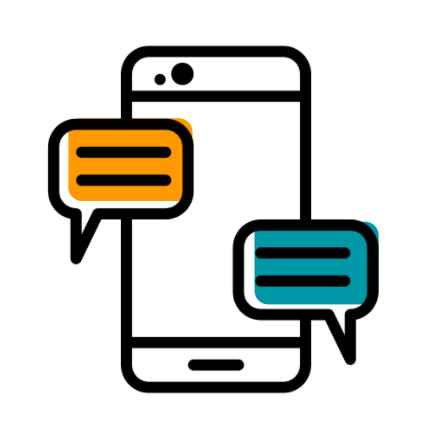
Explore All Resources

Our EdTech Initiatives
- IDEAL Consortium
- CrowdED Learning
Jump to Content
- Google Account
- Google Classroom
- Google Cloud
- Google Workspace Admin
Helping everyone in the world learn anything in the world.
Learning for school.
Find products built for education, like Classroom, Chromebooks, and more.
Explore learning tools, cloud solutions, and programs designed for higher ed.
Get access to digital tools, training, support, and more for educators
Help kids continue learning beyond the classroom.
Learn how we support nonprofits that serve teachers and students.
Learning for work
Get help preparing for any kind of work, with Grow with Google.
Find career inspiration, get access to experts, and more with YouTube.
Develop coding skills that unlock opportunities in computer science.
Learn how we power nonprofits that create pathways to career success.
Become an expert in the Google tools you use for work, like Google Cloud and Google Workspace.
Learning for life
Find what you need and explore anything you can imagine.
Access the world’s information with tools built for infinite discovery.
Find tools that help empower kids to safely explore online, built just for families.
Transform yourself (and the world) with information.
Ben Gomes, SVP of Learning & Education, describes Google’s commitment to learning.
Learning is more than just knowing—it’s the ongoing quest for understanding.
Over 20 years ago, we made it our mission to organize the world’s information to make it universally accessible and useful. And today, billions of people come to Google and YouTube with the intent to learn. Our goal is to provide the information, tools and services that help them build knowledge, fuel curiosity, and prepare for what’s next.
Learn, work, teach, and augment curiosity with AI
Whether you are an educator, a professional aiming to acquire new skills, or just generally curious, discover the transformative power of ai..
Teach and learn with powerful tools
AI can help make learning experiences more personal, provide immediate feedback, improve accessibility, enhance digital security, give educators precious time back, and do so much more.
Work smarter, not harder
Boost productivity, teamwork, and efficiency with the power of AI at work and gain the skills you need for your current job, or to help land your next one.
Enhance everyday life
Whether you’re trying to organize your finances, make a schedule, write a short story, or find inspiration, AI tools can help you do life better.
Our impact and reach.
170 million educators and students doing more
Google Workspace for Education powers teaching and learning in classrooms globally.
Do more at school
$377 million donated to organizations globally
Google.org is helping expand access to learning by supporting nonprofits.
See our support
100 billion words translated everyday
Google Translate helps people connect across languages, cultures, and places
Translate words
85% of U.S. YouTube viewers surveyed say they learn or improve their skills
We aim to double the number of people watching educational videos on YouTube .
Find videos on anything
1 billion people discovering something new each day
Over a billion people come to Search to find answers or to discover something new.
Search anything you can imagine
3 million kids improving their reading skills
Every month, millions of kids gain reading confidence with Read Along .
Build reading skills
70 million people gaining digital skills
Grow with Google helps people learn or enhance their skills for in-demand jobs.
Learn digital skills
40 million Chromebooks powering classrooms
Chromebooks are the most widely used device for schools around the world.
Browse devices for school
7 million students exploring computer science
Code with Google unlocks future careers by introducing students to the power of CS
Discover Coding
Sundar Pichai visits students at Langley K-8 school in Pittsburgh, Pennsylvania.
“Learning is what makes information useful, and what enables people to apply knowledge to make things better for themselves, their families, and their communities.”
Sundar Pichai , CEO, Google and Alphabet

Open Educational Resources
- OER in action
- OER Dynamic Coalition
Open Educational Resources (OER) are learning, teaching and research materials in any format and medium that reside in the public domain or are under copyright that have been released under an open license, that permit no-cost access, re-use, re-purpose, adaptation and redistribution by others.
Open license refers to a license that respects the intellectual property rights of the copyright owner and provides permissions granting the public the rights to access, re-use, re-purpose, adapt and redistribute educational materials.
The Recommendation on OER , adopted by UNESCO’s General Conference at its 40th session on 25 November 2019, is the first international normative instrument to embrace the field of openly licensed educational materials and technologies in education.
To support Member States implementation of the 2019 Recommendation on OER, UNESCO established the OER Dynamic Coalition. The OER Dynamic Coalition aims to support networking and sharing of information to create synergies around the 5 areas of action of the recommendation: (i) building capacity of stakeholders to create, access, re-use, adapt and redistribute OER; (ii) developing supportive policy; (iii) encouraging inclusive and equitable quality OER; (iv) nurturing the creation of sustainability models for OER, and (v) facilitating international cooperation.
Supporting universal access to information through quality open learning materials
Digital skills development for teachers
Contribution to the 2030 Agenda

UNESCO contributes to SDG 4 on quality education for all.
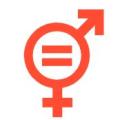
Gender equality, enshrined in SDG 5 and a key enabler to achieve all other SDGs.
SDG 9 calls for the enhancement of scientific research and innovation especially in developing countries.
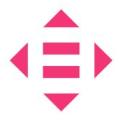
SDG 10 calls for reducing inequalities.
UNESCO contributes to ensure public access to information and protect fundamental freedoms.

SDG 17 calls for partnerships for the Goals.
OER and knowledge and skills acquisition: What is the UNESCO OER Recommendation?
This extract gives an overview of the different policy areas of the OER Recommendation and illustrates the potential of OER in building inclusive societies as well as the main stakeholders.
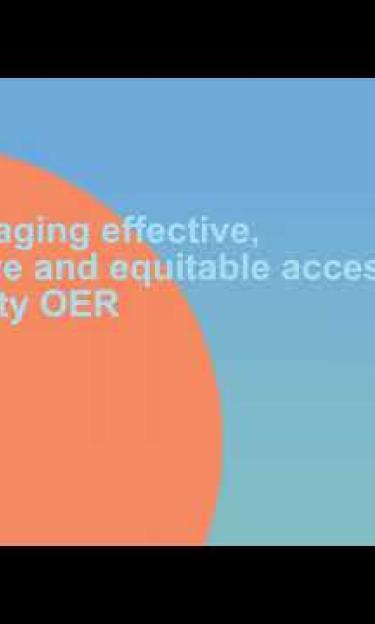
Facts and Figures

out of which 13 SIDS and 4 Associate Member States participated in OER events in 2022.

to raise awareness and strengthen capacity on the OER Recommendation since its adoption.

36% women involving 25 Member States.

have adopted the OER Recommendation.
Publications

You must enable JavaScript in order to use this site.

- Accessibility
- Artificial Intelligence
- Digital Equity Education Roundtables
- Educator Prep Programs
- Higher Education
- National Educational Technology Plan
- Artificial Intelligence and the Future of Teaching and Learning
- LGBTQI+ Students Online
- Higher Education National Education Technology Plan
- Advancing Digital Equity for All
- All Publications
- Building Technology Infrastructure for Learning
- Digital Literacy Accelerator
- Educational Technology in Teacher Preparation
- Education Blockchains
- Home Access Playbook
- Learning Continuity Scenarios
- Open Education
- Professional Learning
- Wireless Brief
School Leader Digital Learning Guide
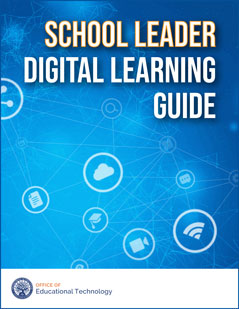
Share this Report

What can this guide do for you?
Digital learning is defined as “any instructional practice that effectively uses technology to strengthen a student’s learning experience and encompasses a wide spectrum of tools and practices.” 1 This “School Leader Digital Learning Guide” is a resource to help you consider, plan, fund, implement, maintain, and adapt learning programs that meet the unique needs and requirements of the students and teachers that you serve. The guide is oriented toward digital learning principles and practices that enable and empower students and teachers of all abilities and zip codes while advancing student agency (i.e., initiative, intention, and responsibility in pursuing their education), their personalized learning, their mastery of skills and competencies, and protecting their privacy. This guide is designed to provide resources and recommendations to help leaders in an array of circumstances, including: leaders with students and teachers who are experiencing digital learning in school facilities or remotely; leaders for whom digital learning presents transformative or incremental change for their students; leaders of a school, a school system, an education provider, or a function that supports digital learning; and leaders whose organization is funded by municipal taxpayers, non-profit institutions, or individuals and is or is not supplemented by federal monies and programs.
Each section contains key considerations, questions to ask yourself as a leader, and resources to help with your thinking and planning. References to technical and professional methods and resources are presented for you to consider and apply as appropriate in leading your organization’s efforts to meet the needs and requirements of your students and teachers. This “School Leader Digital Learning Guide” is part of a series of guides, including the “ Parent and Family Digital Learning Guide ” and “ Teacher Digital Learning Guide ,” intended to support parents and families, teachers, and education leaders in leveraging the capabilities of digital tools and resources for teaching and learning.
Other than statutory and regulatory requirements included in the document, the contents of this guidance do not have the force and effect of law and are not meant to bind the public. This document is intended only to provide clarity to the public regarding existing requirements under the law or agency policies. [OET-FY21-03]
Embrace Digital Learning Leadership
- DEVELOP A SHARED VISION AND GOALS
- PRIORITIZE PROFESSIONAL LEARNING FOR TEACHERS
Assess, Build, and Maintain Infrastructure
- EVALUATE AND MANAGE EDUCATIONAL TECHNOLOGIES
- ADDRESS ACCESS TO HIGH-SPEED INTERNET
- PROCURE, DISTRIBUTE, MANAGE, AND MAINTAIN DEVICES
- PROTECT STUDENT PRIVACY AND SECURITY
- PROMOTE DIGITAL CITIZENSHIP
Personalize Learning for Students
- IMPLEMENT COMPETENCY-BASED LEARNING
- ASSESS STUDENT LEARNING IN REAL-TIME
- SUPPORT LEARNER VARIABILITY
Collaborate with Parents and Families to Support Students
- INFORM AND EMPOWER PARENTS AND FAMILIES
- SUPPORT STUDENT HEALTH AND WELLNESS
INTRODUCTION
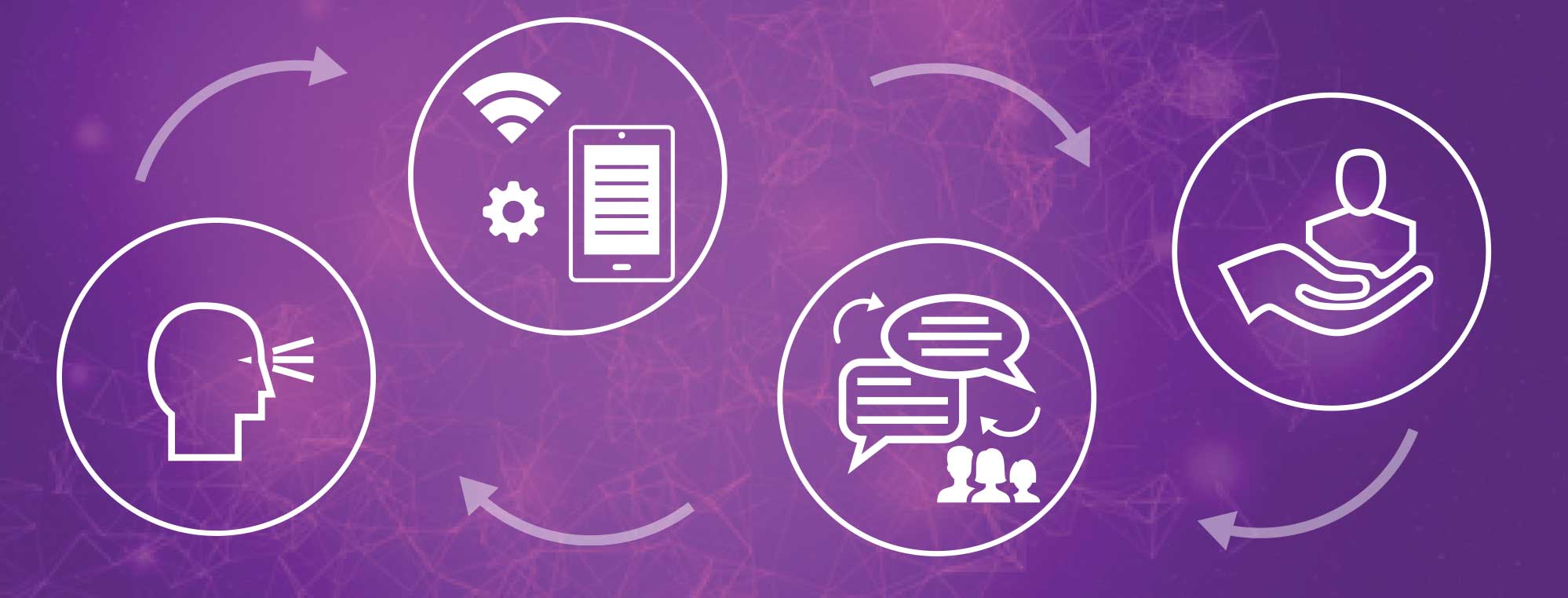
THE NEED FOR YOUR LEADERSHIP
As you continue your work to build and foster environments where digital learning is useful, available, and safe for students and teachers, you and your stakeholders face the inherent challenges of every technology-enabled endeavor: Technology is only as good as it is used in practice by people. Your leadership matters when it comes to the results and return on investment your organization can achieve with educational technology (EdTech). Without your effective leadership to envision, plan, and deliver an environment where EdTech can be accessed and used well by students and teachers, there are real risks for technology being underused, misused, incompatible, or obsolete.
THE CHALLENGES & OPPORTUNITY
With an unprecedented number of students and teachers experiencing remote digital learning due to the novel coronavirus 2019 (COVID-19) related school closures and limited openings, the opportunities—and need—for engagement, innovation, and solutions to challenges inherent in a remote digital learning environment have never been greater.
For many students and teachers, the long-conceived promise of “anytime, anywhere” learning has met the immediate challenges of limited access and limited capacity. Parents and teachers alike have seen their homes become places that have to provide and, for many, competitively manage resources such as access to space, bandwidth, and devices needed to support effective digital teaching and learning.
With your leadership, it is possible to maximize the benefits of digital learning for the students you serve now and in the future. Effective use of technology can address the impact of any learning losses experienced by students in the current environment and mitigate the prospect of future learning losses. . 2 As a leader you can learn from, develop, assess, plan, resource, and govern the use of technology by your students and teachers. You can embrace what has worked, adjust what has not, and work with students and teachers to chart the path forward.
Implementing and assessing digital learning is a challenge at any time—and the current learning environment has greatly increased the stakes. Provided below is a roadmap for leaders in schools and school systems that encourages developing a shared vision and goals, and prioritizing teacher professional development to meet the needs of your students and to support parents and families.
When used in meaningful ways, digital technologies can empower students to become drivers of their own learning, deeper thinkers, and stronger collaborators. For digital learning to be successful at an organizational level, you should consider developing a shared vision and goals. Planning resources, including considerations for developing a leadership team, conducting a needs assessment, collecting feedback from key stakeholders, and budgeting for digital learning, are provided in Appendix A.
1. DEVELOP A SHARED VISION AND GOALS
Key considerations.
In concert with establishing, and periodically revisiting, the shared vision and goals, there are several key areas on which to focus. Consider, for example, how digital learning can strengthen students’ learning experiences, empower and engage students and teachers, and promote mastery and critical thinking and personalized learning. Also consider the access from school and from home that teachers and students have for digital teaching, learning, and assessment.
Guiding Strategies
- Map out how students and teachers will acquire the hardware, connectivity, knowledge, skills, and abilities necessary to get the most out of digital learning.
- Determine how to implement and assess digital learning, as well as manage change in those processes.
- Establish how the standards of success within your school or school system will be met through digital learning.
- Identify how your digital learning goals may align with other school or school system goals for learning and technology use.
- Evaluate and address any learning losses or gains that may have been experienced by students in your school or school system and identify learning supports and other resources available to teachers, students, parents, and families to mitigate potential future learning losses, and to build upon gains.
REFLECTION QUESTIONS: DEVELOP A SHARED VISION AND GOALS
Where your school or school system is positioned in its implementation of digital learning— including whether a shared vision and goals for the effective use of educational technology has been developed and communicated—may impact how you consider and answer the following questions.
Planning and Assessment:
- What is the shared vision for effective digital learning within your school or school system over the next year? Three years? Five years?
- Does your current school or school system technology plan require updating or revisions to align with new digital learning goals? What internal and/or external factors are driving the need for changes to the plan?
- What is the timeline needed for teacher buy-in, skillset development, and implementation of the digital learning?
- What is your current investment in digital learning and what is the funding required to meet existing needs? How will you determine that your investment in digital learning is sustainable long term?
- How will you determine whether every student and teacher in your school or school system has access to high-speed internet, a device, and the information needed to use them? For those who do not, how will you work toward a solution?
Teaching and Learning:
- How will digital learning and technology support your school or school system’s standards of success and learning goals?
- Where will digital learning take place: virtually or in a blended setting? How will you address continuity of learning in the event of forced school closures?
- How will digital learning and technology support students’ social-emotional learning?
- How will you identify and use digital learning technology to support students with different learning needs?
- How will digital learning and technology support students with disabilities?
- How will you identify what strategies are the most effective in the digital learning process under your unique circumstances and then connect those strategies to sustainable, long-term digital learning?
- How will you identify and address learning losses—or gains—that have occurred and effectively use digital learning and other resources to support teachers, students, parents, and families to mitigate any future learning loss and capitalize on gains?
Communication:
- Have you developed a communication plan to notify parents and families of the status, or any change in status, of digital learning and technology support to meet the needs of students?
- What feedback can be gathered to determine what is—or is not—working for students, families, and teachers?
- How will you establish an ongoing system to acquire feedback from students, families, and teachers to assess digital learning and technology support in your school or school system?
- Missouri Department of Education: Six Step Process to Creating a Technology Plan
- For a more comprehensive resource, the National Standards for Quality Online Teaching is a benchmark for quality online instruction .
- Rhode Island Department of Education: Virtual Instructional Day Plan
- Future Ready Schools® (FRS) Network: Superintendents: Take the Pledge
- U.S. Department of Education Office of Educational Technology: Personalized Professional Learning for Future Ready Leaders (Self-Assessment Tool and Exemplary Practices)
- Consortium for School Networking (CoSN): Leadership and Vision
- International Society for Technology in Education (ISTE): Standards for Education Leaders
- State Educational Technology Directors Association (SETDA): Broadband Imperative III: Driving Connectivity, Access and Student Success
- Joint resource paper from former Directors of the Office of Educational Technology at the U.S. Department of Education, with a foreword written by five former U.S. Secretaries of Education, all members of the COVID Collaborative: Ten Ways to Make Online Learning Work: A Guide to Improving Education in the Time of COVID-19
2. PRIORITIZE PROFESSIONAL LEARNING FOR TEACHERS
Reference the “Teacher Digital Learning Guide” for key considerations, strategies, and resources to support teachers in the transition to digital learning.
Consider what professional development and training is needed to expand the technology skills of teachers and administrators in your school or school system. Provide consistent support and professional development that is personalized and incentivizes teachers to meaningfully engage. Some strategies for digital learning are applicable in both face-to-face and virtual settings; however, special considerations should be made to support students learning at home.
- Provide professional development opportunities which incorporate research-based practices that promote teacher professional development effectiveness.
- Create professional learning communities (PLCs) where teachers can meet in person or online to support each other throughout the year in their use of technology. Examples include grade-level teams, content teams, and teams leveled by technology expertise or interest.
- Establish full- or part-time coaching positions or select a group of mentor teachers to provide ongoing professional development and instructional support for their peers.
- Identify or develop self-paced course modules that allow for the flexible and efficient use of professional learning resources.
- How to use devices, adopted curriculum, and EdTech tools;
- Student privacy and at-home security, including privacy obligations under the Family Educational Rights and Privacy Act (FERPA) , relevant state laws, and relevant school or school system policies;
- Content and learning management systems, apps, and software, as necessary;
- Other assessments to address any learning losses or gains that may have occurred and intentionally address needed innovation in ongoing practices and assessments to mitigate any future learning losses, and to build upon gains;
- Pedagogical practices for digital learning that are age appropriate, specific to content areas, tied to competencies, and accelerate student learning after school closures, in both hybrid and distance learning environments;
- Professional practices for digital teaching, including considerations for scheduling and work life balance; and
- Appropriate uses of synchronous (instruction for—and learning by—students that occurs at the same time, but not in the same place) and asynchronous (instruction for—and learning by—students that does not occur in the same place, nor at the same time) connections;
- Conducting class discussions using video conferencing;
- Setting up privacy and security settings on online tools; and
- Setting up one-on-one and small group interactions using video conferencing.
REFLECTION QUESTIONS: PRIORITIZE PROFESSIONAL LEARNING FOR TEACHERS
- Has your school or school system allocated funding and resources, as well as time on the school calendar, for professional development opportunities for your teachers?
- Do teachers have opportunities to develop skills for leveraging learning technology in powerful ways? What do they have and what do they need?
- How are teachers incentivized to create and innovate their digital pedagogy?
- What opportunity do you provide teachers to identify and select professional development that is tailored to their needs?
- What assessments do teachers need to understand the degree of learning loss in their students and how can you innovate in your practices and ongoing assessments to mitigate any future learning loss?
- What resources exists that demonstrate the best evidence-based practices in digital learning? What do you need to procure or create?
- What feedback can be gathered to determine what is — or is not — working for teachers?
- How will you establish an ongoing system to acquire feedback from teachers to assess professional learning in your school or school system?
- Digital Promise: Micro-credentials COVID-19 Library
- International Society for Technology in Education (ISTE): ISTE Standards for Educators
- The Learning Accelerator: Professional Development Strategies to Support Teachers During the Shift to Remote Learning
- GetSetUp: GetSetUp for Remote Learning
- The New Teacher Project (TNTP): Learning Acceleration Guide
Digital learning is most obtainable and sustainable with a well-planned and well-maintained infrastructure of EdTech, tools, resources, and access to support your teachers and students. Schools and school systems of any size can be guided by this information to evaluate their current infrastructure and plan for the needs of teachers and student, funding, maintenance, privacy and security, and digital citizenship education.
In order to leverage technology to meet your teaching and learning goals, it is crucial that your school system, school, and community have a robust infrastructure for digital learning. The infrastructure includes learning devices and high-speed internet access for students and teachers. It also includes the digital tools and resources for learning. A robust learning infrastructure also ensures that students remain safe online, by complying with key data privacy and security regulations and teaching digital citizenship (refer to the Promote Digital Citizenship section below).
One way to approach building and maintaining infrastructure for digital learning is to consider how you will manage the lifecycle of EdTech investments. Managing the EdTech lifecycle includes assessing the needs of your school or school system, procuring and deploying technology, measuring the efficacy of new EdTech investments, and determining when to renew or replace software licenses.
There are many tools and frameworks to assist with lifecycle management, some of which are included in the resources section below. Your school or school system should explore, evaluate, and use the tools and processes that best meet your unique learning goals, needs, and requirements. Additional factors may include the size of your student population, the structure of your central office, school leadership, and decision-making responsibilities, and the amount and types of funding available.
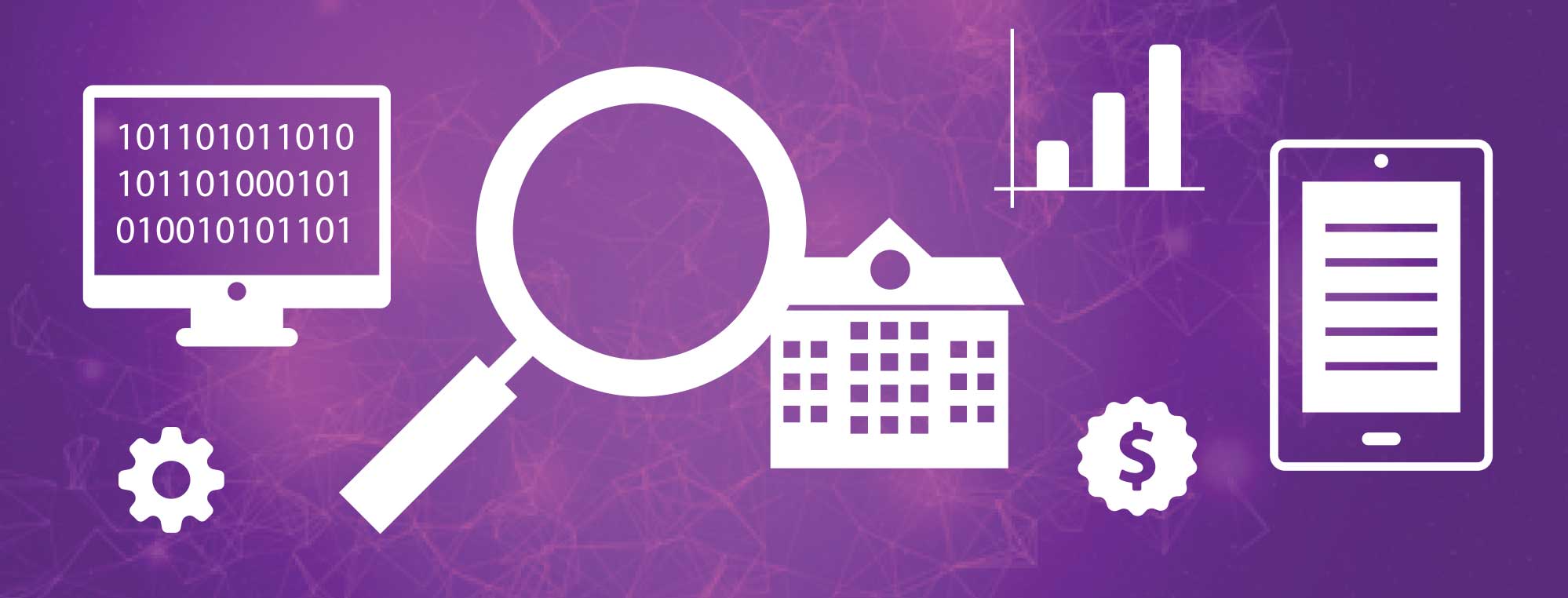
Refer to the “ Parent and Family Digital Learning Guide ” Enabling Digital Learning section and “Teacher Digital Learning Guide” Access, Safety, and Privacy section for support in partnering with parents and teachers on critical digital learning infrastructure considerations.
1. EVALUATE AND MANAGE EDUCATIONAL TECHNOLOGIES
As part of EdTech lifecycle management, it is important to audit your existing digital tools and resources to determine if they are empowering students and teachers while meeting your teaching and learning goals. Quality, accessibility, and privacy are primary considerations regardless of the amount of technology changes that are implemented.
Analysis of K-12 district spending indicates that approximately 67 percent of all educational software product licenses go unused—translating to millions of wasted dollars. 3 You can support teachers and focus on the return on investment on EdTech purchases in your school or school system by thoroughly vetting digital tools, using the following evidence-based approaches:
- Rapid Cycle Tech Evaluations (RCE) are designed to assist school leaders in making evidence-based decisions regarding EdTech acquisitions.4 They are low-cost, quick turnaround evaluations that align with the rapid pace of innovation in technology development.
- Product Certifications can serve as a helpful signal for school leaders, teachers, and families that EdTech products are based in learning sciences research. To receive a certification, technology companies must show that their product meets a rigorous threshold of research standards. Examples of trusted, non-profit organizations that issue product certifications include: Common Sense Media Privacy Evaluations , ISTE seal of alignment , and Digital Promise Research-Based Design Certification .
- Audit existing digital tools and curricular resources to determine which resources effectively support learning goals and can be transferred to a digital learning environment.
- Consider selecting a learning management system (LMS) to organize instruction and resources for teachers and students (e.g., Schoology, Canvas).
- Consider single sign-on technology (e.g., Clever, OneLogin, ClassLink) to help students, parents, and families manage multiple log-ins.
- Provide teachers with a process for adopting new devices and EdTech tools.
- Select a searchable and sortable resource database.
- Select devices, tools, and resources that have strong accessibility technologies built in.
- Procure digital learning materials and accompanying supports that are specifically designed to support language and content development, including through translation, text to speech, and other audiovisual supports.
- Curricular alignment;
- Development based in learning sciences research;
- Health Insurance Portability and Accountability Act (HIPAA) and FERPA compliance; and
- Appropriate security practices are deployed, especially for technology used to deliver services for students with disabilities, discuss student health, and/or share Individualized Education Program (IEP) information.
REFLECTION QUESTIONS: EVALUATE AND MANAGE EDUCATIONAL TECHNOLOGIES
Where your school or school system is positioned in the journey to undertake and implement digital learning—including your plans and capabilities to evaluate and manage educational technologies—may impact how you consider and answer the following questions.
- Do you have a digital classroom or learning management system to manage your content and resources?
- What teacher training is required or has taken place to use digital tools and resources?
- What curriculum, instructional apps, and software are you currently using? Have you confirmed that they are rooted in learning sciences research?
- Do all students have what they need — including access to devices, logins, scaffolds, and appropriate curriculum — to engage with digital learning?
- How will students manage their login information? Do you have single sign-on technology to support multiple usernames and passwords?
- Are your selected devices and applications compatible with students with different learning needs?
- Are your selected devices and applications compatible with accessibility technologies used by students with disabilities? Do teachers and families know how to use them in conjunction with the accessibility software that is used by their students, such as screen reader software?
- How will you collect data and assess the efficacy of the digital learning tools and resources you purchase?
- How will you communicate processes for adopting new tools and available resources with teachers?
- How will you communicate digital learning and technology tools, resources, and login processes with students, parents, and families?
- Mathematica: Rapid-Cycle Tech Evaluations Accelerate Decision Making
- Digital Promise: Product Certifications
- ISTE: Seal of Alignment
- Learn Platform : Tool for organizing, streamlining, and analyzing your education technology
- Digital Promise: EdTech Pilot Framework
2. ADDRESS ACCESS TO HIGH-SPEED INTERNET
To realize the full benefits of education, digital learning, and pathways to success, students need access to a personal learning device, such as a laptop or tablet, and access to high-speed internet at home. In addition, teachers need high-speed access to support their students. As a school or school system leader, you and your digital learning leadership team play an important role in advocating for digital access for all students and teachers, as well as in communicating effectively with parents about access and available resources.
- Support parents and families in their search for free or low-cost internet service plans in their area through non-profit organizations such as EveryoneOn.org , your state’s Department of Education website, and companies that provide low-cost internet services in your community.
- Support internet access for teachers as well as students.
- Join the National Digital Inclusion Alliance to stay up to date on national policies and programs related to digital inclusion.
- Partner with local internet service providers to expand access to families in your school communities. School districts across the country have negotiated with local providers for low- or no-cost internet services for students and families.
- Consider creative solutions, like those discussed in this Brookings article , if you lead in a rural area where broadband access is not easily expandable.
REFLECTION QUESTIONS: ADDRESS ACCESS TO HIGH-SPEED INTERNET
- What are the varying levels of at-home access among your teachers, students, parents, and families?
- What will it take to achieve equal access to digital learning?
- How and with what devices (laptops, tablets, smartphones) are families in your school or school system accessing home internet and at what speed?
- How can you best support students and families in understanding their options, including access to community Wi-Fi or obtaining free or low-cost Wi-Fi?
- National Digital Inclusion Alliance: Explore Ways to Promote Digital Inclusion
- Lindsey Unified Community Network: Guaranteeing Accessibility for All Learners 24/7
- EveryoneOn: Programs that Bring Low-Cost Computers and Internet to Those Who Need Them
- Microsoft Airband Initiative: A New Approach to Broadband Connectivity
3. PROCURE, DISTRIBUTE, MANAGE, AND MAINTAIN DEVICES
Procuring, distributing, managing, and maintaining devices for students takes time to plan, budget, and strategically execute over time. If your school or school system does not already have 1:1 take-home devices, you should consider undertaking the process to procure and prepare devices, then distribute them to students, parents, and teachers. Whether the school or school system personnel prepare devices, or a service provider does the preparation and delivers the devices ready for distribution to students, it is important to plan for device preparation and distribution and then inventory management and maintenance.
Guiding Strategies: Device Preparation and Distribution
- Receive devices in a secure location and provide secure storage.
- Image (install software and updates) and inventory devices to distribute to students.
- Coordinate with assistive technology personnel to address that specialized software and hardware are provided for students with disabilities who have a need for such software and hardware, as described in the student’s IEP or Section 504 plan.
- Decide who will cover the cost of insurance and purchase.
- Provide space to prepare devices and communicate policies and procedures for device repairs to parents and students.
- Establish and maintain a five percent pool of spare devices, which will provide continued access when devices require repair or are otherwise out of commission.
- Design a safe device distribution process, including appropriate physical distancing and sanitization of hands, packaging, tables, devices, etc., as necessary. Engage parents and other key community members in the design process.
Guiding Strategies: Inventory Management and Maintenance
- Design a system to track the assignment of devices to users.
- Use asset tags for device identification and tracking.
- Create templates for schools to inform parents and students how devices are monitored and what options may be turned on or off (for example, if the school will remotely turn on the webcam or GPS when a device is reported missing or stolen).
- Communicate to students, parents, and teachers how maintenance issues with devices, including loaner or replacement devices, should be handled.
- Attribute budget and assign staff to manage the inventory records and maintain devices.
REFLECTION QUESTIONS: PROCURE, DISTRIBUTE, MANAGE AND MAINTAIN DEVICES
- What planning and budgeting has the school or school system done for procuring, maintaining, and replacing devices for students and teachers? Where do gaps exist and what needs to be done to address those gaps?
- What opportunities exist, where there are gaps, for public-private partnerships to support students and parents?
- What processes does the school or school system have—or need—for technology inventory, deployment, and support?
- What state and school system-specific purchasing restrictions, rules, and approval processes apply?
- Digital Bridge K-12: The Homework Gap Toolkit
- Verizon Innovative Learning Schools: Device Deployment Best Practices
- ISTE: The Five Pillars of EdTech Procurement
- SEDTA: Spotlight on Digital Materials Acquisition
- CoSN: Understanding Device Capabilities
- CoSN: Connecting Devices to the Network
4. PROTECT STUDENT PRIVACY AND SECURITY
- Familiarize yourself with basic school privacy obligations under federal privacy laws including FERPA, COPPA, any obligations under relevant state laws that fall to teachers (e.g., notifying parents about what tools are being used), and school system or school policies related to student privacy (e.g., use of social media).
- Vet and approve apps and websites that are age appropriate, pedagogically aligned, and have FERPA-required privacy and security protections.
- Provide teachers with guides on how to appropriately adopt tools that have already been vetted by the school and how to engage with school administration before adopting new tools.
- Train teachers and staff on how to protect student privacy and security when they collect, use, access, or share student information.
- Ensure that each staff member with authority to access student data only has access to the data needed.
- Implement internet content filtering to ensure students can only access appropriate content on school devices, both during and after school hours.
- Deploy a mobile device management system to efficiently provide updates and push system settings and apps to the devices remotely.
- Manage access to the devices and student data through user accounts.
- Review, revise, and create acceptable technology use policies for online instruction, particularly to support students using a device at home.
- Review and revise student and employee handbooks to include online learning requirements, expectations, and consequences.
- Identify age-appropriate lessons that support all students with developing behaviors that keep them safe and out of trouble, maintain the privacy of their identity and information, and address digital citizenship (see next section).
REFLECTION QUESTIONS: PROTECT STUDENT PRIVACY AND SECURITY
- What systems do you have in place to ensure that all existing and new devices comply with federal, state, and local privacy and security policies?
- How is access to the internet filtered?
- Have you identified curriculum and supporting resources for teaching about privacy and security and made them available for principals and teachers to use with their students and parents?
- Are teachers and parents aware of student protection and privacy rules and policies? If not, how will you address awareness?
- U.S. Department of Education: FERPA and Virtual Learning
- U.S. Department of Education: FERPA 101: Online Training Module
- U.S. Department of Education: Protecting Student Privacy While Using Online Educational Services: Model Terms of Service
- U.S. Department of Education: PPRA General Guidance
5. PROMOTE DIGITAL CITIZENSHIP
For students to experience a successful digital learning environment, schools and school systems have an important role to promote, model, and teach digital citizenship, in partnership with parents as the primary educators of their children. Students, parents, families, and teachers need education, professional development, and resources regarding how to access and use technology in safe, respectful, and ethical ways.
Broadly stated, “digital citizenship” refers to teaching students the skills and mindsets needed to safely, respectfully, and securely operate within digital spaces—which students across the country are now experiencing, regardless of whether they possess the skills to learn in a fully virtual or hybrid environment. Educating on, and modeling of, good digital citizenship includes teaching the behaviors and actions students need to safely, ethically, and responsibly:
- navigate and participate online;
- exhibit critical thinking and problem-solving skills;
- know and understand their rights;
- evaluate online information for accuracy and trustworthiness; and
- take ownership of their privacy and digital presence .
It is important for schools and school systems to support professional learning and development for teachers in digital citizenship in a way that personalizes the learning needs of the individual student. In turn, students need to be equipped with the tools, strategies, and resources for learning and acquiring digital citizenship skills, both at home and at school. Ideally, lessons on digital citizenship take place before students, parents, families, and teachers have devices in their hands and should continue throughout the school year.
In addition, you and your digital learning leadership team should consider how to fully communicate the legal obligations and school system policies outlined in the previous section to students, parents, families, and teachers.
- Prior to device distribution, identify or create developmentally appropriate information and training on the appropriate use of devices and the internet, as well as how to be safe online (this information should also be reviewed and updated on an on-going basis);
- Create rules of engagement or a digital citizenship pledge that students and their parents agree to prior to, or at the point of, distribution;
- Provide ongoing teacher professional development around digital citizenship;
- Partner with parents, as the primary educators of their children, through the provision of resource materials and school-based parent events to support successful digital citizenship skill acquisition by your students; and
- The use of good passwords, password managers, and browser plug-ins to limit online tracking ads;
- Protecting digital identity, developing appropriate communication skills and positive relationships, protecting against cyberbullying and potential predators; and
- Understanding the mental health and wellness aspects of screen time and making good choices online.
- Collaboratively determine strategies for response if the safety of any learning in your school, or school system, or that of an individual student has potentially been compromised.
- Be aware of community supports that are available for students who need additional support, as well as the processes and protocols to follow in identifying students for timely referral to services.
REFLECTION QUESTIONS: PROMOTE DIGITAL CITIZENSHIP
- Do you promote the safe, ethical, and responsible use of EdTech in your school or school system?
- Have you established processes to determine that your students, their parents, and your teachers know how to act, and commit to acting, responsibly online?
- Have you created an acceptable use policy that is available in multiple languages, and do you collect and maintain a record of signatures?
- Is professional learning and development ongoing in digital citizenship for your teachers?
- Do you provide digital citizenship resources to parents and families?
- Common Sense Media: Everything You Need to Teach Digital Citizenship
- Common Sense Media: Inside The 21st-Century Classroom report on EdTech usage by K-12 teachers with their students and observations on its impact on learning
- The Berkman Klein Center for Internet & Society: Digital Citizenship Resource Platform
- ISTE: Digital Citizenship in Education
- The National Center for Missing and Exploited Children: Online Safety Resources for Parents, Educators & Communities
- Common Sense Media: Screen Time resources
- The NCSSLE is a resource maintained by the American Institutes for Research (AIR) under contract from the U.S. Department of Education, Office of Safe and Healthy Students.
Supporting the individual needs of learners has become more important than ever before with the current environment of school closures and limited openings. Explore how EdTech and digital learning can be used by schools and school systems to personalize learning by delivering competency-based education; implement real-time, meaningful assessments; and meet the unique needs of students of all learning abilities.
For decades, many American classrooms have taken a “one size fits all” approach to instruction, rather than leveraging the uniqueness of each learner. Digital learning and technology can move us toward meeting the needs of each student and providing an individualized approach to education, tailoring support to each student’s strengths and interests by focusing on their competencies and enabling real-time assessment.
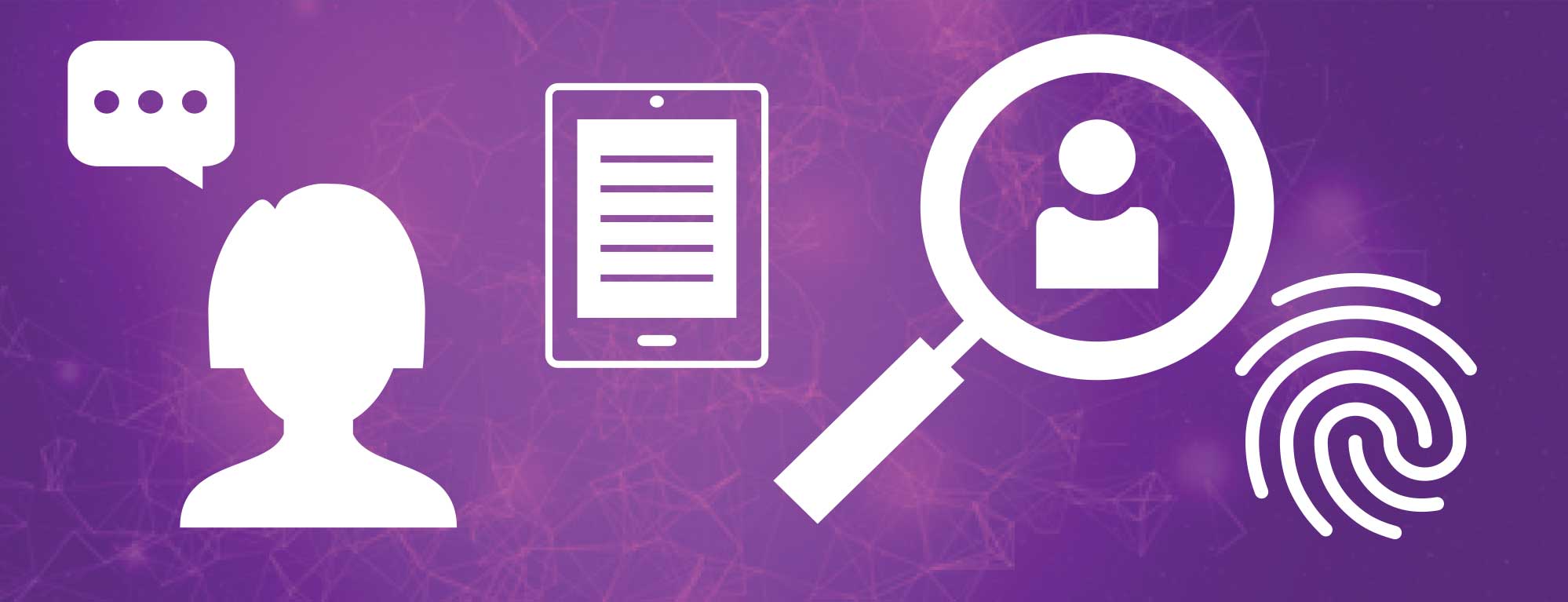
1. IMPLEMENT COMPETENCY-BASED LEARNING
Reference the “Parent and Family Digital Learning Guide” for help empowering parents to understand and take advantage of the benefits of digital learning.
Digital learning can support competency-based education, in which students advance after demonstrating mastery of a key skill or concept. In a competency-based system, students work individually and in teams to continuously learn content and develop skills (e.g., communication, critical thinking, problem solving, creativity) and receive timely, differentiated support based on their individual needs. In this sense, competency-based education enables personalization and learning continuity, regardless of location.
- Design learning outcomes that emphasize higher order thinking skills that promote student independence and creativity, prepare students for college, career, and lifelong learning.
- Commit to ensuring that all students —including students from low-income families, students of color, students with disabilities, and English Learners (ELs)—are able to demonstrate mastery of content.
- Identify that competencies include explicit, measurable, and transferable learning objectives.
- Evaluate whether additional best practices, supports or resources are available and needed for your students to address any learning loss or gains that may have occurred, and to mitigate future learning loss and build upon gains.
- Develop clear and transparent expectations for student performance to demonstrate mastery and put mechanisms in place to establish consistency in advancement.
REFLECTION QUESTIONS: PERSONALIZE LEARNING FOR STUDENTS
- What policies and practices will support your competency-based learning system?
- When making instructional plans, how are you making decisions with the most vulnerable populations in mind?
- What additional best practices, supports, or resources are available and needed for teachers and families to address any student learning loss or gains that may have occurred and to mitigate future learning loss, or capitalize upon any gains?
- What systems need to exist for leaders, teachers, and families in your school or school system to exchange best practices and resources regarding competency-based education?
- Has your school or school system communicated and connected teachers, parents, and families to those best practices, supports, and resources?
- The Aurora Institute: Introduction to Competency-Based Education
- The Aurora Institute: Quality Principles for Competency-Based Education
- U.S. Department of Education: Competency-Based Learning or Personalized Learning
- National Conference of State Legislatures: A Look at Competency-based Education in K-12 Schools
2. ASSESS STUDENT LEARNING IN REAL-TIME
Quality assessments help teachers gain feedback about what their students are really learning. Real-time, meaningful assessments enabled by technology—whether graded, non-graded, in—class activities, or student self-assessments—are an integral component of personalized learning. Assessments also inform students on their own progress and advise parents and teachers how to best support student learning.
- Coach teachers to check for understanding using frequent formative assessments.
- Identify adaptive software that will provide the student with immediate feedback to support progress.
- Confirm assessment software is compatible with assistive technology used by students with disabilities, including screen reader software.
- Adopt grading systems that are aligned to personalized learning paths, separate behaviors from academics, and encourage students to engage in additional practice until they demonstrate mastery of a concept.
- Identify or design diagnostic and summative assessments that can be used in school or at home.
- Identify other assessments to address learning losses or gains, and intentionally address needed innovation in ongoing practices and assessments to mitigate any future learning loss or build upon any gains.
- Timing and methods of student assessments and grades;
- Use of online engagement to assess student progress;
- Approach to supporting students who are not on track to meet grade-level standards and benchmarks; and
- Collection of data for accountability purposes, ensuring that metrics used to measure student engagement do not violate applicable privacy policies.
REFLECTION QUESTIONS: ASSESS STUDENT LEARNING IN REAL-TIME
- What are your school’s or school system’s expectations for assessment, grading, and feedback?
- How will you equitably accommodate students with limited access to internet, devices, or a proctor?
- What other assessments are needed to identify learning losses? What innovation in ongoing assessments is needed to mitigate future learning loss?
- What existing summative and formative assessments can be used in a digital learning environment?
- What new assessments may be needed? How can you access or develop such assessments?
- To what standards of evidence, validity, and reliability are your assessments bound?
Communicate:
- How will you communicate expectations clearly with teachers, students, and families?
- Center for Assessment: Competency-based Assessment
- The Aurora Institute: Competency Based and Standards Based Assessment
- Data Quality Campaign , Alliance for Excellent Education , and Collaborative for Student Success : Measuring Growth in 2021 , joint resource
- U.S. Department of Education: Fact Sheet on the Impact of COVID-19 on Assessment and Accountability under the Elementary and Secondary Education Act
3. SUPPORT LEARNER VARIABILITY
An important consideration for planning and implementing effective digital learning is the selection of EdTech products that support the full diversity of learners, including, but not limited to, students with disabilities and ELs. Assistive technology software and systems, for example, can increase font size, dim distracting background text, translate text to speech, or provide closed captions to aid students with disabilities. For ELs, many programs integrate translation and interpretation tools or provide rich imagery or video resources to support linguistic development and comprehension.
Students with Disabilities
Federal law prohibits discrimination on the basis of disability. Websites and apps used in schools must be accessible or, if necessary, schools must provide equally effective alternate access.5 The Office for Civil Rights (OCR) at the U.S. Department of Education has recognized this definition: “‘Accessible’ refers to information or technology that, at a minimum, affords a person with a disability the opportunity to acquire the same information, engage in the same interactions, and enjoy the same programs and activities as a person without a disability in an equally effective and equally integrated manner, with substantially equivalent ease of use.”
- Ensure appropriate parental consent frameworks are in place under the Individuals with Disabilities Education Act (IDEA), and the Health Insurance Portability and Accountability Act (HIPAA) if the school will be billing Medicaid for services.
- Establish effective communication and engagement with parents throughout the Individualized Education Program (IEP) process.
- Support holding IEP team meetings and 504 team meetings remotely with all team members, including special educators and parents.
- Work closely with school counselors to address that schools provide mandated counseling and psychological support in the manner written in students’ IEPs using remote tools.
- Ensure that students with disabilities have access to instructional materials, accommodations, scaffolds, or assistive technologies that are tailored to their specific needs as identified in their IEP. Look for tools made available either by your state, or through the National Center on Accessible Education Materials , or the National Library Service for the Blind and Print Disabled .
English Learners
Several federal laws and court rulings require school systems to ensure that ELs and students from immigrant backgrounds have equitable and meaningful access to education, including grade-appropriate content and instruction. States must demonstrate that ELs are developing English language proficiency in addition to grade-level content. Existing law provides room for flexibility in how schools meet the needs of ELs, and with the correct resources and practices, digital learning experiences can support ELs in powerful ways.
- Identify tools and resources that are designed to support language development through challenging and grade-appropriate content, translation, text to speech, and other audiovisual supports.
- Continue to identify and assess EL students to confirm they receive adequate language instruction and grade-appropriate content.
- Communicate with parents in their preferred language and make free translation and over-the-phone interpretation services available for students and families.
REFLECTION QUESTIONS: SUPPORT LEARNER VARIABILITY
- Are your selected devices compatible with assistive technologies used by students with disabilities?
- Are you prepared to deliver IEP and 504 services to students with disabilities?
- Are you prepared to deliver services to ELs?
- Do teachers and families have access to appropriate accessibility technologies, including for translation, and know how to use them?
- What are the roles of special educators in digital learning experiences?
- United States Government Accountability Office (GAO) Report to Congress (GAO-21-43): Distance Learning: Challenges Providing Services to K-12 English Learners and Students with Disabilities during COVID-19
- Digital Promise: Learner Variability Project: Factors and Strategies to Support Diverse Learners
- National Center on Accessible Education: Resources for Access and Distance Education
- TNTP: At-Home Supports for English Language Learners and Multilingual Learners
- U.S. Department of Education Office of Elementary and Secondary Education: Providing Services to English Learners During the COVID-19 Outbreak Fact Sheet
- U.S. Department of Education Office for Civil Rights: Limited English Proficient (LEP) Parent Rights Fact Sheet
- U.S. Department of Education Office of Special Education and Rehabilitative Services: Questions and Answers on Providing Services to Children with Disabilities During the COVID-19 Outbreak
- U.S. Department of Education Office for Civil Rights: Fact Sheet: Addressing the Risk of COVID-19 in Schools While Protecting the Civil Rights of Students
- U.S. Department of Education Office for Civil Rights Office of Special Education and Rehabilitative Services: Supplemental Fact Sheet Addressing the Risk of COVID-19 in Preschool, Elementary and Secondary Schools While Serving Children with Disabilities
- U.S. Department of Education Office for Civil Rights: Questions and Answers for K-12 Public Schools In the Current COVID-19 Environment
The success of students has always been dependent upon a strong partnership of schools and school systems with their parents as the primary educators of their own children. It is crucial for you and your teachers to proactively and effectively communicate with—and empower—parents and families so students’ needs can be met. In particular, the support of student health and wellness is critical as the implementation, expansion, and/or change of the digital learning environment occurs during school closures, hybrid learning, and limited openings.
1. INFORM AND EMPOWER PARENTS AND FAMILIES
As a school or system leader, one of your most important roles is establishing two-way communication with parents and families. Families are essential to the long-term success of their student’s digital learning, often assuming the role of a coach, facilitator, or tutor. Additionally, parents and guardians are partners in ensuring devices get charged, are cared for, and are used in responsible ways. Effective communication about digital learning will establish that parents and families are informed and engaged and trust the decisions that education and school leaders are making.
- Establish norms for staff members on how and when to communicate with students, parents, and families, including guidance on the primary tools and methods for communication. Confirm staff members are utilizing tools for listening to the ideas and concerns of parents and families and that parents and families understand that, while educators will use a variety of tools, they will not be constantly available.
- Establish scheduled check-ins, especially during school closures. For example, teachers in Richland School District Two (South Carolina) have “office hours” at designated times during the week for all teachers to be able to check and respond to emails or arrange to talk via telephone or video chat with parents and families.
- Use multiple communication platforms that are familiar to students, parents, and families including recorded videos, phone calls, video conferencing, social media apps, and texting apps. Identify that communication platforms are accessible to students, parents, and families with disabilities and to ELs and Limited English Proficient parents and families.
- Create a central website for students, parents, and families to receive up-to-date information and resources. Confirm that the site is mobile-friendly to accommodate families that access the internet via smartphones. For simplicity and ease of access, use a single platform across all schools and programs in a school system.
- Establish the understanding with your teachers that parents, as the primary educators of their children, need and rely on effective, responsive, and timely communication from teachers and staff to promote and support student success.
- Provide communications with staff, students, and families that are authentic and model a positive and hopeful tone to improve the emotional state of your learning community.
- Create models for communicating with parents about specific learning outcomes, expectations, and resources available, recognizing that parents may not have access to personal leave or other time off to work with their children.
- Provide information about access to free translation and over-the-phone interpretation services.
- Inform families about how to be digital partners, including sharing best practices on proper care and maintenance of the device, screen time practices, online safety, and digital citizenship.
- For parents and families of students with disabilities, provide training sessions to support their children’s needs and requirements at home, including occupational or physical therapy services that require in-person care.
REFLECTION QUESTIONS: INFORM AND EMPOWER PARENTS AND FAMILIES
- How have you empowered parents and families to ask for help and give feedback to support their child’s learning at home?
- What languages are spoken in your community and what translation services should you provide?
- Do you set the expectation with teachers and staff that parents, as the primary educators of their children, need and rely on effective, responsive, and timely communication from teachers and staff to promote and support student success?
- Have you properly communicated the potential and importance of digital and virtual learning to parents and families?
- Who is communicating with parents and families and how? Which communication methods have the most success?
- Which parents and families have not been reached and why?
- U.S. Department of Education: Parent and Family Digital Learning Guide
- TNTP: Engaging Families Virtually
- Learning Heroes: Parent-Teacher Planning Tool
- The IRIS Center, Vanderbilt University’s Peabody College: Parents: Supporting Learning During the COVID-19 Pandemic . The IRIS Center is funded through a cooperative agreement with the U.S. Department of Education, Office of Special Education Programs (OSEP).
2. SUPPORT STUDENT HEALTH AND WELLNESS
Schools are important community spaces and play a pivotal role in the social development and mental health and well-being of students. In a digital learning environment, it is important for school leaders and digital learning leadership teams to consider how to effectively leverage technology, partner with parents, establish safeguards, and build safe and supportive communities.
In addition, the potential impact of the various fully virtual or hybrid distance learning environments on children should also include considering how to explicitly support the social and emotional health and wellness of students.
Teachers can deploy a number of strategies to meet the individual needs identified in their students, which may include the following:
- Set up weekly check-ins or office hours for teachers; include the option for brief, consistent “wellness checks.” Safeguards to prevent teacher over-extension should be explicitly planned at the school or school system level, acknowledging that teachers may have competing demands for their time during school closures or limited school openings;
- Create virtual teacher lounge hours or professional learning networks for educators to discuss concerns and share best practices;
- Establish consistency and routines for teachers by sharing a clear daily and weekly calendar and learning goals with parents and families; and
- Allow for flexibility in schedules and lesson plans, with the understanding that teachers may have varied access to technology and competing responsibilities.
For students:
- Recommend that teachers work to intentionally carve out time so students may personally connect with each other to meet social needs;
- Establish that each student within the school has at least one designated staff member who will maintain contact with the student, touching base with them and their families during times of school closures or limited school openings (for example, see how Rocketship Education and Phoenix Union High School District (Arizona) connect and engage with students and families); and
- Schedule fun, shared experiences for students and educators that are authentic to your school community, such as shared read-aloud, themed lunches, maker sessions, or online fitness classes.
For parents and families:
- Provide school or school system contacts, guidance, and resources in multiple languages to all families for supporting the social and emotional health and wellness of their children and themselves, including information on mental health services;
- Connect all families with community supports and resources (e.g., share information in multiple languages about resources for times of uncertain economic situations, such as American Job Centers or unemployment offices in their city or state); and,
- Use McKinney-Vento homeless liaisons and foster care liaisons to continue to identify and serve homeless, at-risk, and foster care students and to maintain the positive relationships students have established with school staff.
REFLECTION QUESTIONS: SUPPORT STUDENT HEALTH AND WELLNESS
- Does your school or school system have a well-articulated plan to address the social and emotional health and wellness of students in collaboration and partnership with parents?
- Are your teachers implementing innovative practices to reach and engage students, and provide students the opportunity to engage with one another?
- How are you and your digital learning leadership team ensuring that students, parents, families, and teachers feel safe and connected to their school, one another, and school-based resources?
- How will you connect students, parents, and families with services outside of school to support their social and emotional health and wellness?
- The Yale Center for Emotional Intelligence: Managing Anxiety Around COVID-19
- TNTP: Schedule Guide for At-Home Learning
- Institute of Education Sciences: Supporting the Social and Emotional Needs of Educators and Students: Skills for Now and Planning for When Schools Reopen
- Institute of Education Sciences: IES Expands Research in Social Emotional Learning
- Institute of Education Sciences: Measuring Social and Emotional Learning in Schools
LEAD THE WAY FORWARD
Rising to the educational challenges of the moment requires an understanding of how to deploy EdTech, adapt curriculum and assessments, and authentically engage students in learning while remaining focused on their health and wellness. It also demands partnering with parents, while connecting families with an array of school-based and community resources so their students stay safe, get educated, and remain supported.
The payoff for leaders who innovate and collaborate with teachers in their schools and school systems will be a stronger, safer, and more successful student population that is more prepared for continued digital learning, in school and at home; possesses ongoing resiliency; and has greater transition and workforce readiness.
The path forward for success in digital teaching, learning, and assessment for schools and school systems across the country will be established by leaders who, themselves, learn.
LEGAL DISCLAIMER
This document contains resources that are provided for the user’s convenience. The inclusion of these materials is not intended to reflect their importance, nor is it intended to endorse any views expressed, or products or services offered. These materials may contain the views and recommendations of various subject matter experts as well as hypertext links, contact addresses, and websites to information created and maintained by other public and private organizations. The opinions expressed in any of these materials do not necessarily reflect the positions or policies of the U.S. Department of Education. The U.S. Department of Education does not control or guarantee the accuracy, relevance, timeliness, or completeness of any outside information included in these materials. For the reader’s convenience, this document contains examples of potentially useful information of trade names, commercial products, commodities, services, or organizations. Inclusion does not constitute an endorsement nor a preference for these examples, as compared with others that might be available and be presented, by the Department or the U.S. government. Additionally, the discussion herein does not imply an endorsement of any curriculum or learning model. The Department does not in any way direct or control any curriculum or learning model.
- ESSA Handbook, ISTE (2017). Retrieved from: https://cdn.iste.org/www-root/Libraries/Documents%20%26%20Files/Advocacy%20Resources/handbook-essa.pdf
- Closing the K-12 Digital Divide in the Age of Distance Learning, Common Sense Media. (2020). Retrieved from: https://www.commonsensemedia.org/sites/default/files/uploads/pdfs/common_sense_media_report_final_7_1_3pm_web.pdf
- Glimpse K12 Analysis of School Spending Shows that Two-Thirds of Software License Purchases Go Unused (05, 2019). Retrieved from: https://www.glimpsek12.com/blog/schoolsoftwarespending
- The Role of Research in K-12 District Decision Making (n.d.). Retrieved from: https:// symposium.curry.virginia.edu/wp-content/uploads/2017/06/WG-A-The-Role-of-Research-in-K-12-District-Decision-Making_FINAL.pdf
- Unless otherwise noted this guide does not address schools’ responsibilities to provide services or modifications to students with disabilities under the Individuals with Disabilities Education Act (IDEA), Section 504 of the Rehabilitation Act of 1973, or Title II of the Americans with Disabilities Act (ADA). Information about the IDEA is available at https://osepideasthatwork.org/ . Information about Section 504 and Title II is available at https:// www2.ed.gov/about/offices/list/ocr/504faq.html .
Appendix A: Planning Resources
1. form a digital learning leadership team.
A helpful practice is for leaders to select a team of key personnel to make foundational decisions about digital learning within their school or school system. A strong team can handle many responsibilities, including sharing research, setting strategy, monitoring progress, addressing concerns, collecting ongoing feedback, and communicating key information.
It is important that the team represents a diverse array of stakeholders. A professional in your organization may have the skills, expertise, and time necessary to excel in one or more of the roles defined below, or you may need to reach outside of your organization for such skills, expertise, or time.
There are multiple national, state, and local non-profit organizations that set standards and provide resources to support digital learning. However, each leader has discretion on whether and how to create a team and resource it to meet the needs and requirements of your organization. Functional roles on such a team may include:
REFLECTION QUESTIONS: FORM A DIGITAL LEADERSHIP TEAM
- Who has the skills to plan and implement the various components of a digital learning plan, including conducting a needs assessment, vision setting, planning and logistics, communications, budgeting, technology deployment, and teaching and learning?
- Who has diverse perspectives on digital learning, including an understanding of varied teacher, student, and family experiences?
- What template is most helpful to support your planning efforts (note: many examples are available online)?
2. SELECT TEACHING AND LEARNING LEADERS
Teaching and learning leaders can expect to administer a needs assessment, provide professional learning, train teachers in the use of new tools and resources, create guidelines and training on digital citizenship, and plan for long-term sustainability of the digital learning program. Examples of teaching and learning leaders are:
- Grade level or content team leaders
- Librarians and media specialists
- Special educators or bilingual educators
- Assistive Technology (AT) specialists
3. CONDUCT A NEEDS ASSESSMENT
If established, the digital learning leadership team should complete a needs assessment, use it as a guide to monitor progress, and maintain it as a living document. Members of the leadership may also gather input from other staff and community members to address that the needs assessment is as thorough as possible.
The following may be considered essential components of a comprehensive needs assessment. For many components, schools can start with existing resources, policies, and procedures and expand or modify them. This will significantly reduce the amount of work required and remove some barriers to gaining support and approval.
- Focus Areas: These are categories of tasks needed to implement a digital learning program. Factors may coincide with the sections of this guide and include: planning, technology infrastructure (devices and internet access in school, at home, and throughout the community), technical support, professional development, teaching and learning tools and resources, and communication.
- Factors: These are key components of a digital learning program that will inform readiness and provide on-going success. In each section of this guide, you will see “Guiding Strategies” that can be used as factors in a needs assessment.
- Score: Each factor should be scored to keep the leadership team updated on its status.
- The Florida Center for Instructional Technology: Technology Integration Matrix (TIM)
- The Aurora Institute: Learning Continuity Readiness Assessment
- Michigan Virtual: Teaching Continuity Readiness Rubric
4. DESIGN SYSTEMS TO COLLECT AND IMPLEMENT FEEDBACK
In tandem with the needs assessment, the leadership team can design systems to monitor progress and make continuous improvement towards stated goals. Feedback is a key component of this process. From the beginning, the leadership team can plan on how it will deliberately gather stakeholder feedback throughout the implementation process and communicate progress toward meeting its goals with teachers, parents, families, and students.
- Align data collection with stated goals.
- Identify key questions to answer, data and evidence to measure progress, and methods to intentionally gather data.
- Design a system that can disaggregate data by stakeholder and category.
- Make feedback public to key stakeholders and available in multiple languages.
- Accept input and varied perspectives for making progress.
REFLECTION QUESTIONS: DESIGN SYSTEMS TO COLLECT AND IMPLEMENT FEEDBACK
- What early indicators can you gather about what is working and not working for students, parents, families, and teachers?
- When you see gaps in access to the resources, how will you respond?
- Educause: Survey Kit for Remote Learning Experiences
5. BUDGET AND FUNDING
Implementing digital learning requires strategic short-term and long-term planning and budgeting work, including analyses of available human, financial and technical resources. Based on the data from the needs assessment, it may be necessary for leaders to identify secure funding streams to purchase devices, provide maintenance and technical support, and hire or train personnel. The Office of Educational Technology within the U.S. Department of Education has compiled a list of federal funds tthat school system superintendents and school leaders can apply to digital learning. Additionally, leaders should investigate the existence of state grants and examine existing budgets to identify ways to finance learning technologies and supports.
REFLECTION QUESTIONS: BUDGET AND FUNDING
- What is the financial investment necessary to work toward every child and family having access to a device and high-speed internet connection?
- Where is additional funding available to support devices and home internet access?
- What budget lines can be reduced once transitioned to virtual learning?
- U.S. Department of Education: Education Stabilization Fund Discretionary Grants
- U.S. Department of Education: Keep Calm and Connect All Students blog series
- State Educational Technology Directors Association (SETDA): Budgeting Guidance
- Future Ready Schools: Budget and Resources Self-Assessment
ACKNOWLEDGEMENTS
This work was developed under the guidance of senior staff in the U.S. Department of Education, Office of Educational Technology, with technical support from Pia Dandiya, Jessenia Guerra, Michael Ham, Kevin Johnstun, and Maile Symonds and contributions from Digital Promise.
The team extends their thanks to a Technical Working Group of education leaders and researchers who provided valuable insights and examples from their experience (listed in alphabetical order by last name):
- Jose Blackorby, CAST
- Jered Borup, George Mason University
- Linda Burch, Common Sense Media
- Jon Deane, GreatSchools
- Pete Just, Metropolitan School District of Wayne Township
- Sarah Pottle, The New Teacher Project
- Beth Rabbitt, The Learning Accelerator
- Justin Reich, Massachusetts Institute of Technology
- Valerie Truesdale, American Association of School Administrators

Amazon.com Conditions of Use Amazon Privacy Policy © 1996- 2024 Amazon.com, Inc. or its affiliates
International sites
November 12, 2019
Written by Amazon Staff
Helping teachers buy and sell digital educational resources

How it works
Sign up for the weekly amazon newsletter.
Protected by reCAPTCHA. The Google Privacy Policy and Terms of Service apply.
Amazon Privacy Policy | Opt out anytime

- Grades 6-12
- School Leaders
Get our FREE Field Trip Reflection printable 🦁!
350+ Amazing Online Learning Resources
There are so many ways to extend classroom learning.

With school districts starting the 2020/2021 school year online, parents and teachers are continually looking for online learning resources. Teachers have been tasked with delivering lesson plans and classroom activities as part of distance learning. Parents are trying to keep students on track with their studies and educational growth. We are here to help! This growing list offers a wealth of resources for all ages of students, parents, and teachers!
- Elementary Online Learning Resources
- Middle and High School Online Learning Resources
K-12 Online Learning Resources
Remote learning and virtual classroom platforms, professional development & training, online resources for kids in grades k-5.
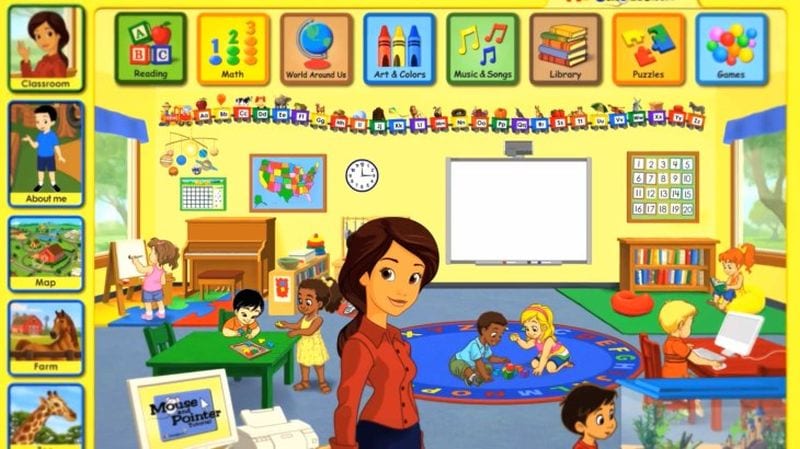
These sites have ready-to-use lesson plans and activities for a vast amount of subjects for younger students.
ABCmouse Early Learning Academy
- What It Is: This comprehensive program covers a wide variety of subjects for students aged 2-8 (Pre-K through second grade). It offers more than 850 self-guided lessons across 10 levels. A companion program focuses on teaching English as a second language for this age group.
Adventure Academy
- What It Is: This MMO game gives kids something other online learning resources may lack: a sense of community. Students up to age 13 play games to learn across a range of topics (math, reading, social studies, science, and more), while also creating their own online persona and interacting with others in the game.
Aperture Education
- What It Is: Aperture Education is providing free Social and Emotional Learning (SEL) Growth Strategies for educators and parents.
- What They’re Offering: Both are accessible online for free here- Aperture Education .
AWE Learning
- What It Is: Pre-loaded digital learning solutions for early learners, ages 2-12.
- What They’re Offering: Free printables for parents and students to use at home.
ASL Literacy Activities
- What It Is: Daily free resources and activities in American Sign Language and English, for young deaf children ages 3-10. They offer weekly activities based on their award-winning VL2 Storybook Apps to support bilingual language development. It is run by Motion Light Lab , part of a research center on Visual Language and Visual Learning at Gallaudet University.
- What They’re Offering: Free access to Motion Light Lab’s award-winning VL2 ASL Storybook Apps . Every week, the Motion Light Lab offers a free Storybook App which includes daily offerings in ASL and English, live storytelling “sign aloud” on Mondays, and an ASL/English literacy lesson live-streamed every Wednesday on YouTube featuring deaf narrators and accompanying worksheets for a deeper dive into each story.
Beanstack Distance Learning Reading Challenge
- What It Is: Zoobean’s new Beanstack Distance Learning Reading Challenge, sponsored by Lerner Publishing Group, promotes independent student reading through the use of best-in-class digital learning resources with free access to the Lerner™ Sports Database, featuring athlete biographies using digital literacy tools that correlate with curriculum standards.
- What They’re Offering: Zoobean and Lerner invite all interested school districts to participate, even if they are not current customers of either organization; free product licenses will be provided for those that need them. In addition, Lerner pledges to donate new books to the winning institutions upon completion of the challenge.
Bamboo Learning
- What It Is: Free, voice-based educational applications for students in grades K-5 (available on all Alexa devices, including Fire tablets, Echo Dot, Echo Show, and Fire TV) that promote active conversational learning, cover a range of academic subjects (math, ELA/listening comprehension, social studies), and focus on fun, home-based, family-friendly learning.
- What They’re Offering: Free voice-based resources to help students in the areas of language development and listening comprehension, mental math, and social studies. Parents can use a web-based dashboard (Bamboo Grove) to follow their children’s progress.
- What It Is: A math platform for Grades 1-6 that makes learning fun and personalized. Teachers and parents are able to track student progress remotely and quickly identify learning gaps.
- What They’re Offering: Boddle’s math game platform is available at no cost to educators, parents, and students dealing with school closures due to Covid-19.
Boreal Tales
- What It Is: A literary and artistic creation platform designed to motivate school students to write. Aimed at Grades 1-8, Boreal Tales also allows teachers to track student progress and give specific, personalized feedback.
- What They’re Offering: Free trial.
- What It Is: BrainPop offers in-depth learning on topics across the curriculum for upper elementary and middle school students. Each topic includes videos, quizzes, related reading, and even coding activities. Teachers have access to planning and tracking resources too. They also offer BrainPop Jr. , specially designed for younger kids.
- What They’re Offering: All schools get free access to their COVID-19/coronavirus online learning resources for talking to students about the topic.
Breakout EDU
- What It Is: Breakout EDU uses online games to bring the fun of escape rooms to learning across the elementary curriculum.
- What They’re Offering: They’ve put together a list of free online games kids can play at home. Click here to see them.
Brookes Publishing
- What It Is: Resources to help early childhood, special education, and communication & language professionals during this time of uncertainty.
- What They’re Offering: A number of free resources as well as a thrice-weekly chat with various authors and education experts.
Carrot-Top Educational Resources
- What It Is: Educational Resource Worksheets in PDF format that can be downloaded by students and teachers who are working from home.
- What They’re Offering: Resources are always free!
Carson Dellosa Education
- What It Is: Products that inspire learning moments at school, at home, and everywhere in between.
- What They’re Offering: Free educational resource worksheets, activities, and readers in PDF format that can be downloaded by parents and teachers.
The Character Tree
- What It Is: A character education video subscription series for K-2 students that highlight positive character traits, exemplified by prominent figures.
Classroom Champions
- What It Is: A nonprofit and charity, Classroom Champions connects volunteer Olympians, Paralympians, Student-Athletes, and Professional Athletes to K-8 classrooms through a social and emotional based curriculum and mentorship experience.
Clever Tykes
- What It Is: Entrepreneurial storybooks and resources for 6-9 year-olds, inspiring positivity, innovation, independence, resilience, and resourcefulness.
- What They’re Offering: Free printable activity packs full of activities like word searches, coloring pages, and puzzles, all while exploring the entrepreneurial lessons of the Clever Tykes books
- What It Is: A fun and educational game-based environment where kids learn to code without any prior experience. After completing CodeMonkey’s award-winning coding courses, kids will be able to navigate through the programming world with a sense of confidence and accomplishment.
CreositySpace
- What It Is: A unique inquiry-based, learner-directed science curriculum that connects ALL K-5 students to science and capitalizes on their creativity and curiosity at a time when they ask, “What do I want to do when I grow up?”
- What They’re Offering: CreositySpace is providing lessons from their Contagion Crushers, Water Watchers, and Conscientious Chemists units at no cost to help support teachers, parents, and guardians to keep all kids engaged in science.
Curriculum Associates
- What It Is: Curriculum Associates is offering printable activity packs and guidance for educators and student families to support learning at home. The content, which is available for Grades K-8 for both reading and math, comes in both English and Spanish.
- What They’re Offering: Free printable activity packs.
- What It Is: Virtual Manipulatives are a great way to enhance at-home learning. Simply drag the manipulatives into position to see math concepts come alive!
- What They’re Offering: Free resources and Downloadable Activities .
- What It Is: Digital activity packs help take children beyond the book, engaging with their imagination and creativity as they color, draw, play, and write.
- What They’re Offering: Free resources for teachers and parents.
- What It Is: edHelper is online service that provides printable worksheets to teachers and homeschooling parents.
- What They’re Offering: EdHelper is providing daily free workbook pages for grades K-6. Click to see the offering today !
Educational Insights
- What It Is: Educational Insights is providing families with activities and printables that spark children’s curiosity and helps keep their education moving in the right direction. The educational toy company has also partnered with Mensa for Kids to provide even more valuable resources to support learning through play in areas such as STEM, reading and creativity.
- What They’re Offering: Thousands of FREE games, printable worksheets, DIY ideas and crafts, as well as daily uploads of “Home’s Cool with Educational Insights,” a video series on fun, educational activities for parents to recreate at home with household items.
- What It Is: Turn writing assignments into something amazing with the illustrations, animations, and sound effects available. Kids can even write their own choose-your-own-adventure story!
Emotional ABCs
- What It Is: This research-based emotional skills program is designed for children ages 4-11 and gives kids practical tools for dealing with impulse control, frustration, and acting out. Emotional ABCs teaches children how to figure out what they’re feeling, why they’re experiencing that emotion, and how to make better choices for lifetime emotional resilience.
Essential Skills
- What It Is: Online K-6 reading, math, and ELL programs that can be individualized to the needs of each student. It includes pretests, custom teacher assignments and automatic tracking of student results.
- What They’re Offering: A free, no-obligations 45 day trial period.
- What It Is: Three beta-stage eLearning tools from the scientists in their R&D division to help improve reading, writing, and English language speaking skills.
- What it is: FabuLingua teaches Spanish through interactive stories on mobile phones and tablets. Their unique method is designed to introduce the new language in a way that subconsciously develops the child’s ear, comprehension, and reading skills. They offer a new charming interactive story from Latin America or Spain every month, along with associated games and a Magic Sticker Book where they get to create their own compositions.
- What They’re Offering: FabuLingua is offering a free trial period and reduced subscription rates to all new members. Click here from your mobile device to go straight to the app or download them from the App Store or Google Play.
First In Math
- What It Is: First in Math is a supplemental, online math program that allows children to practice MATH! More than 200 self-paced, grade-level math games help stimulate curiosity and foster creativity in ways that help children make sense of the numbers, patterns, and shapes they see in the world around them.
- What They’re Offering: First In Math is available to School Administrators and Teachers. Learn more here- First In Math
- What It Is: These online learning resources for younger students are easily differentiated for students of different ability levels.
- What They’re Offering: Adaptive math and ELA courses are always available for free for teachers and students. Sign up here- Freckle
Funexpected Math
- What It Is: Funexpected Math is an interactive application for kids aged 3-7 featuring a growing collection of math-related games that teach various types of thinking and improve learning skills. The app provides a fun and engaging way to introduce fundamental math ideas early and ensure kids are comfortable with math.
- What They’re Offering: Free desktop version of the Funexpected Math application along with a variety of free printables.
Generation Genius
- What It Is: A science teaching resource that brings school science standards to life through fun and educational videos paired with lesson plans, activities, quizzes, reading material, discussion questions, and more.
- What It Is: GFletchy offers a large assortment of 3-Act tasks, math progression videos, and innovative ways to engage with students.
- What They’re Offering: Always free.
- What It Is: Using multimedia Interactive Posters, students can express ideas with ease by combining images, graphics, audio, video, and text on one digital canvas!
- What It Is: Math and literacy content for kids in grades K-5, designed to engage kids without support from parents.
- What They’re Offering: Free daily content including streaming video lessons, taught by teachers, directed towards kids in grades K-5, for both math and literacy. Also find downloadable activities and STEM resources.
Happy Numbers
- What It Is: Happy Numbers helps teachers deliver quality math instruction, monitor progress, and math growth—all remotely. Students can access Happy Numbers from any Internet-enabled device (even a smartphone!).
- What It Is: An online K–5 reading program that adapts to the needs of the individual student. It is self-paced, which makes it ideal for at-home practice.
- What They’re Offering: Free product trials and samples along with introductory discounts.
Hearbuilder
- What it is: HearBuilder, from Super Duper Publications, is an online, research-based, foundational literacy program. It helps students in PreK-Grade 5 strengthen skills in the essential pre-literacy areas of following directions, sequencing, auditory memory and phonological awareness.
- What they’re offering: HearBuilder is available free for 60 days. Teachers, parents and therapists can access self-directed activities and short and targeted tasks for students, as well as tools to monitor student progress. HearBuilder is accessible at school or during distance learning.
Highlights for Children!
- What It Is: Highlights @ Home is a new, free service for families and teachers that delivers themed content bundles twice a week from the well-known children’s magazine creator, Highlights.
Holiday House
- What It Is: Online resources complete with educator guides, lesson plans, and activity sheets.
- What They’re Offering: Free access to their wide array of resources to parents and teachers.
- What It Is: HOMER is the #1 reading program in Apple’s app store for kids 5 & under. It provides kids with a personalized learn-to-read plan offering thousands of lessons on phonics, sight words, ABCs and more, growing with children from age 2-8. In just 15 minutes a day, HOMER Reading has been proven to increase early reading scores by 74%.
- What They’re Offering: HOMER is available for a free 30-day trial, after which a subscription is required.
- What It Is: This program is designed to teach elementary-aged kids the computer skills they need. It’s specifically aligned to learning standards in the UK, but the skills apply to students everywhere.
- What They’re Offering: iCompute is providing a variety of resources created by their in-house author suitable for children ages 4-11.
iknowit.com
- What It Is: iknowit is a site with over 500 common-core aligned activities and math games for students in the elementary grades. The site keeps track of progress, offers graphical hints and explanations, and there are also animated characters to cheer students along.
- What They’re Offering: A free 30 day trial with unlimited access and no credit card required.
Inclined2Learn.com
- What It Is: A platform for reading comprehension passages and skill assessment in early education and home schooling.
John F. Kennedy Center for the Performing Arts
- What It Is: Entirely free digital arts education resources for students of all ages from the nation’s performing arts center.
- What They’re Offering: Lesson plans, virtual field trips, articles, activities, and videos—carefully curated for educators, families, and students.
- What It Is: A digital Social Studies learning tool for elementary students funded by the Library of Congress.
- What They’re Offering: 8 interactive “episodes” designed for children in Kindergarten-5th grade to engage in age appropriate historical inquiry. KidCitizen is always free to use and works on PCs, Macs, tablets, and Chromebooks.
Kids Discover Online
- What It Is: This library of science and social studies articles allows differentiation by reading level, so you can use these articles for various age and skill levels.
- What They’re Offering: Free access to over 30 units and 200 topics along with subscription plans for at-home, homeschool, and in-school packages.
- What It Is: They offer a K-2 literacy program, with a strong focus on phonics and comprehension.
- What They’re Offering: They have unlocked all parts of their premium program to be entirely free for teachers.
Land of Tales
- What It Is: The Land of Tales’ Movie Books allow young readers to live the magic of their favorite 3D animated tales. The growing Movie Book collection includes classic and original tales, professionally narrated with soothing background music that will enhance children’s listening skills, improve their vocabulary and pronunciation, and foster their imagination and creativity. For younger children, Tales to Watch offer a unique selection of short animated and musical fairy tales.
- What They’re Offering: The Movie Books, Tales to Watch, illustrated tales, and children’s novels are available for free at the link above. You can also download on Google Play or the App Store .
Learning Resources
- What It Is: Through the Learning Resources website, families with kids as young as 18 months old can discover a wide variety of easy-to-implement, hands-on activities — whether they’re working on their ABCs and 123s, trying to keep up with classwork, or focusing on learning language or reading.
- What They’re Offering: 2500+ FREE activities, workbooks, games, and DIY activities by age/grade and subject.
- What It Is: LearnToMod allows students to learn coding through the modding of the popular video game, Minecraft. LearnToMod contains hundreds of coding exercises and puzzles for students to solve in the context of their favorite video game.
- What They’re Offering: LearnToMod is offering free teacher accounts for its Minecraft Modding software. The free teacher account allows teachers to give students free access to LearnToMod, organize students into classes, and spin up Minecraft servers for their students to code. Students need a paid copy of the game Minecraft in order to get the full experience from LearnToMod, but for students without accounts, there is a free, in-browser Minecraft simulator that students are able to mod.
- What It Is: With their #LetsBuildTogether program, LEGO is helping families and fans unite with joyful moments and positive experiences.
- What They’re Doing: For families at home they have entertainment and learning content, including daily build challenges and fun LEGO lessons.
- What It Is: Literably is a reading assessment for K-8 students that identifies A-Z reading levels, diagnoses skill gaps, screens students for reading difficulties, and monitors progress. Their web and iOS apps record students reading out loud into a device as well as answering several comprehension questions allowing instructors to review the capabilities of their students.
- What They’re Offering: Literably offers 10 free assessments per month, plus a 2-week whole-class free trial.
- What It Is: MentalUP is a UK-based award-winning scientific-educational application containing cognitive learning games for K-8 learners.
- What They’re Offering: Free online subscriptions.
- What It Is: MetaCoders is a nationwide, non-profit coding education group that normally teaches after-school programs, camps, and workshops through the United States.
- What They’re Offering: MetaCoders is offering daily coding lessons to beginner through intermediate coding students of all ages. Curricula in these lessons cover everything from computer science concepts to thinking like a coder.
Mentoring Minds
- What It Is: Mentoring Minds impacts millions of students every day by partnering with principals and teachers across the country to improve student achievement and teach critical thinking. Find educator resources that focus on the 9 traits of Critical Thinking.
- What They’re Offering: Free coloring book in English and Spanish , as well as a new animated video series .
- What It Is: Mindsets Live Classes and Open Math Challenges help teachers & families keep learning going in math, science, & STEAM with fun and creative real-world problem-solving.
- What It Is: This popular differentiated learning site provides instruction across a wide array of elementary subjects. Available for at-home instruction and classroom instruction, online training on effectively using the site is also available.
Musical Explorers
- What It Is: A free music curriculum from Carnegie Hall, Musical Explorers is a one-stop shop for all the resources you need to bring cultural diversity to your classroom—through real artists who share authentic music from their cultures.
- What They’re Offering: Resources are always free. Learn more here- Musical Explorers
Mystery Science
- What It Is: Mystery Science offers digital video mini-lessons for science subjects K-5.
- What They’re Offering: Mystery Science is always free, but they’ve put together a special list of lessons grade-by-grade that are perfect for tackling remotely. Find it here.
- What It Is: Authentic content turned into learning materials that are classroom-ready for teachers of all subjects and grades.
- What They’re Offering: Newsela is making their entire product suite freely available to teachers and districts, and has published free distance learning resources. Access to products and resources are available at the Newsela coronavirus resource center.
ORIGO Education
- What It Is: ORIGO Education is offering a collection of free math learning resources to support teachers, parents, and caregivers as they strive to keep students engaged and continually learning. ORIGO at Home features free weekly digital plans for home use. These weekly plans contain activities for each day, along with digitally accessible or downloadable resources, designed for delivery by a parent, caregiver, or remote teacher.
- What They’re Offering: Free resources for learning elementary math at home.
- What It Is: PebbleGo offers safe, interactive online research resources on topics selected by their teachers for students K-3.
- What It Is: Penworthy is dedicated to promoting children’s literacy by helping schools and libraries build collections that circulate and endure.
- What They’re Offering: Coloring pages, mazes, word games, simple crafts, and easy-to-follow activity guides are free for teachers to use for children PK-6th grade.
- What It Is: Hands-on, minds-on learning can happen anywhere and everywhere. If you’re looking for STEMspiration because of an unexpected homeschooling need, you’re in the midst of an uncommon education experience, or you just want to have some STEM fun, Pitsco has great resources that are always available for free.
- What It Is: Get game-based learning in math for kids from first to eighth grade. The site offers lots of how-to articles to make distance learning effective and fun.
- What They’re Offering: The basic Prodigy site is always free. Sign up here- Prodigy
- What It Is: Puku is a great way to keep kids engaged and learning vocabulary at home, and parents will feel good about giving their kids quality screen time.
- What They’re Offering: Puku offers a free 7 day trial; you can also extend the learning with these free corresponding vocabulary activity sheets .
Purple Mash
- What It Is: This British company’s site hosts games and creative learning opportunities for elementary level math, spelling, and writing. Teachers can set daily tasks for students, create a blog, and find other ways to communicate.
- What They’re Offering: Purple Mash is offering free extended 30 day trials here along with various free resources on their website.
Reading Eggs
- What It Is: Serving a wide range of children ages 2-13, Reading Eggs has created a fun, interactive, and award-winning reading program that over 10 million parents trust to help teach their children to read!
- What They’re Offering: A free 30-day trial of their program as well as hundreds of free educational printouts on their website.
QuaverMusic
- What It Is: QuaverMusic is a world leader in online curriculum development for grades Pre-K to 8.
- What They’re Offering: QuaverMusic offers K-8 general music teachers a platform to stay connected to their students, no matter where they are. Along with a free 30-day trial ( learn more here- QuaverMusic ), QuaverMusic offers free resources and a free webinar series to help instructors keep class moving and stay connected to students.
- What It Is: ReadingIQ is a comprehensive digital library offering books, magazines, comics, and more for kids from ages 2-12. It’s a smart replacement for library time right now and makes it possible for teachers to monitor what and how much their students are reading.
- What They’re Offering: Age of Learning offers a free 30 day trial and discounted annual subscription rate.
Reading Horizons
- What It Is: Teachers and parents can keep their child’s reading instruction moving forward with Reading Horizons’ library of virtual webinars and lessons. Past webinars such as Best Practices for Virtual Reading Instruction will be available on-demand on YouTube, as well as upcoming webinars revolving around student progress monitoring in a virtual setting.
- What They’re Offering: Resources and their Online Professional Development Course for free!
- What It Is: Produced by RedRover, Kind News magazine is a Parent’s Choice Approved Award winning children’s magazine that inspires readers to explore the relationship between people and animals. It includes engaging articles, colorful illustrations, activities, and games to help kids explore the relationship between people and animals and develop knowledge and skills necessary for empathy and kindness.
- What They’re Offering: KindNews.org includes free lesson plans, links to past issues, and humane-themed books.
RV AppStudios
- What It Is: Kids apps for math, reading, tracing, and more.
- What They’re Offering: Downloads of RV AppStudios apps are free!
- What It Is: Scholastic created the Scholastic Learn at Home website to provide students with an array of learning journeys that span various content areas. Subscriptions include several learning opportunities per day, including projects based on articles and stories, virtual field trips, reading and geography challenges, and more.
- What It Is: Seekadoo is a safe, kid-friendly search engine app for children ages 3-13. Seekadoo’s content database is carefully curated to ensure appropriate material for children and integrated ad-blocking eliminates tracking and monetization of children’s data so their digital footprints remain private.
Seussville.com
- What It Is: Welcome to the wonderful world of Dr. Seuss! Seussville includes multiple sections, including one area dedicated to the parents of small ones, full of activities, crafts, and printables. In the Educator section of Seussville, there are resources for supplemental activities for Art, Science, Math, Social Studies, and Language Arts.
- What They’re Offering: Resources are always free, and more are being added regularly. Other areas of the site offer children the opportunity to explore Dr. Seuss books and characters, play games, and watch video clips.
Simple Solutions
- What It Is: Educational activities that can be done in mere minutes! Topics include reading, science, social studies, study skills, and problem solving.
- What They’re Offering: Simple Solutions provides their wide variety of resources at no cost.
- What It Is: Smartick is an intelligent, app-based, e-Learning program that teaches children Math and Coding – from the comfort of home – in 15 minutes per day. The program focuses on Math and Coding, but also develops a child’s critical thinking faculties through a series of complex logic and reasoning exercises built into the programs self-generating, adaptive curriculum. The technology developed by Smartick uses self-learning artificial intelligence to regulate and continuously adapt to each child’s individual academic level, curating a curriculum specifically and uniquely designed for each learner.
- What They’re Offering: Smartick offers a free trial, after which a subscription is required.
Sparky Schoolhouse
- What It Is: Brought to you the NFPA, find lessons, videos, and games providing kids with information about fire prevention and safety.
- What They’re Offering: Sparkly Schoolhouse resources are free and include lesson plans for K-2 and 3-5 .
SplashLearn
- What It Is: Curriculum aligned, game-based learning in math for kids from Kindergarten to Grade 5. It is an excellent tool for teachers to assign math practice for remote learning. It also comes with Clever, PowerSchool, and Google rostering capabilities that allow schools and districts to adopt easily.
- What They’re Offering: SplashLearn is free for teachers and will remain so even after the COVID-19 crisis is over.
Square Panda
- What It Is: The Square Panda Smart Letters playset engages children’s tactile and kinesthetic as well as visual and auditory senses, because neuroscience shows that early readers learn best in a multisensory environment.
Studies Weekly Online
- What It Is: A Utah-based educational company that creates customized, standards-based curriculum for Social Studies and Science, founded on integrated learning strategies that increase student knowledge, skills, and dispositions.
- What They’re Offering: They are providing Studies Weekly Online to all schools as a free trial online. The online platform includes all student editions, Teacher Editions, lesson plans, English Language Arts integrations, customizable assessments, and pairs with the company’s periodical-based printed materials.
- What It Is: An online learning tool which provides personalized math and spelling practice. It adapts questions to each student, using engaging games and rewards for effort and achievement to build their confidence, and is proven to accelerate progress. Teachers can set focused work to consolidate existing knowledge and get real-time feedback on each individual child, making it an ideal home learning tool.
Super Duper Digital Library
- What it is: Super Duper Publications has created an online library of its most popular print materials to provide access for teachers and parents doing distance and hybrid/blended learning.
- What they’re offering: The Super Duper Digital Library is available at a discounted rate of 199.95 for an annual subscription or $19.95 for a monthly subscription. It provides more than 365 standards-based online resources (with more being added daily) for students PreK-Grade 5. Resources include unique, engaging instructional games, cards, and worksheets to target specific skills, such as basic concepts, literacy, grammar, social skills, critical thinking, sequencing, listening, early skills, articulation, phonemic awareness, memory, motor skills, sensory integration, phonics, reading, and more.
Super Star Online
- What It Is: Super Star Online, by Help Me 2 Learn, is a supplemental reading, phonics, and math program featuring a wide variety of songs, interactive activities, and games in an engaging and easy-to-use format. Features include the Super Star Motivational and Data Tracking System.
Super Teacher Worksheets
- What It Is: Super Teacher Worksheets has tens of thousands of printable teaching resources for Kindergarten through 5th grade teachers and parents working with Pre-K through 5th grade students. Topics include math, reading, writing, phonics, grammar, spelling, science, and social studies.
Teach Starter
- What It Is: Easily download ready-to-use, Common Core aligned teaching resources expertly designed for Pre-K to 6th grade school teachers and their students.
- What They’re Offering: Various free instruction packets and resources along with a discounted annual subscription rate.
- What It Is: Keep learning going whether your student is at home or in school. Terrapin offers several resources students can use to capture the excitement of robots and coding without leaving home.
- What They’re Offering: Free coding robot apps and age-targeted STEM Activity Workbooks.
TheaterWorks Anywhere
- What It Is: A digital series that aims to give young people a fun and active way to use their imaginations while learning about the process of creating theater.
Tinkergarten
- What It Is: Educational activities designed for learning at various ages and requiring only basic household items.
- What They’re Offering: Free DIY activity plans, advice, and a virtual community to help the whole family continue to get outside and learn during this challenging time.
Top Score Writing
- What It Is: A nationwide writing curriculum designed for teachers, administrators, and parents. It takes away the stress of finding and developing a curriculum for their students.
Trend Enterprises
- What It Is: Printables for home.
- What They’re Offering: Free learning activities and DIY projects .
The TV Teacher
- What It Is: A program for PreK-1st grade students and those with special needs to learn to write their letters, numbers, and shapes using fun visuals, rhythmic chants, and repetition.
- What It Is: Tynker offers a complete online computer coding curriculum for students K-8. Teachers can get free lessons, projects, and more on the site.
- What They’re Offering: Create a free account as a student, parent, or teacher with access to a set number of activities, then subscribe for full access.
- What It Is: A web-based keyboarding program that teaches students how to type and has unique transdisciplinary Common Core and NGSS aligned content provided through its lessons.
Virtual Field Trips
- What It Is: Virtual Field Trips specializes in K-8 social studies, life science, geography, and ancient civilization curriculum content. Their website has online learning videos and quizzes along with a list of the national and state Standards that the videos align with.
- What It Is: An easy-to-use platform designed to empower K-8 students to master math content at their own pace.
- What It Is: Vooks is a streaming library of ad-free, kid-safe animated read-aloud storybooks, trusted by teachers and enjoyed by millions of children around the world every week. It is an entire library of storybooks, brought to life, to help encourage the love of reading.
- What They’re Offering: Vooks has created take-home lesson plans that can be shared with parents and guardians — built to provide children with 20 minutes a day of read-aloud time and activities. Vooks is offering a free one-year membership to all teachers and a one-month membership for parents .
Workout Skills Review & Practice
- What It Is: Workout Skills Review & Practice workbooks will guide children through grade appropriate review and practice in English and Math. Available for grades 3-8.
- What They’re Offering: School Specialty is providing unrestricted free access to their Workout series designed for grades 3-8 in both reading and math. Broken down into lessons, each Workout provides effective review and practice on grade-level concepts. Download any and all workouts and their matching answer keys.
WriteReader
- What It Is: WriteReader increases students’ digital writing skills significantly in only six weeks. Teachers can also remotely provide feedback to students and have them engaged with meaningful writing activities.
- What They’re Offering: Free basic level membership with subscription upgrades available.
- What It Is: A nonprofit organization dedicated to math achievement for all with activities for achieving math fact proficiency.
- What They’re Offering: Membership is always free.
Zaner Bloser
- What It Is: Suggestions and practice to strengthen kids’ fundamental literacy skills, ideas to entertain and engage home-bound students, and alternatives to the usual screen time activities.
- What They’re Offering: Free downloads and recommended sites.
- What It Is: Top-rated math content available via online or paper-based materials that can be used without a device. Zearn also contains extensive distance learning resources created to support educators and parents/caregivers in getting started quickly. Webinars, video tutorials, and step-by-step guides on their Distance Learning Center are also offered through the website.
- What They’re Offering: Their entire K-5 math program — including 400 hours of digital lessons with on-screen teachers and supportive remediation — is available for free, thanks to donations from the community.
Online Learning Resources for Grades 6-12
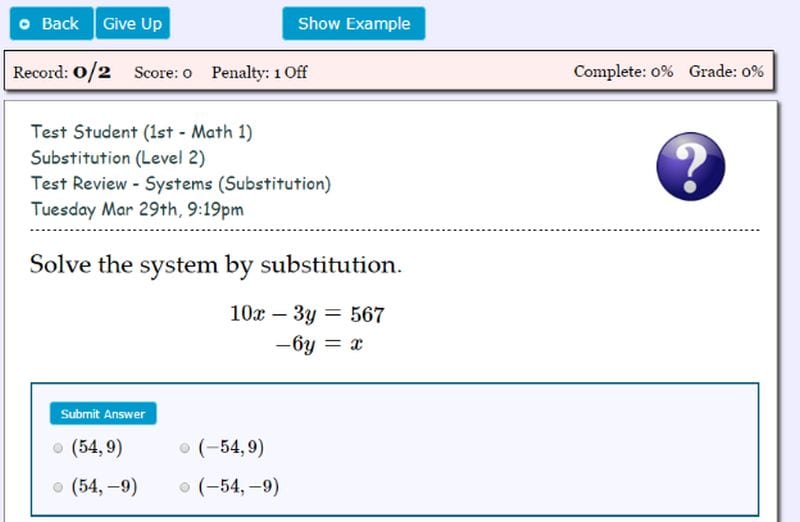
Use these ready-to-implement resources in your virtual classrooms for older learners.
- What It Is: AI4ALL Open Learning empowers high school teachers (of all subjects!) to bring AI education to their classrooms through a free, adaptable AI curriculum.
- What They’re Offering: The AI4ALL Open Learning curriculum includes ExploreAI (an introduction to AI), Sentiment Analysis + Natural Language Processing, and a special lesson on COVID-19 & AI. Each Unit comes with detailed Unit Plans and Facilitation Guides as well as Online Engagement Strategies for adapting the curriculum to a temporary online classroom setting. Additionally, there are online forums where you can join online discussions of questions posed in the curriculum or create new discussions.
- What It Is: Albert is an online practice and assessment resource for core topics in grades 6-12. Teachers can assign modules and track student progress. Albert’s online learning resources include practice questions for a wide variety of AP programs too. It’s best used as a companion to other online teaching methods like web conferencing as it’s meant to review information students have already been learning.
- What They’re Offering: Albert offers a free 30-day pilot program.
Arbor Scientific
- What It Is: A leading provider of Physics and Physical Science teaching equipment tested and approved by educators recognized for their expertise.
- What They’re Offering: Free resources being offered by Arbor Scientific include a collection of video resources created by the best science educators from across the country demonstrating how to teach really cool science concepts in your classroom or remotely, a collection of free questions on basic physics concepts to give to your students by renowned physics teacher Paul Hewitt, and much more!
Areteem Zoom International Math League (ZIML)
- What It Is: Zoom International Math League (ZIML) is an educational program to help students expand their mathematical problem solving by practicing every day.
- What They’re Offering: ZIML features free Daily Practice Problems (Daily Magic Spells) at varying levels, including full solutions and an archive of past problems. Other practice resources include discussion forums, math competition mock exams, and monthly contests. Teachers can learn more here- (ZIML) .
BBC My World Media Literacy
- What It Is: BBC Learning and Microsoft Education, in partnership with BBC World Service, deliver a powerful media literacy initiative for educators and students ages 11 through 14, designed to help students determine fact from fiction in the news.
- What They’re Offering: This suite of standards-aligned resources includes 10 lesson plans with curriculum extensions, 10 dynamically produced video segments from BBC World Service, and a professional development introduction video to help educators kick start the use of the My World education element in their classrooms. Access standards-aligned educator resources for FREE in the Microsoft Educator Center , and view complete BBC My World episodes on the My World YouTube channel .
Beast Academy Online
- What It Is: A complete web-based math curriculum designed to help students ages 8-13 deepen their understanding of math.
Bio-Rad Explorer
- What It Is: Extensive curated collection of resources on various biology, biotechnology, and life science topics and lab techniques.
- What They’re Offering: Free online and remote learning resources including videos, editable presentations, case studies, open-access articles and literature, paper activities, and bioinformatics activities.
Carnegie Learning
- What It Is: Math lessons, skills practice resources, and at-home learning videos for grade 6-12 students.
Carnegie Speech
- What It Is: NativeAccent delivers spoken English skills practice with targeted feedback to students on their computers and mobile devices using advanced speech recognition and A.I. technologies.
ChemMatters Online
- What It Is: This is a terrific resource for middle school and high school science teachers. Each issue provides a new collection of articles on chemistry topics that students will find engaging and relatable. The back-issue online library offers interesting downloadable articles on all sorts of chemistry-related topics, while the Teacher’s Guides help you direct your students as they learn from their reading.
- What They’re Offering: These online learning resources are always free for everyone. Learn more here- ChemMatters Online
Close Up Foundation
- What It Is: A nonprofit, nonpartisan civic education organization that educates and inspires young people to become informed and engaged citizens. Drawing on their issue-centered methodology, nonpartisan approach, and expertise in facilitated discussions, Close Up provides educators with virtual and in-person programs, innovative professional development, and engaging classroom resources.
- What They’re Offering: Free classroom resources and on-demand professional development .
The Coding School
- What It Is: Software engineers from some of the leading technology companies, including Google, Facebook, and Amazon, are volunteering their time to help students learn how to code while schools are closed.
Create with Code Live
- What It Is: Free, interactive virtual classes open to students, teachers, and anyone else interested in learning to code in a fun and engaging manner through game development. The program is aligned to ISTE Standards for computer science education.
- What It Is: DeltaMath is a website that allows teachers to assign math practice content to their students from middle school through AP calculus. Students get immediate feedback as they complete the problems.
- What They’re Offering: DeltaMath is always free. Check it out here.
Esri GIS for Schools
- What It Is: GeoInquiries™ are free, standards-based, online explorations of maps and data about a wide variety of content plus an initial introduction . Any school can also request a free account with logins for teachers and students, so they can create, save, and share content, with free Mapping Hour videos to instruct teachers and parents.
- What They’re Offering: Free online content and accounts for schools on an interactive mapping platform. Learn More .
Everydae SAT Prep
- What It Is: Everydae is an online SAT math prep program. 10-minute micro lessons match busy schedules. Built by industry experts with 17+ years industry experience.
- What It Is: The site offers live streams, trivia battles and Q&A forums where students can connect directly with teachers across 15 different AP subjects within English, STEM, History, and Social Sciences.
- What They’re Offering: Free social learning platform for students and teachers.
- What It Is: Teaches STEM and STEAM with a game design focus. GameSalad is best suited for 6th grade and up depending on student readiness. Detailed instructions for students and full lesson plans for teachers make a great introduction to coding.
Gleeditions Literary E-ditions
- What It Is: For high school-college educators and students, Gleeditions features online e-texts and curated videos of classic favorites, ancient to modern.
- What They’re Offering: In addition to a free trial of their Academic Edition, Gleeditions is offering access to popular titles in their Multigenre E-text Collection and Video Library (carefully curated clips/full performances).
Glose Education
- What It Is: An inclusive social reading platform where teachers and students can read and learn together.
- What They’re Offering: Free collection of over 4,000 classic books.
GSD Network
- What It Is: A great resource for engaging students in cross-cultural, “real-world” stories of teens from around the world. Best for grades 7-9 (but can be used grades 10-12 too), they delve deep into the heart of far-flung places to explore local history, culture, and teens creating social change in their communities. Great for social studies (covers many standards) or Language Arts classes (reading and vocab).
- What They’re Offering: Two full unit curricular programs (2-3 weeks each) or short stories featured in their E-Magazine (1-2 day activities). Learn more here- GSD Network
HippoCampus
- What It Is: Find more than 7,000 videos in 13 subject areas to share with your students. Teachers can set up playlists for their students too.
- What They’re Offering: HippoCampus is always free to use. Sign up here- HippoCampus
- What It Is: U.S. Supreme Court Justice Sandra Day O’Connor founded iCivics in 2009 to transform the field through innovative, free educational video games and lessons that teach students to be knowledgeable, curious, and engaged in civic life. Today, iCivics is the nation’s largest provider of civic education curriculum, with our resources used by over 113,000 educators and more than 7.1 million students each year nationwide.
- What They’re Offering: iCivics is always free to use. Learn more here- iCivics
- What It Is: A unique cultural immersion resource for Spanish, French and German language learning for grades 6-12. iCulture offers travel videos, day in the life videos, current news articles, and songs that are all 100% target language, age and school appropriate, and include topics of interest to teens and young adults.
Intelligent Education
- What It Is: Provides more than 30 premade courses in a variety of topics taught by expert, credentialed educators for use either as primary or supplemental education. These courses are aimed at high schoolers and up. Topics include biology, history, the arts, and more (even AP calculus!). All are full eight-week courses, but can be viewed as individual lessons.
- What They’re Offering: Free services available.
Island Press
- What It Is: There’s a climate crisis and education can help fix it. Island Press began with a simple idea: knowledge is power — the power to imagine a better future and find ways for getting us there.
- What They’re Offering: Since being founded in 1984, Island Press’ mission has been to provide the best ideas and information to those seeking to understand and protect the environment and create solutions to its complex problems. It is in that spirit that they offer more than a dozen important e-books for free.
- What It Is: Kialo Edu is a custom version of kialo.com, the world’s largest argument mapping site. It includes unique features, such as the ability to write student feedback.
- What They’re Offering: Kialo Edu is always completely free for educators, has no advertisements, and can be integrated into learning management systems.
- What It Is: A free platform where students and teachers can discover, create, and remix content to build their own learning journey. The content library contains high-quality digital resources from universities and scientific organizations worldwide … including interactive lab simulations, videos, assessments, and more. With private classes, messaging, and mentorship functions, educators can easily plan and deliver lessons, including teaching lab skills, virtually while connecting their students to a broader scientific community.
- What They’re Offering: LabXchange is always free for all users. To support educators in transitioning to online learning, educators can explore remote learning resources and sign up for a free webinar .
Learning.com
- What It Is: A hub of opportunities for both parents and educators focused on digital literacy, coding, and computational thinking. Find lesson plans covering a range of digital literacy and computational topics, full access to the EasyCode Foundations (CodeMonkey) curriculum and the EasyCode Pillars Python Suite (Codesters) curriculum, and a list of open source lesson plans.
- What They’re Offering: Free resources.
- What It Is: Mangahigh is a popular game-based site for math online learning resources. It covers algebra, geometry, statistics, and more.
- What They’re Offering: Mangahigh is offering free full access to any school shut down during the outbreak. Learn more here- Mangahigh
- What It Is: Microburst Learning creates highly interactive approaches for professional and technical development!
- What They’re Offering: Microburst is offering FREE content for distance learning. The free content includes an activity to help students develop their planning and organizing skills as well as the “Why Soft Skills” Lesson.
- What It Is: Muzology harnesses the power of music to make math fun and accessible.
- What They’re Offering: FREE for teachers and students affected by Covid-19 closures.
National Constitution Center
- What It Is: The NCC offers Exchange programs for middle school and high school students. Scholar Exchanges are live virtual conversations where students learn about constitutional issues, while interacting with a constitutional scholar, historian, or judge. Teachers can also sign up for Classroom Exchanges where classes interact directly with classes across the United States to practice civil dialogue skills and learn how the constitutional issues impact them.
- What They’re Offering: NCC Classroom Exchanges are always free.
OpenSciEd
- What It Is: OpenSciEd offers middle schoolers (grades 6-8) science materials that are aligned to college and career standards.
- What They’re Offering: OpenSciEd’s materials for middle schoolers are accessible online at the link above and are customizable to your class’s needs.

Popfizz Computer Science
- What It Is: Popfizz CS is a computer science education platform for grades 6-12. Popfizz offers a wide range of online student courses and professional development for educators.
Project Exchange
- What It Is: Project Exchange runs a 12-week online cultural exchange program to help middle & high school students around the world broaden their worldview and practice English skills. Students are matched with a partner from a different country and practice English and learn about culture together!
- What They’re Offering: Free to participate.
- What It Is: An AI writing platform that has a paraphrasing tool and a summarizer . The website is building a full suite of online writing tools to aid any type of writer.
- What They’re Offering: All their tools are easily accessible on their website for free.
Read to Lead
- What It Is: RTL is a self-directed way that youth can engage in learning. In one episode of game play, youth will read 500 words, spend 20-30 minutes reading, practice reading comprehension, enhance vocabulary, and more!
- What They’re Offering: Unlimited free educator and student accounts as well as lesson plans, additional reading passages, and project based lessons.
ScienceMusicVideos
- What It Is: An interactive AP Biology course with engaging content and interactive activities in the form of quizzes and flashcards to provide immediate reinforcement of the material. Teachers can assign portions of the course to their students, and track their progress. Or students can work independently and track their own progress!
Science News
- What It Is: Science News for Students and the Science News in High Schools Digital Library includes experiments and more than 200 original STEM-related exercises.
- What They’re Offering: Free, age-appropriate STEM resources for students from 5th through 12th grades, suitable for learning from home.
- What It Is: They use neuroscience and AI to help students learn 2x faster across 400+ free & exam board-specific courses.
- What They’re Offering: They offer a free teacher platform that allows teachers to set assignments and monitor students’ progress.
- What It Is: Thousands of free study guides, test prep, and video learning resources.
- What It Is: Turnitin is your partner in fostering original thinking and supporting authentic learning. Turnitin solutions promote academic integrity, streamline grading, and improve outcomes across disciplines.
- What They’re Offering: Turnitin always offers free academic integrity-related classroom resources like the Source Credibility Guide and Paraphrasing Pack, as well as on-demand webinars like Teaching Time Management to 6th – 12th Graders.
UL Xplorlabs
- What It Is: UL Xplorlabs is an educational platform designed to encourage middle school students to solve through science. The program showcases the science behind safety engineering through interactive videos, instructional experiences, hands-on classroom activities and creative challenges.
- What They’re Offering: UL Xplorlabs resources are always free.
- What It Is: An online learning tool for high-stakes exams.
- What They’re Offering: A free, full-length PSAT practice exam that familiarizes students with the format and content of the real test. Each question answered will provide the student with a detailed explanation of the answer choices to help students actively learn and retain concepts.
Vernier Software & Technology
- What It Is: Resources include free trials to Vernier Video Analysis™ and Pivot Interactives, the Vernier Physics with Video Analysis e-book and extended demo of the LoggerPro software needed to complete the experiments, Scratch coding activities, experiment content and access from ADInstruments and LabArchives, and more than 200 experiments with sample data covering a large range of subjects. With these tools, teachers can help students form a deep understanding of key scientific concepts outside the classroom and laboratory.
- What It Is: VidCode is an online coding and computer science curriculum specifically for teens. It teaches JavaScript, web programming, design, and more.
- What It Is: SAT and ACT vocabulary prep through story form.
- What They’re Offering: An entire freebies section that includes games, vocabulary-boosting short stories, and more.
A Wonder Story
- What It Is: A Wonder Story is an app with free online middle-grade chapter books. Readings are interactive, asking kids to solve mysteries and puzzles throughout the story. Immediate feedback and approachable text makes each book easy to read. These books are especially great for struggling readers.
- What They’re Offering: Teachers always get A Wonder Story free and families have access to several free options.
- What It Is: A course that provides the basic knowledge on the issues, challenges, and opportunities that people face in today’s connected world.
- What They’re Offering: Free course of multimedia modules that explains the fundamental concepts of international relations and foreign policy.
World History Digital Education
- What It Is: Working together, NCSS and WHDE have created a historical comparison of the Pandemic Flu of 1918, known as The Spanish Flu and Covid-19: Resources for Teaching the Covid-19 Pandemic.
- What They’re Offering: A free, three-day learning module is available here .
Zinc Learning Labs
- What It Is: Online close reading instruction, leveled authentic texts with comprehension quizzes, and gamified vocabulary for grades 6-12.
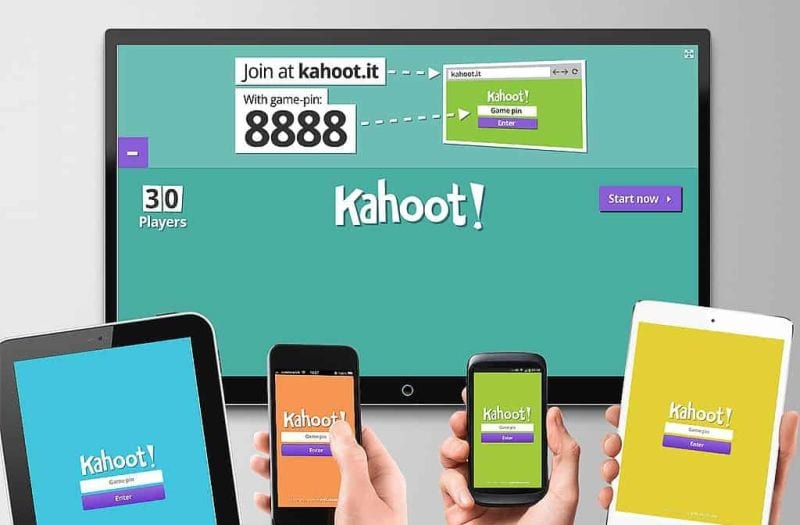
These sites have lesson plans and activities ready to go on a variety of subjects for any grade.
3P Learning
- What It Is: Their range of software allows you to find, set, and send activities to your students from anywhere — you just need a device and an internet connection.
- What They’re Offering: Free trials of their distance teaching software along with increased support to get schools up and running. Free weekly live webinars.
Achieve3000
- What It Is : A comprehensive suite of digital solutions that significantly accelerate literacy and deepen learning across the content areas.
- What They’re Offering: Achieve3000 Literacy at Home Digital provides access to engaging non-fiction articles at 3 reading levels. Sign up for a free account here . Additionally, they are offering Literacy Printable Packets for students who do not have internet access at home.
Actively Learn
- What It Is: Actively Learn works seamlessly with Google Classroom and provides thousands of engaging texts, videos, and simulations across ELA, Social Studies, and the Sciences paired with thoughtful instruction that challenge students and foster deep learning and critical thinking.
- What They’re Offering: Actively Learn is always free for teachers.
Anatomy in Clay
- What It Is: For over 30 years, the ANATOMY IN CLAY® Learning System has provided the most effective, informative and relevant anatomy education through the power of hands-on learning.
- What They’re Offering: Access to free resources and publications.
Aperture Education Back to School Guide
- What it is: Aperture Education has created a free Back to School Guide to help teachers support students’ social-emotional learning.
- What they’re offering: The free 2020 Back to School Guide contains more than 40 pages of downloadable resources and articles created by experts and SEL professionals to support SEL in the classroom, in the home, and during distance learning.
Arizona Science Center’s Online Learning Platform
- What It Is: Arizona Science Center offers more than 175 new online learning resources, including weekly lesson plans, videos, articles and activities. Sari on Science interprets what is happening in the changing environment.
- What They’re Offering: Their Blue Crew and educators from the Learning Team offer science content and inspiration on Facebook Live, featuring demonstrations, teaching tips and virtual learning best practices. They also provide professional development for educators every day via Google Hangouts.
- What It Is: A passionate group of educators who know that young students with exposure to the arts become more inspired, creative global citizens. The creativity of the next generation will shape the future, and this creativity begins with arts education in K-12 schools.
- What They’re Offering: Free Access for teachers to on-demand dance and theatre classes and resources from hundreds of world-renowned instructors like tWitch from The Ellen Show, Tiler Peck from New York City Ballet, Broadway professionals like Warren Carlyle, and more! Artful also has free classes that can be forwarded to students as part of online programs.
Ascend Math
- What It Is: K-12 personalized online math instruction that provides each student with a unique study path through skills at each level. Individual study plans are prescriptive, adaptive, and automatically assigned
- What It Is: Audible is the world’s largest producer and provider of spoken-word entertainment and audiobooks, enriching the lives of our millions of listeners every day.
- What They’re Offering: Audible is offering hundreds of free audiobooks for kids. Learn more here- Audible
- What It Is: Banzai is a financial education program that helps students learn the value of a dollar. There are real-life scenarios available in three interactive courses (3rd grade- 12th grade). The program includes tests, games, activities, an entire interactive library, embedded calculators, and more.
- What They’re Offering: Banzai meets all state curriculum standards and is completely free to use.
Big Timber Media
- What It Is: An eBook hosting platform for schools and libraries.
BIRDBRAIN Technologies
- What It Is: Explore robotics and computer science at home! With a robot or virtually.
- What They’re Offering: They are developing new classes each week, as well as professional development resources that will focus on remote & hybrid learning.
- What It Is: Bookshare is a FREE, federally funded library of 800,000+ accessible ebooks for students with reading barriers such as dyslexia, blindness, and cerebral palsy. The collection includes textbooks, educational materials, bestsellers, young adult, and children’s titles. Students can read on virtually any device in formats including audio, audio + highlighted text, braille, and large font.
- What They’re Offering: Bookshare is always free for schools and their qualified students with reading barriers
- What It Is: BoomWriter offers a variety of tools, features, and resources that lets teachers conduct fiction, nonfiction, and vocabulary-focused writing assignments. BoomWriter inspires students to write on any subject and integrates easily with existing curriculum. Try it for ELA, Social Studies/History, Science, and even Math.
- What It Is: Britannica LaunchPacks Social Studies and Science are now available, for free, to every school across the United States. LaunchPacks support virtual learning, independent study, and remote assessments across topics covered in the K-12 science and social studies curricula.
- What They’re Offering: Free, emergency support and virtual-learning classroom resources to every school.
bulb Digital Portfolios
- What It Is: A digital portfolio that allows students and educators to shape knowledge and ideas into practical, usable, and shareable work. With bulb, educators can track progress, measure competency, and create dynamic curricula or use one of their templates.
CAPIT Learning
- What It Is: A PreK-12 educational company that provides a supplemental, and highly differentiated literacy digital curriculum with demonstrated efficacy.
CCC! Streaming Media
- What It Is: CCC! Streaming Media helps students visualize printed text and aids their understanding of complex concepts. The content has been vetted by educators and aligned to Common Core and state standards, and is supplemented with Teacher’s Guides, Student Activities, and Knowledge Checks (quizzes).
- What It Is: Century was designed as an intervention tool to identify and remedy gaps in a student’s education. It uses artificial intelligence to tailor the learning experience to the learner, much like an actual teacher in the classroom would.
Challenger Center
- What It Is: STEM at Home is a collection of Challenger Center lessons and activities that can be modified and completed at home. Each STEM at Home category includes at least one at-home lesson. These activities require common household items or products that are readily available online.
- What They’re Offering: Their free STEM at Home lessons include flipped classroom videos, Teacher in Space Christa McAuliffe’s lessons filmed aboard the International Space Station, and hands-on activities.
CharacterStrong
- What It Is: Offers a K-12 social-emotional learning and character development curriculum and provides professional development training to help educators weave this work into the fabric of their schools.
- What They’re Offering: Free digital resources that can be used for remote instruction, including a virtual toolkit, digital student assemblies, a virtual Whole Child Summit, and a 30 Days of Kindness Journal.
- What It Is: This collection of online learning resources covers pretty much every topic. Lessons include reading, activities, videos, and more to engage students. They also have free online textbooks.
- What They’re Offering: CK-12 is always free for all users. Teachers can check it out here.
- What It Is: Classcraft helps teachers maintain student interest and keep on track to reach their goals with tools that motivate them in a digital environment.
- What They’re Offering: Classcraft is supporting educators in response to the coronavirus outbreak by offering free schoolwide licenses until the end of the school year, giving all teachers free access to Premium Quests (their popular tool for turning curriculum into a personalized learning adventure), free PD to help educators keep students motivated, and a free How-to guide on remote learning. Learn more- Classcraft .
- What It Is: ClassHook offers quality media clips on every conceivable topic. Pre-curated playlists make it easier to find what you need for the subject at hand.
- What It Is: This site offers literary and non-fiction reading passages for grades 3-12. Teachers can assign reading and follow-up questions and track student progress.
- What They’re Offering: CommonLit always offers free accounts for teachers to use with their students. Sign up here- CommonLit
Copyright & Creativity
- What It Is: A full suite of free, K-12 resources for teaching kids about copyright and fair use. Resources include lesson plans, slides, videos, and infographics.
- What They’re Offering: Free lessons and videos, along with teacher support.
- What It Is: Crabtree Publishing Company is dedicated to producing high-quality books and educational products for K-9+. Through their website, different selections of their books can be accessed along with free online resources that are included in a Crabtree subscription.
Critical Thinking Co.
- What It Is: The Critical Thinking Co. publishes award-winning PreK-12+ educational textbooks, activity books, e-books, and apps that help children become better problem-solvers. The approach is unique: help kids develop foundational reasoning & critical thinking skills while learning the core subjects (reading, writing, math, science, and social studies).
- What It Is: Curriki provides teacher-vetted, open-resource lesson plans and materials on a wide array of subjects. It’s a good place to find online learning resources for students to use at home.
- What They’re Offering: Curriki is always free to use. Sign up here- Curriki
- What It Is: Davis creates superior art curricula, engaging studio lessons, and valuable advocacy and classroom resources to power Art Educators. The digital platform is filled with a comprehensive collection of art lessons, studio experiences, and valuable resources for grades K-12. Davis Digital programs and resources are perfectly suited for teacher-guided, at-home learning, or self-guided exploration.
- What They’re Offering: Davis is offering FREE Open Access to the Davis Digital Platform for art educators in North America. Teachers may access all of the eBooks as well as the library of 25,000 fine art images. Additionally, for those that require it, Davis is offering use of generic student accounts that will allow students to access the content from any computer or tablet with an Internet connection.
Discovery Education
- What It Is: Discovery Education provides online textbooks, multimedia content, and professional development support for virtual classrooms and teachers. Daily DE offers supplemental learning activities, including virtual field trips and lessons, for both educators and parents that will update daily to align with a new educational theme.
EdTech Impact
- What It Is: EdTech Impact is a global search engine for finding the best education technology on the market, and the DfE recommended database has it so that all resources that are free are easily accessible for schools and parents alike.
- What They’re Offering: EdTech Impact is updating their database of edu-resources daily, and have added a huge range of filters and options, such as ‘duration of free access’, ‘subject’, and ‘category’, and have links to data privacy policies as standard.
Education Perfect
- What It Is: EP Classroom provides a wide range of customizable online learning experiences.
- What They’re Offering: Education Perfect offers a 14 day free trial and variable pricing depending on subject matter requirements.
- What It Is: NASA resources, online learning tools, engineering design, coding, virtual field trips and more!
- What They’re Offering: All free to access at home.
- What It Is: Designed for unlimited discovery and unmatched safety, Epic is the leading digital learning playground for kids. With tens of thousands of high-quality books, audiobooks and videos from the world’s best publishers, Epic reaches more than 20 million kids. No inappropriate content, ads or in-app purchases.
- What They’re Offering: Epic is always free for educators and provides a 30 day free trial for parents.
- What It Is: EVERFI offers courses for K-12 on real-world topics like mental health, financial planning, career readiness, and more.
- What They’re Offering: These courses are always free for educators and students. Learn more here- EVERFI
ExploreLearning
- What It Is: Innovative math and science online solutions that are fun to use and really work. Gizmos, Reflex, and Science4Us are used in classrooms in every state and over 50 countries worldwide.
Extreme Earth
- What It Is: Teaches facts about the planet using an interactive virtual globe built on CesiumJS.
- What They’re Offering: Free to view.
Flinn Scientific
- What It Is: Flinn Scientific has compiled many of their free activities, videos and other resources into one location for teachers to navigate through to help them as they teach science to students at home.
- What They’re Offering: Free online resources.
Flocabulary
- What It is: Hip-hop videos and instructional activities that promote literacy and spark creativity.
- What It Is: Follett offers over 1,000 PreK-12 titles in science, social studies, language arts, math, and more. AV2 World Languages features high-interest titles in 10 different languages with full audio support. Parents and students will find these resources interactive, easy to use and a great way for students to independently explore a new topic.
Free Math App
- What It Is: This no-frills site requires students to show their work on math problems, step-by-step. When it’s time to grade, you can take a look at their work to see exactly where things went wrong and correct problems quickly.
- What They’re Offering: As the title says, this site is always free for teachers and students. Check it out here.
Free Spirit Publishing
- What It Is: Free Spirit Publishing offers social and emotional learning resources for educators and parents to help support children’s mental health and well-being.
- What They’re Offering: Always free activities, reproducible forms, PLC/Book Study Guides, and leader’s guides from select titles, as well as access to on-demand professional development webinars and more than 1,000 articles with tips and tools for educators, counselors, and parents on the Free Spirit Publishing Blog.
- What It Is: Interdisciplinary, curriculum-aligned resources to support online learning from Pre-K through undergraduate; Live and on-demand training materials to help optimize existing resources; Professional development eBooks to help transition to and strengthen virtual learning and Authoritative Gale resources on health-related topics and global issues.
- What It Is: Turn learning into a game when you create online quizzes and learning experiences. Use their extensive question bank, plus upload your own as needed.
- What They’re Offering: Gamilab is always free for everyone. Sign up here- Gamilab
GCFLearnFree.org
- What It Is: This program has helped millions around the world learn the essential skills they need to live and work in the 21st century. From Microsoft Office and email, to reading, math, and more. Over 200 topics, 7,000 lessons, 1,000 videos, and 50 interactives and games, completely free.
- What They’re Offering: Free resources for students, parents, and teachers.
George Washington’s Mount Vernon
- What It Is: Digital Resources from George Washington’s Mount Vernon that can be incorporated into new online classroom settings.
- What They’re Offering: Primary and secondary sources, videos, games, quizzes, activities, and lessons that can be completed independently or as a group.
Get More Math
- What It Is: A math practice program for concept mastery and retention.
- What They’re Offering: Free, unlimited trial usage for schools until July 2021.
The Great Courses
- What It Is: An educational streaming video on-demand company. Courses that can be consumed via phone, laptop, TV, etc.
- What They’re Offering: They are offering free content during COVID-19 with courses ranging from math, history, languages and more.
GreasePaint Script House
- What It Is: Original, fully-customizable musicals that not only enhance Reading and Communication skills, but also employ Arts Integration and Social Emotional Learning to encourage strong character development both onstage and off.
Guilford Press
- What It Is: As a leading publisher of psychology, parenting, and education titles, Guilford Press is committed to offering support through their numerous online resources.
- What They’re Offering: A wide range of helpful free content, including audio, print, and video resources from their books, plus tips, resources, and blog posts from Guilford authors.
- What It Is: A website loaded with standards-aligned lessons, games, and activities that will keep K-8 students engaged while learning from home.r.
H2O For Life
- What It Is: Explore a variety of engaging lesson plans for students at every grade level. From science to math to music, students gain awareness for water in their community.
Health World
- What It Is: Online health and safety programming for elementary and middle schools.
- What They’re Offering: Programs for free to help support teachers online learning.
Healthy Relationships Curriculum
- What It Is: A highly adaptable program that teaches challenging life skills to school students with various special needs. The full program offers 39 lessons, 65 videos, visual components, and role plays around the topics of hygiene, social skills, relationships development, and health that can be implemented both virtually and face-to-face.
Houghton Mifflin Harcourt
- What It Is: Learning activities, lessons, downloadables, and videos for Grade K–12 kids
- What They’re Offering: Always free!
Illustrative Mathematics
- What It Is: Illustrative Mathematics has developed middle school and high school mathematics instructional materials available as open educational resources (OER) and free for anyone to access.
- What They’re Offering: As students shift to at-home learning, Illustrative Mathematics has developed a set of learning at home materials, including grades 6-8 math, 9-12 math, and K-12 math tasks.
InferCabulary
- What It Is: InferCabulary is a web-based, research-backed, device-agnostic, K-12, fun, game-based, visual approach for teaching nuanced vocabulary that simultaneously improves students’ critical thinking skills. InferCabulary is the opposite of rote memorization of definitions — they mimic the act of avid readership so students deeply learn words and improve comprehension.
- What It Is: inquirED believes in inquiry for all, and offers inquiry-based curriculum and professional development to help schools and districts make the shift to an inquiry-based model.
- What They’re Offering: inquirED has created Together When Apart — a free inquiry-based distance learning curriculum.
- What It Is: An online database of thousands of academic resources and activities, providing enrichment and learning strategies to K-12 students. Resources include all core subject areas, including Reading/Language Arts, Math, Science, and Social Studies/History.
- What They’re Offering: Completely free to parents and K-12 students and teachers. To access the free version of InSync visit the site and click on Sign Up at the top of the screen. Then choose the Student or Parent role and enter FREE as your Sign Up Code and you’re on your way.
Islamic Networks Group (ING)
- What It Is: For over 25 years, ING has supplemented education about Muslims and their faith, as well as studies on peoples of other religious and cultural backgrounds, in the context of social studies and world history content standards.
- What They’re Offering: Their free back to school toolkit provides teachers, administrators and parents with valuable resources including guest speakers via webinar, lesson plans, and recorded webinars for creating a diverse and welcoming community and fostering safe and inclusive classrooms.
- What It Is: Watch a video on a subject, then use the teacher guide for discussion, take a quiz, or use the other online learning resources provided.
- What They’re Offering: izzit’s online courses are free. Teachers can sign up for a free account here .
- What It Is: Do you Kahoot! Teachers have loved this fun online quiz game platform for years. Here’s why we’re into it.
- What They’re Offering: Kahoot! Basic is free for educators and students, but they’re also currently offering their Premium distance learning tools for free. Learn more here- Kahoot!
- What It Is: Kami is a PDF and document annotation app for schools. Think of it like digital pen and paper for interacting with your students.
- What They’re Offering: Kami is offering free access to schools. Contact them here.
Khan Academy
- What It Is: Khan Academy is well-known for providing an incredibly wide range of lessons for students at every level. Chances are you’ll find at least some of what you need for your virtual classroom here.
- What They’re Offering: Khan Academy is always free for all users. Sign up here- Khan Academy
Knowledge Unlimited
- What It Is: A weekly current events-based program. It presents engaging and important stories from around the world in a newsmagazine format.
- What It Is: An online core supplement for grades 1-12 that was designed to be used in classrooms to help teachers with increasing responsibilities and numbers of students.
- What It Is: Kognity has turned traditional textbooks into interactive online experiences with videos, animations, and automatically-corrected assessments.
- What They’re Offering: Kognity is offering a variety of resources to schools. Contact them here.
Kuder Galaxy and Kuder Navigator
- What It Is: Galaxy and Navigator are award-winning online career awareness, exploration, and planning systems for students in grades Pre-K through 12.
- What They’re Offering: Through https://www.kuder.com/success-at-home/ they are offering free system access for students; free downloads including lesson plans and activity sheets; and free and discounted professional development courses for teachers, school counselors, and parents.
Lead4Change
- What It Is: Based on the best-selling book, Taking People With You by Yum! Brands Co-Founder, Former Chairman and CEO David Novak, Lead4Change empowers students to act, serve, and make big things happen.
- What They’re Offering: Access is free and includes ready to use lessons, videos and resources
Learning Ally
- What It Is: Equitable access to the largest library of “human-read” audiobooks, including curriculum-aligned literature, fiction and nonfiction, and STEM textbooks. Multi-sensory reading accommodation is ideal for remote learning from any device.
- What They’re Offering: To keep students with reading deficits engaged in reading and learning, sign up for free access to The Learning Ally Audiobook Solution .
Learning Keeps Going
- What It Is: Learning Keeps Going is a diverse group of education organizations brought together by the ISTE/EdSurge team to curate, create, and deliver high-quality tools, resources, and support for educators and parents. They’ve gathered over 600 free, vetted resources and expert-sourced tools in one place that can be easily filtered by grade level, accessibility, languages, and areas of interest to match your needs.
- What They’re Offering: Free tech and resources for teachers and leaders.
Legends of Learning
- What is it: Legends of Learning offers 2,000 3rd through 8th grade games and simulations correlated to state standards. Using their various assignment options, teachers can create custom playlists, or have a playlist built for them with a top-rated game.
- What They’re Offering: In addition to all of its free games, Legends is providing its premium custom assessments, scheduling features, data/analytics, and training/support for all schools affected by closures for free for the rest of the year. Visit their site , with links at the top for both schools and parents.
Lerner eBooks
- What It Is: At the Lerner Bookshelf, they’ve set up two collections of eBooks (Grades PreK-5 and Grades 6-12) that allow for unlimited simultaneous access by every student in a school. They also offer reading book lists, videos, educational downloads, information on authors who are available for virtual visits, and more.
Lexile Word Lists
- What It Is: Lexile WordLists, based on the top science, math, social studies, and ELA textbook programs in grades 1-12, were created to address vocabulary gaps and prepare students for the academic words they will encounter in their learning.
- What They’re Offering: Free access to this online tool on the Lexile and Quantile Hub to help learners build a strong vocabulary foundation.
- What It Is: Listenwise teaches students to be better listeners using podcasts, comprehension questions, and quizzes.
- What It Is: A very robust Distance Learning Essentials web page for people to gather free information and content.
- What They’re Offering: 17,000 free eBooks to assist schools with Distance Learning.
- What It Is: MAD-learn’s web-based mobile app development tool is a holistic set of modules for students to experience the software development lifecycle firsthand.
- What It Is: Mathchops helps students build core skills for standardized tests through adaptive games. Teachers can view high-level stats for their students, see individual questions, and create/assign quizzes. Games are automatically created for students based on previous answers. All questions have explanations and are graded automatically.
- What They’re Offering: Free resources!
- What It Is: Merge developed the award-winning Merge Cube, Headset, Miniverse, and EDU Platform. Their product ecosystem is an all-in-one, curriculum-aligned AR/VR solution for classrooms, libraries, STEM labs, and makerspaces. These hands-on digital learning tools accelerate understanding, deepen engagement, and let you do the impossible.
- What They’re Offering: Merge has created a remote learning resource center where students can print and build their own paper Merge Cube, then download free Merge EDU apps for hands-on augmented reality experiences. Even younger students can complete activities with accessibility features like Immersive Reader. With over 10 different languages, students from all over the world can continue learning wherever they are.
- What It Is: Free digital educational resources platform that connects educators and students through Real and Digital play.
- What They’re Offering: Over 150 free toolkits ready to use in your classroom.
Mosa Mack Science
- What It Is: NGSS based science lessons for 4th-8th graders that can easily be done from home.
- What It Is: This is the only online learning management system for teaching music at all age levels. Band practice might be off the table for now, but students can still work on theory, notation, sight-reading and more.
- What It Is: Differentiated, high-interest lessons; weekly current events to connect your child to the world; skill‑based education games for fun, independent practice; symbol communication tools to promote self-expression; and even resources for social-emotional well‑being.
- What They’re Offering: Current users get free access to their solutions, and they have now extended the invitation to any teacher, parent, specialist, or caregiver.
- What It Is: The NASA STEM Engagement site offers STEM resources, activities, lesson plans, virtual field trips, and more! Also check out NASA Home and City to find out how space travel impacts your daily life.
- What They’re Offering: Explore the Hubble Telescope and listen to astronauts share their stories. All for free!
- What It Is: A collection of FREE, easy-to-deploy digital options to help keep the learning going. Nasco Educate.com has lesson plans and webinars across all core subject areas. STEM Fuse offers lesson plans from the STEM Fuse IT Exploration curriculum.
- What They’re Offering: All resources are free.
National Geographic
- What It Is: Collections of activities that have been curated for educators, parents, and caregivers to implement with K–12 learners. Separated by grades and subjects, there’s something for everyone.
- What They’re Offering: The resources are free and they invite you to join their Educator Community to ask questions, share resources, and connect.
- What It Is: Choose from a wide range of prepared interactive lessons for all grade levels, or create your own if you can’t find what you need. Assess students on the spot and get real-time feedback from them too.
- What They’re Offering: Teachers can sign up for a free account and start creating interactive lessons for distance learning environments in minutes!
News-O-Matic
- What It Is: News-O-Matic features five daily news stories specifically for kids, written at a variety of reading levels from grades K through 8. Every story is translated by native speakers from English into Spanish, French, and Arabic. And all these texts, at all levels and languages, are read out loud so kids can listen along. Teachers have access to a special dashboard to track students’ reading progress, change their reading levels, and see students’ answers to comprehension questions for each article.
Next Generation Scientific Storylines
- What It Is: Science materials for elementary, middle and high schoolers that contain “storylines”, or series of lessons that provide a coherent path toward building a disciplinary core idea and crosscutting concepts, piece by piece, anchored in students’ own questions.
- What They’re Offering: NextGenStorylines offers materials for middle schoolers that are accessible online and customizable for educators and students.
Nomad Press
- What It Is: A large collection of free resources perfect for 2nd-9th grade that model critical and creative thinking to promote the development of problem-solving skills as readers discover patterns and connections through intellectual inquiry.
- What They’re Offering: Download free resources, activities, and teacher guides at The Learning Center .
- What It Is: NoRedInk builds stronger writers through interest-based curriculum, adaptive exercises, and actionable data.
- What They’re Offering: Their site is always free.
Open Middle
- What It Is: A series of free math problems with “open middle” solutions.
- What They’re Offering: Free worksheets for grades K-12.
- What It Is: K-12 music education platform providing interactive online music resources.
- What They’re Offering: Free 30-day trial to schools and music teachers nationwide focused on music learning and appreciation. Registered users can access videos and worksheets about how music is made and performed through a historical and educational lens.
- What It Is: PBLWorks, the leading provider of professional development for high-quality Project Based Learning (PBL), has created a resource site to provide teachers with ideas, examples, and tools to facilitate PBL remotely.
- What They’re Offering: Resources to address teachers’ most frequently-cited requests, including: projects that can be adapted for remote learning across the grade levels, technology solutions for collaboration and connection, and ideas for how families can support their PBL students.
PBLWorks ebook, This Teachable Moment
- What it is: PBLWorks, the leading provider of professional development for high-quality Project Based Learning (PBL), has created a free eBook to support high-quality Project Based Learning at home.
- What they’re offering: This Teachable Moment, a free downloadable eBook offers a primer on Project Based Learning (PBL) and 21 easy implemented, “follow the recipe” PBL projects, informed by educational research and designed for children of all ages. Projects such as creating a cooking show focused on family recipes and the history behind them, or creating a plan for a new school that meets our new reality, engage children in real-world issues and activities that matter to them while also teaching concepts like literacy, math and more.
PBLWorks Project Designer
- What it is: PBLWorks, the leading provider of professional development for high-quality Project Based Learning (PBL), has created first-of-its kind Project Designer, an interactive tool to give teachers a shortcut to creating quality PBL units for in-person or distance learning.
- What they’re offering: The Project Designer is an interactive online project planner with a library of 72 Gold Standard PBL units. It leads teachers step-by-step through adapting one of the 72 projects in the library or creating their own to meet the needs of their students. Teachers can access the Project Designer for a one-time fee of $49.99.
PBS Learning Media
- What It Is: This site uses curated PBS videos along with lesson plans, interactive materials, and more to cover lots of subjects in an engaging fashion.
- What They’re Offering: PBS Learning Media is always free for teachers. Sign up here- PBS Learning Media
PCS Edventures
- What It Is: PCS Edventures instills a passion in Science, Technology, Engineering, and Arts in students grades K-12 and is providing teachers and families with educational resources that can be used in any learning environment.
- What They’re Offering: 3D Coding & Design Free Trial where students dive into the world of video game development & Free STEM + STEAM activities that can easily be downloaded and printed.
Penguin Educator
- What It Is: Resources from Penguin for librarians, teachers, and readers!
- What They’re Offering: FREE educator and discussion guides, downloadable activities, and more!
PenPal Schools
- What It Is: Schools that have transitioned to remote learning note that students quickly become lonely outside the classroom. PenPal Schools not only lets you engage your own students, but those from around the world, on a wide variety of subjects.
- What They’re Offering: PenPal Schools is free. Learn how to sign up here- PenPal Schools
Perfection Learning
- What It Is: Perfection Next is a digital learning platform offering access to our entire catalog of digital resources including AMSCO Advanced Placement, Language Arts, Reading, Math, Science, Social Studies, and World Languages.
PhET Interactive Simulations
- What It Is: A collection of over 150 free math and science simulations, along with over 2,000+ sim-based lessons, for actively engaging students in STEM learning. Simulations are available in 80+ languages.
- What They’re Offering: PhET is always free for all users.
- What It Is: A web-app that gives teachers and students a unique way to create stories, demonstrate learning, and enhance writing assignments – in any subject – through digital comics. Users can explore topics in Math, Science, Social Studies, History, English, Art, or any other subject. They can also choose images from popular content, books and movies like The Hunger Games or The Outsiders , plus other topics like the solar system, black history, or the environment – all Common Core aligned.
- What They’re Offering: All-access for free for 30 days during the COVID-19 crisis. Learn more here- Pixton EDU .
- What It Is: Quill offers a set of diagnostic assessments and independent practice activities that focus on grammar, sentence construction, and other writing and literacy skills. All the while, Quill provides teachers with free, in-depth data reports on student performance.
Random House
- What It Is: Random House offers lesson plans to teachers for books for elementary school, middle school, and high school students.
- What They’re Offering: Discussion guides, activities, and more available for FREE to download.
Reading Assistant Plus
- What It Is: An online guided reading tool that “listens” while a student reads a selection aloud, detects when they falter, and provides immediate intervention in the form of correct pronunciation.
- What It Is: Teachers and parents can keep their child’s reading instruction moving forward with Reading Horizons’ library of virtual webinars and lessons.
Reading Plus
- What It Is: Free printable skill-building packages help develop reading comprehension in essential comprehension skills, which include close reading, main idea and themes, interaction of ideas, use of language, structure, point of view, imaging scaffolds, reasoning and rhetoric, and comparative reading.
- What They’re Offering: Free packages that include worksheets, writing prompts, and graphic organizers.
- What It Is: Readorium helps students learn nonfiction reading strategies as they build rich background knowledge in science at school or at home.
- What It Is: ReadTheory offers a vast library of reading comprehension content that fosters improvement by automatically meeting learners at their own, individual ability levels. Find passages and prompts for students to answer.
- What They’re Offering: ReadTheory is always free.
- What It Is: Access thousands of high-quality, free K-12 articles, and create online assignments with them.
- What They’re Offering: Free content, curriculum, and tools to power teaching and learning from Kindergarten to 12th Grade.
Red Nose Day
- What It Is: Help students in Grades 2-5 build empathy, while practicing core ELA and math skills, using our Everyday Heroes classroom routines and downloadable lessons tied to key teaching moments throughout the year — 100th Day of School, National Reading Month, and April Fool’s Day. Educational videos help students understand how poverty impacts children around the world, and how Red Nose Day helps.
- What They’re Offering: Resources are always free.
Rising New York Road Runners
- What It Is: Designed to develop movement skills in kids of all ages and abilities. They believe in the power of physical activity to keep families physically and mentally strong whether in school or at home.
- What They’re Offering: Fun activities for children that keep space and social distancing in mind.
- What It Is: RoboKind’s virtual coding course will help districts provide elementary and middle school students with engaging computer science content during this unexpected period of school closures.
Rosen Publishing Group
- What It Is: Whether students are learning to read or reading to learn, they can easily access hundreds of age-appropriate books across various topics and content areas with a simple login and selection by using their Epointplus digital delivery.
- What They’re Offering: Free access to 2,000 fiction and nonfiction curated eBooks for independent reading and to enhance instruction. Register here .
- What It Is: Rozzy Learning has engaging lesson plans and other resources for science, social studies, math, and STEM for K-8th grade.
Sadlier School
- What It Is: Online printable resources for math, ELA, grammar, and more.
- What They’re Offering: Free resources for parents, teachers, and students. K–12 English Language Arts and K–8 Math. Learn more here- Sadlier School .
School Specialty Webinars
- What It Is: Educational webinars developed by resident subject matter experts to help families engage students while they’re at home. Providing activity ideas to support skill development in Art, Physical Education, STEM, Language Development, Math, and more.
- What They’re Offering: Free access to on-demand webinars to support family engagement and skill development at home.
Science Buddies
- What It Is: A hands-on STEM education nonprofit with a library of over 1500 STEM activities, science projects, and STEM lesson plans. Students do not need to register or input any private information to access and it is 100% free to everyone.
- What They’re Offering: In addition to all of their usual free offerings, Science Buddies is adding daily to its STEM activities focusing on video and written instructions for fun hands-on experiments that can be done with things already around the house.
- What It Is: Seterra offers online geography quizzes. You can also create your own custom quizzes.
- What They’re Offering: Seterra is free to use. Schools affected by COVID-19/coronavirus can get 6 months of Seterra bonus features for free. Find out how.
Slido for Education
- What It Is: This brand-new virtual classroom platform integrates PowerPoint, Zoom video webinars, and Slido quizzes into one streamlined package.
SMART Learning Suite
- What It Is: SMART Learning Suite is a virtual classroom platform that easily integrates everything you already have on Google Drive or in Microsoft documents. You can add videos and other online resources as needed.
Smithsonian Learning Lab
- What It Is: Teachers have access to millions of digital resources from across the Smithsonian’s museums, research centers, libraries, archives, and more.
- What They’re Offering: Free to use.
Space Foundation Discovery Center
- What It Is: The Space Foundation Discovery Center is a space museum in Colorado Springs that combines the worlds of STEM and space to educate Guests in-person and online.
- What They’re Offering: Free STEM and space themed educational resources and videos for everyone, including teachers and parents. Includes free professional lesson plans featuring Snoopy and the Peanuts Gang.
- What It Is: ST Math uses the Spatial-Temporal patented approach, manipulating objects in space and time. The program starts by teaching the foundational concepts visually, then connects the ideas to the symbols, language, and robust discourse.
- What They’re Offering: ST Math is currently free for parents, schools, and districts through the end of the year. They have also created a variety of free resources for ST Math, learning at home, and addressing learning loss. Learn more here .
stemConnect
- What It Is: A classroom resource to connect students with experts in industry and academia from Florida focused on Science, Technology, Engineering, and Math.
- What They’re Offering: A free video library of recorded presentations led by Florida-based experts who talk about the applications of STEM in various high-tech careers.
STEM Minds Virtual STEM Camps!
- What It Is: Join their expert staff in learning about awesome topics like 3D design, video game design, coding, and more all from home. Their staff deliver lessons virtually and are available live to help provide targeted guidance and assistance to students as they work through awesome activities and projects.
- What It Is: Studycat enables safe and convenient home learning of foreign languages, literacy, and critical thinking via an online app.
- What They’re Offering: Join their Studycat club for free and gain access to over 100 worksheets to download and enjoy. Use the filters to find worksheets by language, skills and topic.
Study Island
- What It Is: Study Island provides standards-based practice, test preparation, and formative assessments in grades K-12. Students get feedback to guide their learning and educators get immediate data to determine who needs intervention and who is ready to move on.
- What It Is: A K-12 publishing company that creates science and social studies curriculum to enable educators to improve their ability to engage students in a diverse classroom.
TeachingBooks
- What It Is: Enjoy 172,555 resources tied to children’s and young adult books. Find read-alouds, virtual story times, reader’s advisories, interview, and more.
- What They’re Offering: Currently free and available to share with students.
- What It Is: Established by musician and activist Steven Van Zandt, TeachRock provides teachers across the country with a unique and effective way to engage at-risk students across disciplines.
- What They’re Offering: Multidimensional curriculum free for teachers.
Twig Education
- What It Is: Twig offers a variety of tools including twig Science tools for elementary school students, twig Secondary for grades 6-12, and free grade-level packets for distance learning.
- What They’re Offering: Free resources. Click here for specific details .
- What It Is: Typing.com is a one-stop shop for students to learn to type. They can progress at their own pace while tracking accuracy and speed.
- What They’re Offering: Free keyboarding curriculum, coding fundamentals, and computer literacy resources. Teachers and students can sign up here-Typing and here-Typing.com .
Tyto Online
- What It Is: With Tyto Online, students solve authentic science problems as they learn, using a video game to power their experience. ‘Tyto Online’ is NGSS-aligned, covering life science and some Earth and space science.
- What It Is: Udemy is a global marketplace for learning and instruction. By connecting students all over the world to the best instructors, Udemy is helping individuals reach their goals and pursue their dreams.
- What They’re Offering: Find free coding for students here- Udemy .
Virtual School Day by Varsity Tutors
- What It Is: Provides students with 20 hours of free live, online instruction each week. Each class is led by an expert tutor with experience in the course topic, as well as familiarity with virtual instruction. Classes refresh weekly, with age-appropriate options for grades K-12.
- What They’re Offering: The resources are totally free. Just sign up so they can manage class sizes! Additional classes are available at varying prices.
Voces Digital
- What It Is: These online learning resources are specifically for those who teach French, Spanish, and ESL. Students get audio and video, interactive writing and speaking exercises, and more.
The White House Historical Association
- What It Is: The Rubenstein Center for White House History offers a wide variety of educational resources for learners of all ages. Content includes classroom resource packets, reading lists, virtual tours of the White House, short educational videos, historical essays, and a digital library of White House and presidential images.
- What They’re Offering: Free to all.
- What It Is: Students and families can access news stories about the world, politics, United States, science, sports, and more. Xyza also recently launched www.newsicle.co where students try and answer one news-related trivia quiz every weekday.
- What They’re Offering: Completely free and unlimited access to 1000+ Xyza: News for Kids articles.
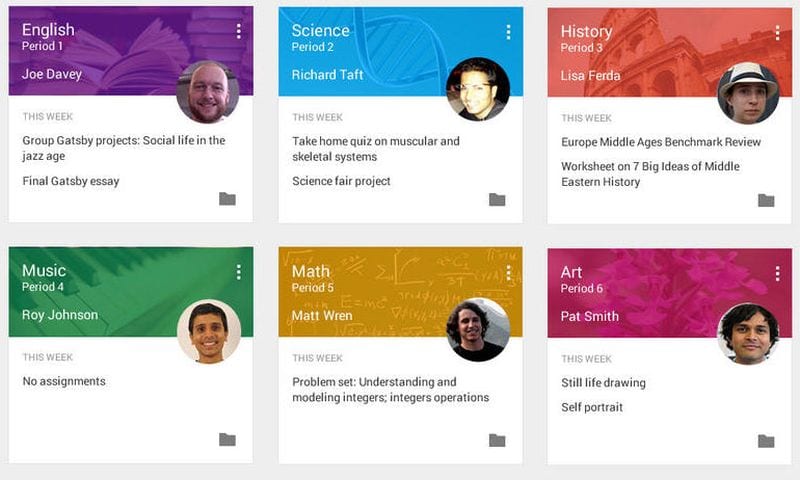
These sites allow you to follow your existing lesson plans by creating your own online learning resources. Some also provide the platforms you need to host virtual interactive multimedia classrooms.
- What It Is: A library of free, standards-aligned, autogradable assignments
- What They’re Offering: Free access!
- What It Is: With Bloomz, teachers and schools save time by having all the tools they need to communicate with today’s parents and students in one easy-to-use (and free) app.
- What It is: An educational video company with a streaming platform for teachers. Boclips has been created as a safe, easy way for teachers to use video with their students. It comes with the largest library of short-form educational videos, as well as ready-made lesson planning resources, without the dangers of open video platforms.
- What They’re Offering: In response to the COVID-19 crisis, Boclips has put together a toolkit of remote learning resources for teachers whose schools have closed. This includes videos from their library, strategy sheets, video integration ideas, resources on differentiated instruction, and training videos. Teachers can access these resources by filling in this form .
Book Creator
- What It Is: Book Creator is an easy-to-use tool that helps you create fun and engaging online books. They have lots of suggestions for how you can create and use books with students at any level .
- What They’re Offering: Teachers always receive one free library with 40 shareable books when they sign up . Schools impacted by COVID-19/coronavirus can also receive free access to the collaborative tools. Learn more here- Book Creator
Boolean Girl
- What It Is: Non-profit organization Boolean Girl’s mission is to teach kids and teens how to code, build, invent, and animate. They help narrow the gender gap in STEM fields through education and consistent, hands-on exposure to computer science and engineering during the elementary and middle school years.
- What They’re Offering: Free Full-STEM Ahead classes. These are live instructor-led virtual classes and events. Each class is age-appropriately tailored for ages 8 to 18.
- What It Is: This online learning resources platform gives teachers the ability to create online lessons, boards for students to share their thoughts and work, and collaborative learning spaces. It provides teachers the ability to easily communicate with kids and parents, too.
- What They’re Offering: Buncee offers a free 30 day trial. Click here to learn more- Buncee
Capti Voice
- What It Is: Capti Voice is an online text-to-speech platform. They provide remote assessment, accommodation, and reading support for students with disabilities.
- What They’re Offering: Free, basic-level individual accounts are available here- Capti Voice .
- What It Is: Not using ClassDojo yet? Now’s the time to start! This school communication tool makes it easy to stay in touch and track student progress too.
- What They’re Offering: ClassDojo is always free for teachers. Sign up here- Classdojo
- What It Is: Used by over 57,000 classrooms and 2 million parents/teachers across the U.S., Classtag is a free communication platform for schools that’s designed to boost parental engagement. Teachers can message parents directly (via SMS or web) and even translate their messages if English is the parent’s second language.
- What They’re Offering: Free to use
Conover Academy
- What It Is: Life Skills Academy by Conover is an online video library designed to be used outside the classroom so parents or guardians can help learners with disabilities learn how to function independently at home, work, or in the community. Based on the concept of video modeling, users watch someone do the desired behavior and then do it themselves.
- What It Is: This platform helps teachers create and share online lessons using their easy tools. The ability to offer differentiated paths within the same lesson is a nice feature.
- What They’re Offering: This site is always free, but requires teachers and students to have Google or Microsoft accounts. Learn more here- Deck Toys .
- What It Is: Communicate with students, share documents and assignments, and provide collaborative space with this platform. EdModo also offers good resources for helping you understand how to make distance learning work for your students.
- What They’re Offering: EdModo is always free for teachers, parents, and students. Sign up here- Edmodo
- What It Is: This site lets teachers create interactive online lessons using a video clip of the teacher’s choosing. It provides accountability and tracking for student progress, too.
- What They’re Offering: Basic plans are always free, and they also offer additional instructional resources across a wide array of topics here- EdPuzzle .
- What It Is: EduGuide saves schools time and money by efficiently multiplying their student support system, building self-motivation that keeps students learning, even when they are remote. EduGuide provides a simple way for every student to both be mentored by a caring adult and learn to mentor their peers on key social-emotional SEL habits that boost student success.
- What It Is: Edulastic is an online K-12 assessment tool. It allows teachers to make their own assessments and assignments or choose from over 35,000 pre-made assessments.
- What They’re Offering: Edulastic always offers Free-Forever Teacher accounts.
- What It Is: Teachers can access a collection of learning paths from some of the most well-known thought leaders in education covering topics such as Understanding by Design, Habits of Mind, Social Emotional Learning, Cultural and Linguistic Diversity, Personalized Learning, and Growth Mindset.
Explain Everything Whiteboard
- What It Is: Create interactive lessons and collaborative spaces for your virtual classroom with these real-time tools.
- What They’re Offering: Schools can get free extended access. Contact them here.
- What It Is: Students and teachers record short videos to document and share their learning on a subject. It’s kind of like social media for learning, and it’s a great way to stay in touch.
- What They’re Offering: FlipGrid is always free for educators with a Google or Microsoft account. Sign up here- Flipgrid
Fuel Education
- What It Is: Fuel Education provides innovative digital curricula, technology, instruction, and support enabling you to create a learning environment that is just right for your students.
- What They’re Offering: Complimentary services and access to online learning tools.
- What It Is: Genially offers interactive visual communication tools to create presentations, interactive images, infographics, and more.
- What They’re Offering: Many of their premium templates and resources are now available for free, for everyone. Learn more about their offerings here .
Google Classroom
- What It Is: Many teachers have already started using this readily-available resource for their classrooms. These tools are going to become even more valuable as schools convert to distance learning. There’s a lot to explore here, but most of it is easy to use, so don’t be afraid to dive in.
- What They’re Offering: Google Classroom is always free, but if it’s new to you, we recommend this quick overview guide .
- What It Is: Get the most out of Google Classroom and other Google tools with this platform. They offer webinars and other resources to help teachers create and manage the best virtual classrooms.
Impero back:drop
- What It Is: A cloud-based solution from Impero Software to help schools manage and record student safety and health information, from first aid to COVID-19 symptom tracking, to more complex mental health issues. Impero back:drop gives districts a way to keep track of and communicate about potential concerns safely and securely and eliminates the need for paper-based reporting systems.
- What They’re Offering: Impero has made Impero back:drop free indefinitely, helping schools fill a critical need for staying on top of student mental and physical concerns during the pandemic and beyond.
Insight ADVANCE
- What It Is: ADVANCEfeedback helps teachers, instructional coaches, and school and university leaders connect on a deeper level than off-the-shelf video conferencing tools by using secure video for self-reflection, peer feedback, and instructional coaching.
- What They’re Offering: To help strengthen support to teachers, coaches, and school leaders in this time of need, Insight ADVANCE is providing its ADVANCEfeedback video coaching tool, powered by the Vonage Video API, free of charge.
- What It Is: A collaborative online image and video editor with a cloud storage Workspace. Teachers can make video lessons to send to students for remote learning, students can work together on a group project, and classrooms can share multimedia projects with each other.
- What It Is: A web and mobile app that provides private student to teacher feedback to a group/class question, so teachers can understand how their students are doing and offer support, with optional anonymity features. It’s available on any device.
- What They’re Offering: Loop is always free for teachers.
ManagedMethods
- What It Is: A G Suite and Office 365 data security and student safety platform that gives K-12 IT full visibility and control into the data being stored. The platform monitors G Suite, Office 365, and email apps 24/7/365 for cybersecurity threats and student safety risks, to help keep sensitive data secure and students safe.
- What They’re Offering: K-12 school districts can use the platform for 30 days to help IT teams and districts protect students and staff online. Click here to learn more- ManagedMethods
Merit Software
- What It Is: Merit makes online, interactive, skill-building tutorials for reading comprehension and writing skills. The programs, which are commonly used by secondary and higher-ed students, are great for special needs, at-risk, or English language learners.
- What They’re Offering: The Merit site has free, full-working demos, pricing, and implementation ideas.
MeTEOR Education
- What It Is: The library includes virtual education best practice videos, performance tasks for students at home and in traditional classrooms, and other resources for teachers and leaders making the adjustment to virtual education.
- What They’re Offering: The MeTEOR Connect library of student and teacher resources is available to educators free of charge.
Mobile Guardian
- What It Is: Mobile Guardian is a mobile device management software providing remote Classroom Management Tools and premium Web-Filtering. Teachers can monitor what students are doing in lessons on their Chromebooks in real-time from their Mobile Guardian dashboard. They can also view how students spent their time during class. Web-filtering allows schools to secure devices that are now going home, as well as facilitate an academic environment.
- What They’re Offering: Schools can apply for a grant to help cover subscription costs here- Mobile Guardian .
Numerade.com
- What It Is: A platform that allows teachers to record and run asynchronous classes with virtual “attendance” and video Q&A for students. Numerade also features the World’s largest library of STEM video lessons with over 200,000 step-by-step solutions to popular textbook problems.
- What They’re Offering: Numerade’s asynchronous “Office Hours” platform and their collection of 200,000 video lessons are available to students and teachers for free.
- What It Is: Projector App helps teachers project their real word notes onto a professional-looking, virtual blackboard.
- What It Is: It’s hard to hold class discussions with no class, right? That’s where this site comes in. It provokes and encourages thoughtful conversations among students online.
- What They’re Offering: Parlay could be free for your school. Existing paid users can get a code to make their accounts free until then too. Learn more here- Parlay
- What It Is: Pronto is a communications hub that connects people via chat and video. It’s one option for hosting a virtual classroom.
- What They’re Offering: Pronto is free for educators at this time. Request your free access here.
Promethean ClassFlow
- What It Is: A cloud-based lesson delivery software service that energizes students with polling, timed assessments, interactive lessons, activities, and millions of immersive resources from educators around the world. ClassFlow is certified by iKeepSafe as compliant with federal and state requirements for handling protected personal information, including student data, and is safely used by over 4.5 million students worldwide.
Renzulli Learning
- What It Is: Renzulli Learning is an interactive online system that provides student-driven independent enrichment opportunities and project-based learning, and also enables teachers to easily differentiate instruction, increasing student engagement, and academic performance. Renzulli Learning supports strength-based personalized learning in all subjects for students in grades Pre-K through 12.
- What They’re Offering: Renzulli is offering a free 90 day trial along with special pricing of $5 per student for the remainder of the 2020-21 school year.
- What It Is: SafeToNet makes the digital world safer for children to explore and enjoy. Its award-winning AI-powered software safeguards children and their mental wellbeing when using their mobile devices, without sacrificing their privacy. The app provides an intelligent safeguarding keyboard and wellbeing tools that respond in real-time to help children make better decisions online, identify when they are under threat or distress, and prevent messages from being sent that could harm them and others.
- What It Is: Free K-12 Math, ELA, Science and Social Studies resources! Create effective classwork and assignments that have been proven to increase performance. All content is designed to engage and challenge students at their own level./li>
- What It Is: Keep your music students practicing at home with this online music classroom. You can track student progress, and they’ll get instant feedback from the online tools.
- What It Is: More than just a computer, classroom, STEM kits, or a project — SmartLabs are a comprehensive and immersive solution.
- What It Is: Start.me enables teachers to create an easy start hub for their classroom. This start hub makes it easy for students to access all their educational resources and tools.
- What They’re Offering: The basic version is already free, but teachers can also apply for one year of free access to the Pro version of start.me.
- What It Is: StudyBee is a grading and student feedback system that extends Google Classroom functionality, with the ability to link assignments to custom or standardized educational objectives from the US.
- What It Is: A collaborative presentation tool used for all grade levels that works perfectly for the remote classroom.
- What It Is: An online bookmarker for educators. Committed to making personalized learning and educational technology easily accessible for everyone, everywhere.
- What It Is: Companies across the world use Webex to keep their teams in contact remotely. They offer lots of tools that are ideal for taking your classes online.
- What It Is: Rather than fighting smartphones, Wooclap turns them into an exceptional learning tool. Wooclap is a free tool to help maintain interactivity and effective pedagogy. Their goal is to capture the attention of students to improve their learning whether they’re in the classroom or at home taking an online course.
- What It Is: Project your lessons in group settings with Zoom. You can even record the sessions for students who need to review later. This video and audio conferencing tool has a chat functionality where students can ask questions as you teach.
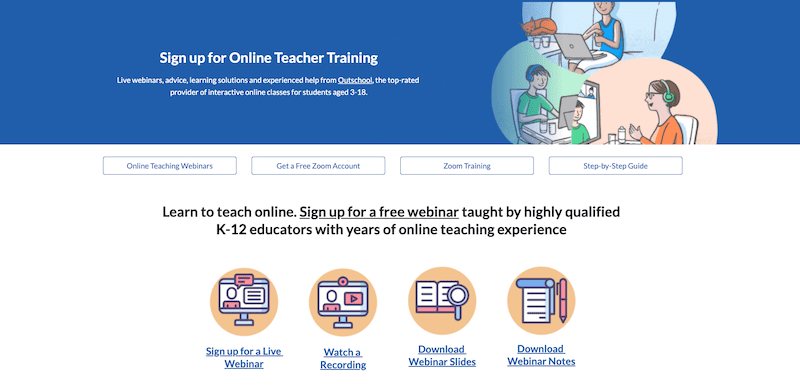
These sites assist with continuing professional development and curriculum for teachers.
- What It Is: Live and recorded webinars prepared by content experts on a range of topics including tips for teaching and learning remotely, proficiency and performance, sustaining research, and strategies for assessment.
- What They’re Offering: Free support for teachers.
Better Lesson
- What It Is: Collaborative virtual learning experiences that address the most pressing needs in K-12 education.
Edmentum Courses
- What It Is: Edmentum can help your district ensure teachers can continue teaching virtually using their standards-aligned curriculum through their Edmentum Capacity Assistance Program (E-CAP).
- What They’re Offering: Two Free Edmentum Courses.
E. L. Achieve
- What It Is: ELL Curriculum for educators. Their professional development addresses two key areas: Systematic ELD for dedicated language instruction and Constructing Meaning for explicit language instruction for content learning.
- What They’re Offering: Free upcoming webinars for K-12.
Imagine Learning: Distance Learning Toolkit
- What It Is: Imagine Learning’s Distance Learning Toolkit site offers practical tips and information for educators and parents navigating the new world of distance learning.
- What They’re Offering: A free collection of practical distance learning tips — presented via videos, articles, and webinars — for educators and parents.
IMB AI Education
- What It Is: An immersive, interactive professional learning suite of online and in-person experiences crafted by and for educators to guide you through AI’s foundational concepts and K-12 classroom connections.
- What They’re Offering: A free online toolkit .
Illuminate Education
- What It Is: Professional learning resources for teachers on remote learning, including webinars and how-to articles, all available online.
- What They’re Offering: Free for educators.
- What It Is: Nomadic is a digital learning pioneer launching a Remote Work Boot Camp to help newly remote folks get better equipped to face our current working reality.
- What It Is: Live webinars, advice, learning solutions, and experienced help from Outschool, the top-rated provider of interactive online classes for students ages 3-18.
- What They’re Offering: Learn to teach online. Sign up for a free webinar taught by highly qualified K-12 educators with years of online teaching experience.
- What It Is: PBLWorks is hosting a free webinar series on how to facilitate Gold Standard Project Based Learning online.
- What They’re Offering: All webinars will be presented live and recorded versions will be made available for free upon request.
ResilientEducator
- What It Is: The platform strategy of Resilient Educator is rooted in support of building resilience in educators and advancing trauma-informed strategies throughout schools and communities.
- What They’re Offering: Free resources for teaching online.
SHARE Professional Learning
- What It Is: SHARE is a Source for Help, Advancement, and Renewal for Educators. There is no one-size-fits all solution to teacher burnout, but the most sturdy support for those in need comes from fellow educators—both those in one’s local educational community and in the profession at large.
- What They’re Offering: Take our free, 90-minute course “Teaching Through the Coronavirus Pandemic.” This course discusses stresses specifically caused by responses to COVID-19, such as quarantine and social distancing. It also provides strategies to help teachers and their students remain strong during the pandemic.
STEMscopes
- What It Is: Live and recorded webinars led by science and STEM education experts on a range of topics including inquiry, creating a STEM campus, STEM inclusion for English learners, and assessment.
- What They’re Offering: Access to free upcoming live and recorded sessions. Click here- STEMscopes to learn more.
Studer Education
- What It Is: Studer Education is a leading service provider focused on improving organizational outcomes.
- What They’re Offering: They have put together a collection of leadership tools and resources curated by expert leaders who have faced crises before.
- What It Is: Teq offers a series of webinars for Remote learning. This includes SMART Learning Suite Online, Google, and Microsoft Teams.
- What They’re Offering: Individual educators can sign up for a FREE Basic account with access to select PD sessions or purchase PD certification tracks.
Vista Higher Learning
- What It Is: Vista Higher Learning offers a number of valuable resources to help K-16 language educators during this time of great uncertainty and change. Find webinars from fellow educators on how to transition to remote teaching, content that parents or educators can use at home, and free 90-day Teacher Access to all online VHL products.
- What They’re Offering: Free resources and education.
Feeling overwhelmed? You’re definitely not alone. Join fellow educators in the WeAreTeachers Chat group on Facebook to get support from others just like you.
You Might Also Like
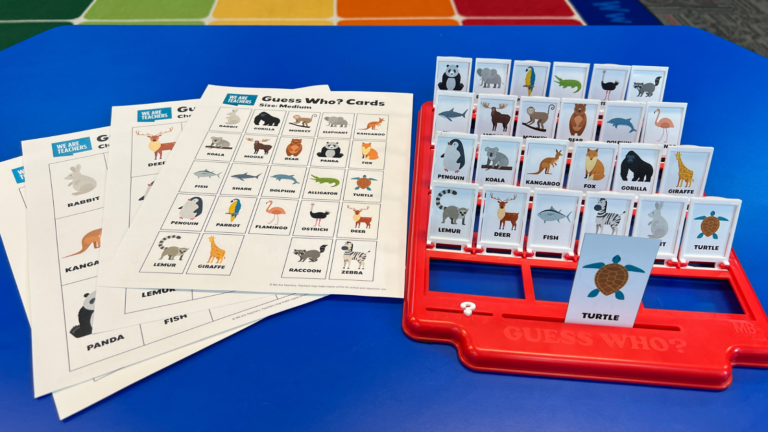
Use Our FREE Guess Who Template To Make Your Own Game
Whether it's animals, shapes, or math, students will love switching up the game! Continue Reading
Copyright © 2024. All rights reserved. 5335 Gate Parkway, Jacksonville, FL 32256
- Math for Kids
- Parenting Resources
- ELA for Kids
- Teaching Resources

How to Teach Number Formation in 5 Easy Steps
13 Best Resources for Math Videos for Kids: Math Made Fun
How to Teach Skip Counting to Kids in 9 Easy Steps
10 Best Math Intervention Strategies for Struggling Students
How to Teach Division to Kids in 11 Easy Steps
How to Cope With Test Anxiety in 12 Easy Ways
Developmental Milestones for 4 Year Olds: The Ultimate Guide
Simple & Stress-Free After School Schedule for Kids of All Ages
When Do Kids Start Preschool: Age & Readiness Skills
Kindergarten Readiness Checklist: A Guide for Parents
How to Teach Letter Formtaion to Kids in 9 Easy Steps
15 Best Literacy Activities for Preschoolers in 2024
12 Best Poems About Teachers Who Change Lives
6 Effective Ways to Improve Writing Skills
40 Four Letter Words That Start With A
13 Best Online Teaching Tips for Teachers
How to Teach Kids to Write in 9 Easy Steps
13 Challenges for Teachers and How to Address Them
12 Best Qualities of a Good Teacher
15 Best Innovative Tech Tools for Teachers
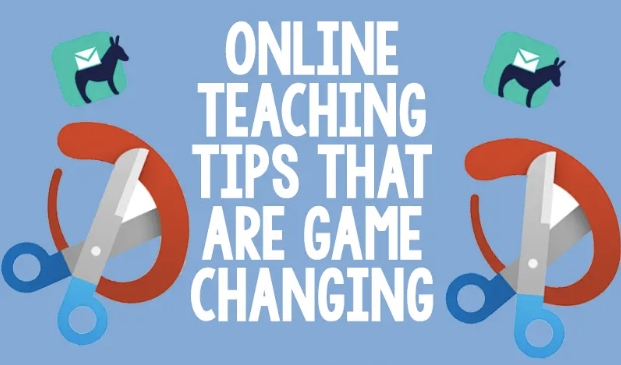
1. Start Each Lesson with a Personal Check-In
2. use real-world examples to explain concepts, 3. optimize content for online learning, 4. leverage multimedia tools, 5. incorporate game-based learning, 6. track student progress with technology, 7. utilize formative assessments, 8. personalize your teaching, 9. foster a strong classroom community, 10. offer flexible learning paths.
Have you ever thought about how to make your online teaching better? As more classes move to virtual spaces, it’s important to learn some online teaching tips . In this blog, we’ll look at practical ways to improve your teaching skills in the digital world. Let’s dive in and discover how to excel in online teaching!
SplashLearn: Most Comprehensive Learning Program for PreK-5

SplashLearn inspires lifelong curiosity with its game-based PreK-5 learning program loved by over 40 million children. With over 4,000 fun games and activities, it’s the perfect balance of learning and play for your little one.
13 Online Teaching Tips for Educators

When you’re figuring out how to teach online, one of the best online teaching tips is to kick off every session with a quick personal check-in. Ask your students how they’re doing or if they have anything interesting to share.
This not only warms up the virtual classroom but also strengthens the bond between you and your students, creating a supportive and connected learning environment . It’s a simple yet effective tip for online teaching that makes students feel valued and ready to engage.
One of the top tips for online teaching is to anchor your lessons in the real world. By weaving real-world examples into your teaching, you make complex or abstract ideas more tangible and easier for students to grasp.
This method not only aids understanding but also shows students the relevance of what they’re learning, making the educational experience more meaningful. Whether it’s math, science, or literature, showing how concepts apply in real life can significantly enhance students’ comprehension and interest.
It’s crucial to tailor your course material specifically for digital platforms. This means breaking down your lectures into shorter, more digestible pieces that fit the online medium perfectly.
Such structuring not only makes the learning process more manageable for students but also boosts their engagement and retention rates. This approach is one of the best online teaching tips for creating an interactive and engaging online course.
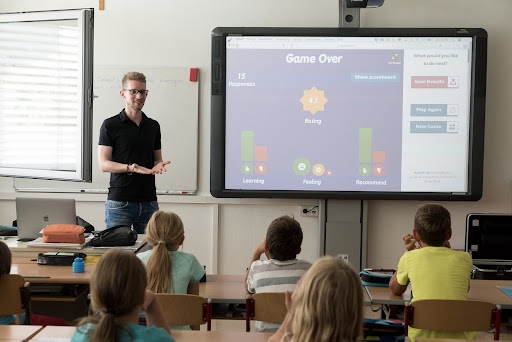
By integrating various types of content, such as instructional videos, podcasts , and interactive simulations, you cater to different learning styles and preferences. This diversity in teaching materials not only keeps the course interesting but also helps in conveying complex concepts more clearly, ensuring that your students remain hooked and learn effectively.
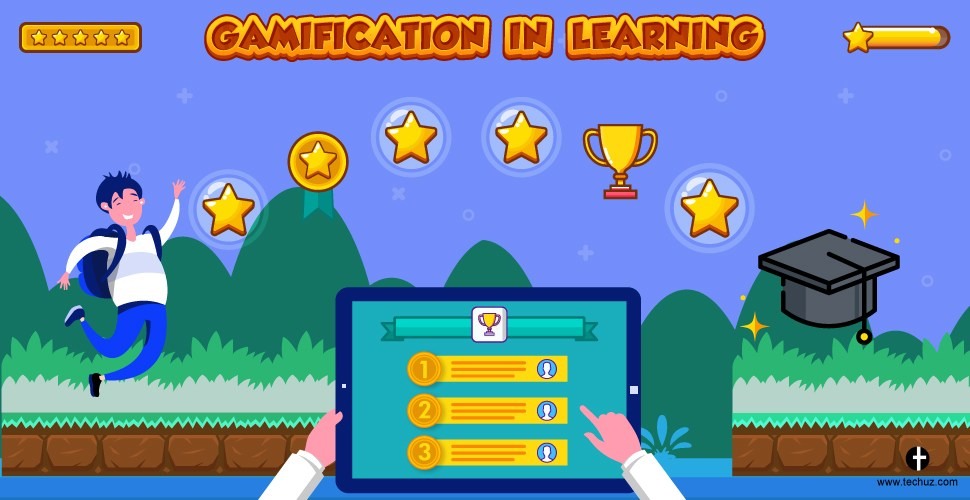
Game-based learning is a powerful strategy to boost student engagement and motivation. Platforms like SplashLearn take this to the next level by transforming math and reading lessons into interactive games. This method not only makes learning more enjoyable but also allows students to understand and apply complex concepts in a fun, engaging environment. SplashLearn’s curriculum-aligned games ensure that while students are having fun, they’re also receiving a quality educational experience.
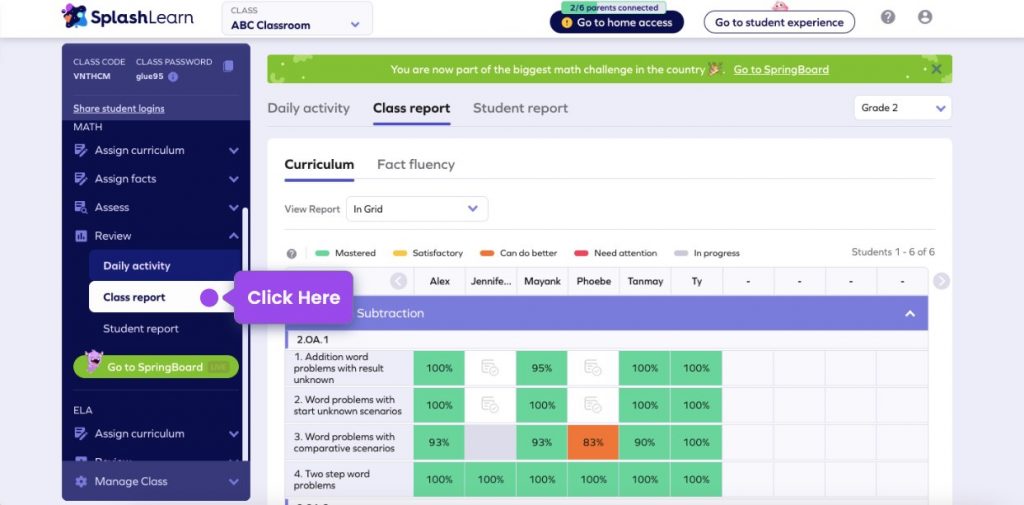
In today’s digital age, tracking student progress has become more straightforward and efficient with technology. SplashLearn offers a robust platform where educators can monitor their students’ progress in real-time. This feature is incredibly beneficial for identifying students who may be struggling with certain topics, allowing educators to provide targeted support promptly.
Additionally, the platform facilitates the provision of timely feedback, enabling educators to quickly address students’ questions and assignments, further enhancing the learning experience. SplashLearn’s detailed reports and analytics make it easier to customize teaching strategies to meet the individual needs of each student, ensuring that every learner receives the attention and guidance they need to succeed.
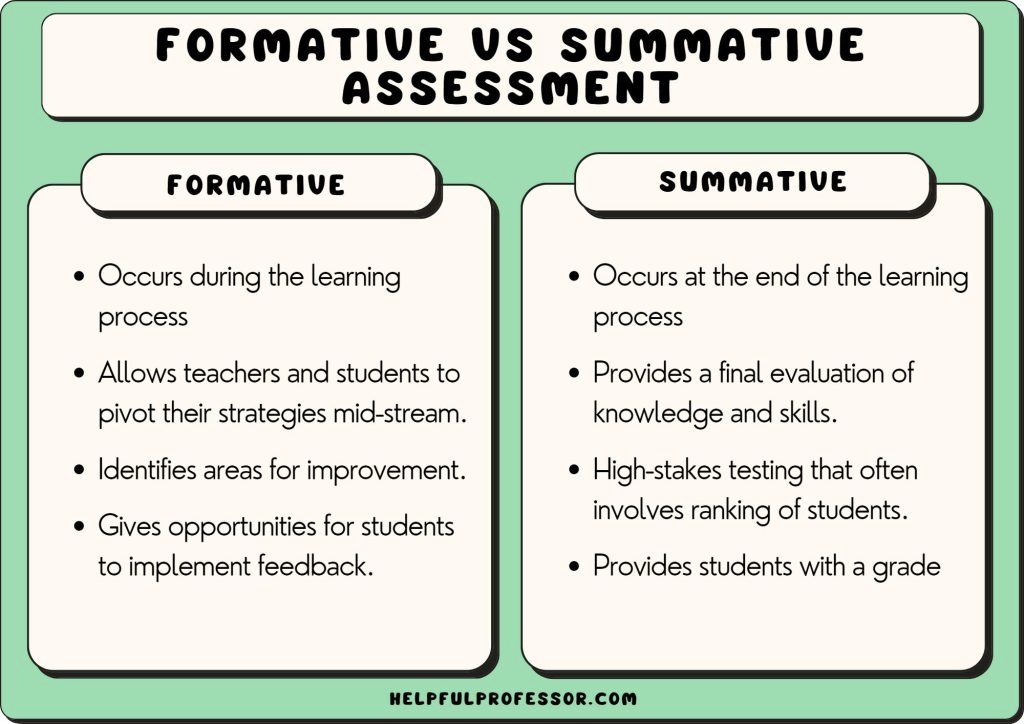
Regularly integrating formative assessments like quizzes, reflection journals, or discussion prompts is crucial. These tools offer immediate feedback to students , helping you identify areas where they might be struggling. Early intervention can then be made to address these issues. It’s one of the most impactful online teaching tips and techniques, ensuring that the learning process is continuous and adaptive to student needs.
Leveraging data and analytics from your Learning Management System (LMS) is among the top online teaching tips for tailoring your approach to each student’s unique learning journey. By understanding each student’s progress, strengths, and areas for improvement, you can adjust your teaching methods to meet their individual needs, making teaching online a more personalized and impactful experience.
Creating a welcoming and inclusive online environment is crucial for building a strong classroom community. Start with ice-breaker activities, encourage ongoing group discussions, and facilitate peer feedback sessions. These strategies not only make students feel more connected but also enhance their learning experience.
One of the best ways to teach online classes is by offering flexible learning options. Allow students to dive deeper into subjects with additional resources, choose their assignment topics, or participate in optional discussions. This approach empowers students to take charge of their learning, making education more relevant and engaging for them.
11. Stay Updated on Online Teaching Practices
Continuously seeking professional development and staying abreast of the latest online teaching tools , trends, and methodologies are vital online teaching tips for educators. By dedicating yourself to lifelong learning, you ensure that your teaching strategies remain effective and innovative, providing your students with the highest quality online education possible.
12. Use Student Feedback to Adjust Teaching Methods
A crucial tip for teaching online classes is to actively seek and use student feedback. Asking your students how they feel about the teaching methods and materials gives you invaluable insights. Be ready to adapt and change your strategies based on what they tell you. This approach ensures that the learning experience is continuously improving, making it more engaging and productive for your students.
13. Promote a Growth Mindset
Encouraging a growth mindset is fundamental in teaching online effectively. Motivate your students to see challenges as opportunities to learn and grow. Remind them that effort leads to improvement and mastery over time. Celebrating their progress and efforts, instead of focusing solely on the outcomes, helps build resilience and a love for learning . This strategy is not just a tip for teaching online classes; it’s a powerful approach to education that empowers students to become lifelong learners.
Pros and Cons of Online Teaching
Conclusion .
Embracing these teaching tips for online teaching can make a significant difference in your digital classroom. By incorporating student feedback, fostering a growth mindset, and adapting your teaching methods, you’re not just teaching online effectively; you’re also creating a supportive and dynamic learning environment where every student has the opportunity to thrive and succeed.
Frequently Asked Questions (FAQs)
What is the biggest challenge in online teaching.
The biggest challenge in online teaching is maintaining student engagement and motivation in a virtual environment, where physical cues and in-person interaction are limited. Overcoming this requires creative teaching strategies and effective use of digital tools.
Is online teaching stressful?
Yes, online teaching can be stressful, especially when adapting to new technologies, managing student engagement remotely, and balancing the demands of online lesson planning . However, with proper support and resources, this stress can be managed effectively.
Why online teaching for teachers?
Online teaching offers teachers flexibility in scheduling, the ability to reach a broader audience, and opportunities to utilize innovative teaching tools and techniques. It also challenges educators to continually adapt and improve their teaching methods, enhancing their professional growth.
Most Popular

15 Best Report Card Comments Samples

101 Best Riddles for Kids (With Explanation)

40 Best Good Vibes Quotes to Brighten Your Day
Recent posts.

What is Classical Homeschooling: A Comprehensive Guide

Math & ELA | PreK To Grade 5
Kids see fun., you see real learning outcomes..
Watch your kids fall in love with math & reading through our scientifically designed curriculum.
Parents, try for free Teachers, use for free

- Games for Kids
- Worksheets for Kids
- Math Worksheets
- ELA Worksheets
- Math Vocabulary
- Number Games
- Addition Games
- Subtraction Games
- Multiplication Games
- Division Games
- Addition Worksheets
- Subtraction Worksheets
- Multiplication Worksheets
- Division Worksheets
- Times Tables Worksheets
- Reading Games
- Writing Games
- Phonics Games
- Sight Words Games
- Letter Tracing Games
- Reading Worksheets
- Writing Worksheets
- Phonics Worksheets
- Sight Words Worksheets
- Letter Tracing Worksheets
- Prime Number
- Order of Operations
- Long multiplication
- Place value
- Parallelogram
- SplashLearn Success Stories
- SplashLearn Apps
- [email protected]
© Copyright - SplashLearn

Make learning a game for your students
Unlock endless learning fun with 14,000+ games & activities, 450+ lesson plans, and more—free forever.
Teachers, Use for Free
<strong data-cart-timer="" role="text"></strong>
Digital Resources Library
Infuse the arts into your educational practices with our robust collection of free digital learning resources., the 2021-2022 school year has been unlike any educators have experienced., as we dedicate ourselves to keeping students and colleagues safe, we rise to the challenge of providing the best education we can while navigating the logistics of modified in-person learning, remote learning, and ever-present uncertainty., kennedy center education is here to help you succeed with lesson plans and digital resources that incorporate best practices for the classroom—providing you with tools to infuse the arts across the curriculum and engage all learners., featured resources, black history through the arts.

Explore our curated collection of educational resources focusing on the importance and impact of Black artists and artistry throughout American history.
Digital Resource Collections Our Best Resources, Organized by Subject
Explore our resources arranged by topic. From arts genres like dance, music, theater, opera, visual and literary arts, to non-arts subject areas like math, science, history, and literature, to seasonal and cultural celebrations—this is an easy way to find the digital resources you need.

Media & Interactives Digital Media for Students of All Ages
Discover digital resources for students of all ages. Here’s where you’ll find video and audio stories produced with artists appearing on stage at the Kennedy Center, plus fun, media-rich self-guided explorations of arts learning and digital interactives that let the learner set their own pace.

Articles & How-To Guides Tips and Best Practices for Educators
Investigate practical, creative tips about how to engage your administrators and bring the arts into your classroom. For families, learn how to become an arts advocate and support arts education in your child’s school, as well as ways to support your young artist at home.

Lessons & Activities Arts-Based Lessons for Your Classroom
Evoke creativity, success, and growth with your students using our arts-centered, standards-aligned lesson plans for your K-12 curriculum. Each lesson in our extensive collection has been revised and updated to meet the needs of your classroom.

Kennedy Center Education Digital Learning
Eric Friedman Director, Digital Learning
Kenny Neal Manager, Digital Education Resources
Tiffany A. Bryant Manager, Operations and Audience Engagement
Joanna McKee Program Coordinator, Digital Learning
JoDee Scissors Content Specialist, Digital Learning
Connect with us!
Generous support for educational programs at the Kennedy Center is provided by the U.S. Department of Education. The content of these programs may have been developed under a grant from the U.S. Department of Education but does not necessarily represent the policy of the U.S. Department of Education. You should not assume endorsement by the federal government.
Gifts and grants to educational programs at the Kennedy Center are provided by A. James & Alice B. Clark Foundation; Annenberg Foundation; the Andrew W. Mellon Foundation; Bank of America; Bender Foundation, Inc.; Carter and Melissa Cafritz Trust; Carnegie Corporation of New York; DC Commission on the Arts and Humanities; Estée Lauder; Exelon; Flocabulary; Harman Family Foundation; The Hearst Foundations; the Herb Alpert Foundation; the Howard and Geraldine Polinger Family Foundation; William R. Kenan, Jr. Charitable Trust; the Kimsey Endowment; The King-White Family Foundation and Dr. J. Douglas White; Laird Norton Family Foundation; Little Kids Rock; Lois and Richard England Family Foundation; Dr. Gary Mather and Ms. Christina Co Mather; Dr. Gerald and Paula McNichols Foundation; The Morningstar Foundation;
The Morris and Gwendolyn Cafritz Foundation; Music Theatre International; Myra and Leura Younker Endowment Fund; the National Endowment for the Arts; Newman’s Own Foundation; Nordstrom; Park Foundation, Inc.; Paul M. Angell Family Foundation; The Irene Pollin Audience Development and Community Engagement Initiatives; Prince Charitable Trusts; Soundtrap; The Harold and Mimi Steinberg Charitable Trust; Rosemary Kennedy Education Fund; The Embassy of the United Arab Emirates; UnitedHealth Group; The Victory Foundation; The Volgenau Foundation; Volkswagen Group of America; Dennis & Phyllis Washington; and Wells Fargo. Additional support is provided by the National Committee for the Performing Arts.
Social perspectives and language used to describe diverse cultures, identities, experiences, and historical context or significance may have changed since this resource was produced. Kennedy Center Education is committed to reviewing and updating our content to address these changes. If you have specific feedback, recommendations, or concerns, please contact us at [email protected] .
By using this site, you agree to our Privacy Policy and Terms & Conditions which describe our use of cookies.
Reserve Tickets
Review cart.
You have 0 items in your cart.
Your cart is empty.
Keep Exploring Proceed to Cart & Checkout
Donate Today
Support the performing arts with your donation.
To join or renew as a Member, please visit our Membership page .
To make a donation in memory of someone, please visit our Memorial Donation page .
- Custom Other

State Government websites value user privacy. To learn more, view our full privacy policy .
Secure websites use HTTPS certificates. A lock icon or https:// means you’ve safely connected to the official website.

AI Resources

NCDPI AI Support & Opportunities
NC AI Guidelines : The North Carolina Department of Public Instruction invites educators, school leaders, and stakeholders to explore "Generative AI Implementation Recommendations and Considerations for PK-13 Public Schools" by visiting this link: https://go.ncdpi.gov/AI_Guidelines.
NC AI Summit: NCDPI is also hosting two AI Summits, one for the east and one for the west. These are intended for district leadership teams, AI steering committees, and those who will help guide your PSUs AI implementation .
Register today and be sure to save the date!
April 30, 2024 (West- Lake Junaluska Conference Center in Waynesville, NC)
AI Summit Information
AI Summit Flyer by NCDPI DTL
AMI Digital Free Educational Resources
AMI Digital is in the process of being converted to an accessible and affordable membership service with thousands of high-quality downloadable resources.
In the meantime, the Association Montessori Internationale is offering a range of digital resources free of charge to schools, educators and families.
You do not need to set up an account or give any details. The resources are completely free and available to be downloaded.
If you would like to make a donation to support this work please click here so we can provide additional free resources.
Classified Cards
Classified Cards are collections of pictures that show and classify various aspects of the world around the child. Click here for information about how to use Classified Cards with your children.
If you have access to a printer it is ideal to print the resources out on paper and cut out the cards. We have also produced a simple screen version of the activity.
As you browse the different sets of cards some will be more relevant to your culture than others. Please feel free to omit cards or combine cards from another set when using them with your children. Please note that the flags represented are the flags of the member states of the United Nations. As we develop the site we will be happy to add cards that match your specific culture and would appreciate any suggestions that you may have. We are also working to translate the resources into as many languages as possible and have included a translation template with each set of the Classified Cards. Please email translations to [email protected] .
Recently Added - View All

Mammals Europe 02

Mammals Europe 01

Mammals North America 01

Mammals North America 02

Reptiles South America

Mammals South America 01
Other materials available free to download.
AMI is working to make available other materials. Click on the link above to access an initial range of language materials . The materials are currently only available in English.
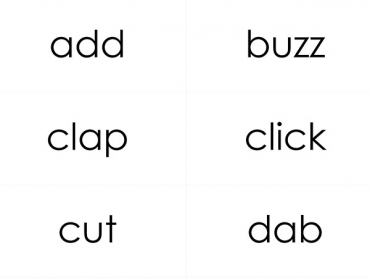
Phonetic Action Words Set 01
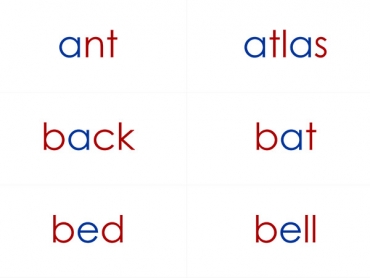
Phonetic General Words Set 01
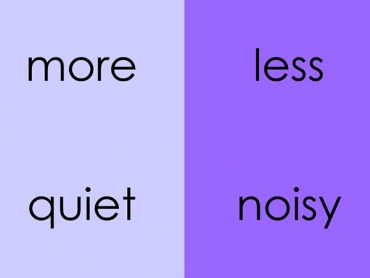
Antonyms Set 01

Parts of the Flower
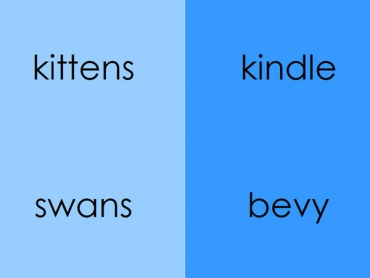
Collective Nouns Set 03
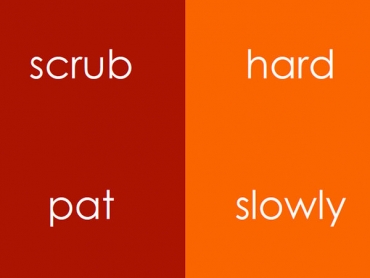
Logical Adverb Set 01
Information.
- Copyright and Terms of Usage
- Privacy Policy
- Cookies Policy
- Cookies Settings
More Content
Stay connected, additional links.
Education expert shares AI tools resource for educators
Rebecca Bultsma, APR, director of communications of communications at Westwind School Division in Alberta Canada, has partnered with Rise Vision, a provider of digital signage software for schools, to present an on-demand webinar entitled "Navigating AI in Schools."

April 24, 2024
Rebecca Bultsma, APR, director of communications of communications at Westwind School Division in Alberta Canada, has partnered with Rise Vision, a provider of digital signage software for schools, to present an on-demand webinar entitled "Navigating AI in Schools," according to a press release.
Bultsma, a strategic communications and public relations professional with AI expertise, provided an overview of the basics of generative AI and the latest trends, practical strategies to implement AI in an educator's everyday work, and a summary of the dos and don'ts of navigating AI as it evolves.
"My goal is empowering people to work in harmony with AI, leveraging its capabilities to tackle bigger challenges and make a lasting impact," Rebecca Bultsma said in the release. "This collaboration with Rise Vision helps empower a wide range of educators."
"Rise Vision is excited to partner with Rebecca Bultsma to share insights into artificial intelligence," Jennifer Jennings, growth marketing manager. "It's important for schools to understand AI and be able to use the technology to enhance communication."
Interested educators can access the recorded webinar , which has been made publicly available.
INCLUDED IN THIS STORY

Rise Vision Digital Signage Software
USA: // Rise Vision Inc. // 216 N Mosley Street #126 // Wichita, KS 67202-2808 // USA // // Canada: // Rise Vision Inc. // 2967 Dundas St. W #632 // Toronto ON, M6P 1Z2 // Canada
Improve communication with Rise Vision, the #1 digital signage software solution.
RELATED CONTENT

KEEP UP WITH WHAT’S NEW IN THE DIGITAL SIGNAGE INDUSTRY
Sign up now for the Digital Signage Today newsletter and get the top stories delivered straight to your inbox.
SUBSCRIBE NOW
Korbyt, Webex partner in software integration
Apple Airplay launches on LG hotel TVs at select IHG hotels, resorts
Digital Signage Best Practices Guide
TOP STORIES

Interactive Customer Experience (ICX) Summit
September 9-11, 2024 | Charlotte, NC

Premium Content

Already a member? Sign in below.
sign in or register now
Forgot your password?
You may sign into this site using your login credentials from any of these Networld Media Group sites:

National Museum of African American History & Culture
- Plan Your Visit
- Group Visits
- Frequently Asked Questions
- Accessibility Options
- Sweet Home Café
- Museum Store
- Museum Maps
- Our Mobile App
- Search the Collection
- Exhibitions
- Initiatives
- Museum Centers
- Publications
- Digital Resource Guide
- The Searchable Museum
- Freedmen's Bureau Search Portal
- Early Childhood
- Talking About Race
- Digital Learning
- Strategic Partnerships
- Ways to Give
- Internships & Fellowships
- Today at the Museum
- Upcoming Events
- Ongoing Tours & Activities
- Past Events
- Host an Event at NMAAHC
- About the Museum
- The Building
- Meet Our Curators
- Founding Donors
- Corporate Leadership Councils
- NMAAHC Annual Reports
Juneteenth Digital Toolkit

On June 19, 1865, Union troops arrived in Galveston, Texas with the news that the more than 250,000 enslaved Black people in the state were free.
This day came to be known as Juneteenth , now officially a federal holiday. Juneteenth is a time to celebrate, gather as a family, reflect on the past and look to the future.

Enjoy the Tastes, Sounds and Experiences of Juneteenth
Juneteenth celebrates African American resilience and achievement, while aiding in the preservation of those historical narratives that promoted racial and personal advancement since Freedom Day. Join the museum’s Juneteenth celebration – spanning the entire month of June – and embrace the rich history of Freedom Day each week.
Juneteenth and the Color Red

The Juneteenth 2023 Red List Notebook is among Juneteenth commemorative collection available in the museum store.
Each year when my family celebrates Juneteenth, our flyers boldly request that each quest bring something "Red." We then add examples, like red soda pop, watermelon, apples, or even red beans. Folks bring these items without much thinking about their origin. In fact, the roots of the symbolic efficacy of the color red can be traced to West Africa, where it has been associated with strength, spirituality, life, and death. Furthermore, culinary historians, trace the color to certain foods that traveled to the Americas along with the Africans during the trans-Atlantic slave trade, such as hibiscus and the kola nut.
So, this year at Juneteenth, as you take a long swallow from a cool drink of hibiscus iced tea, or red punch, remember the ancestors who sacrificed, remember the blood shed in the struggle, remember the collective strength of people of the African diaspora, and finally remember the spirituality and transcendent joy that enabled us to overcome. ~ Kelly Navies, museum specialist and oral historian
Share on Social
Educate your followers, friends and family by sharing our graphics along with one of these suggested captions:
On June 19, 1865, Union troops arrived in Galveston, Texas with the news that the more than 250,000 enslaved Black people in the state were free. This day came to be known as #Juneteenth, now officially a federal holiday. Celebrate with @NMAAHC: nmaach.si.edu/Juneteenth
Do you know the story of #Juneteenth? Learn more and join in the celebration with @NMAAHC: nmaahc.si.edu/Juneteenth

Shareable Graphics

Motion Graphic

Virtual Backgrounds

Church Fan Designs

Children & Youth Resources
Discover Juneteenth resources to share with young children.
Crossword Puzzle

Listen on Tidal

Listen on YouTube Music
Join Our Programs

Juneteenth: A Time of Celebration, Reflection
Join us in-person and online for our Juneteenth programming highlighting community, culture and freedom.
Discover Educational Resources

Press Play on History: Juneteenth
Connect songs to themes of the historical experience of African Americans and Juneteenth and create a playlist through this Learning Lab activity.

Juneteenth: Connecting the Historic to the Now
Scholars discuss the historical and current political significance of the holiday.
Explore More
As you celebrate Juneteenth this year, the museum offers additional resources to help you embrace the rich history of Freedom Day.

Juneteenth: Cause for Celebration
This 1925 film, recorded by the Rev. Solomon Sir Jones, captures a Juneteenth celebration in Beaumont, Texas. Learn more about Reconstruction, rights and retaliation by visiting our Searchable Museum.
Embrace a Rich History
Watch museum videos that celebrate culture, family and freedom.
We use the video player Able Player to provide captions and audio descriptions. Able Player performs best using web browsers Google Chrome, Firefox, and Edge. If you are using Safari as your browser, use the play button to continue the video after each audio description. We apologize for the inconvenience.
NMAAHC Oral History Specialist Kelly Navies talks about the history of Juneteenth.
Rochelle Rice sings "Lift Every Voice and Sing."
What is Juneteenth, and why is it important? - Karlos K. Hill and Soraya Field Fiorio
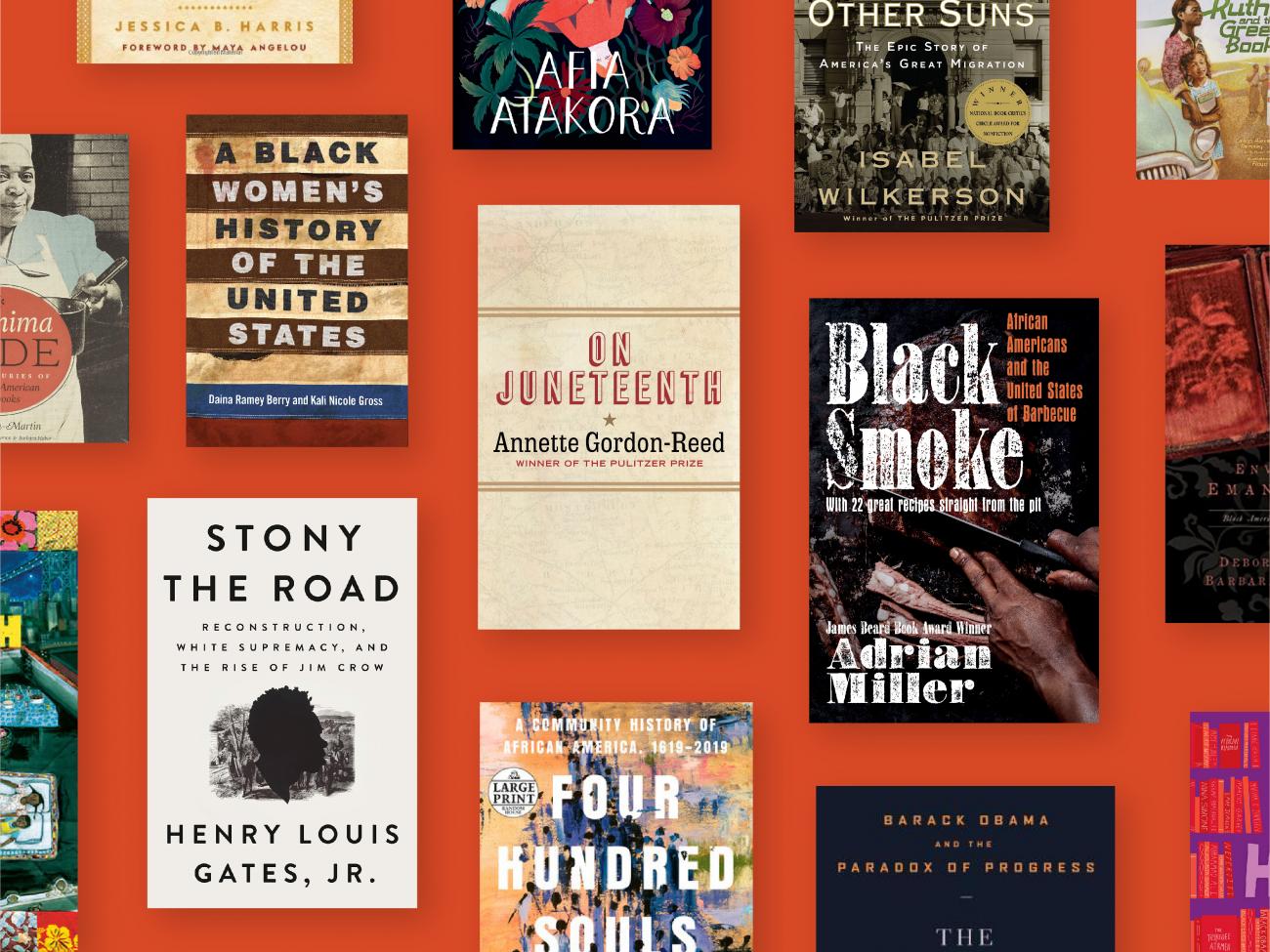
Juneteenth Reading List
Check out our museum's top picks and explore the books on our expert's must-read list — curated just for you.
Titles for Younger Readers
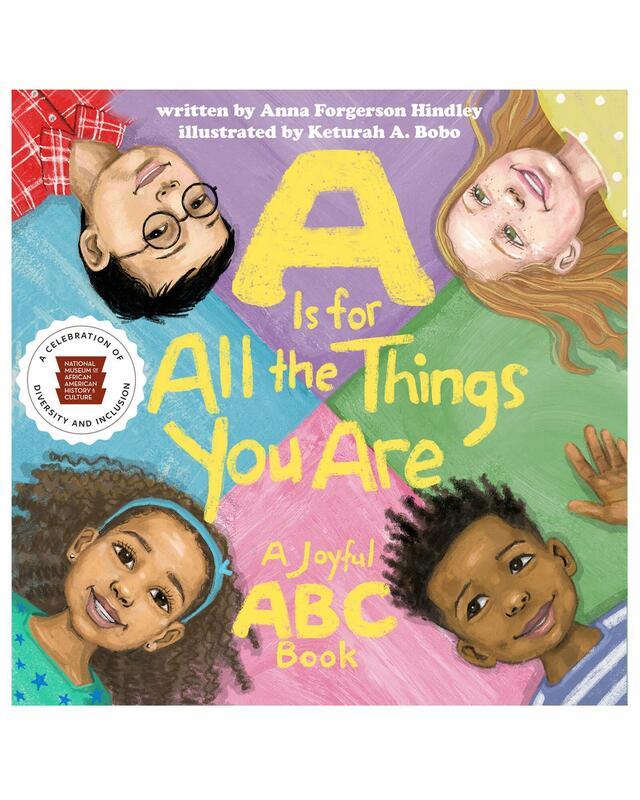
A IS FOR ALL THE THINGS YOU ARE A JOYFUL ABC BOOK
A IS FOR ALL THE THINGS YOU ARE: A JOYFUL ABC BOOK Anna Forgerson Hindley and the National Museum of African American History and Culture This alphabet board book celebrates what makes us unique as individuals and connects us as humans. This lively and colorful book introduces young readers to 26 key traits they can explore and cultivate as they grow. The book supports understanding and development of each child’s healthy racial identity, the joy in human diversity and inclusion, a sense of justice, and children’s capacity to act for their own and others’ fair treatment.

Our Skin A First Conversation About Race
OUR SKIN: A FIRST CONVERSATION ABOUT RACE Megan Madison and Jessica Ralli The premiere book in the First Conversations board book series, Our Skin: A First Conversation About Race, offers children and adults in their lives supportive examples for holding honest conversations about race and racism told in a read-aloud format. Backed by research in early childhood development, this vibrantly illustrated picture book equips readers with clear language, and historical context to learn about skin color, race, and racism and gives examples of ways young children can use their unique voices to stand for fairness.

Get Up Stand Up
GET UP, STAND UP Bob Marley and Cedella Marley This children’s book adaptation of the empowering Bob Marley lyrics, Get Up, Stand Up, encourages young readers to use their voices to stand up for themselves and others. Through the perspective of a young girl’s day at school, this lyrical story showcases how injustice can appear in children’s everyday lives and each child’s unique and collective power to fight against it.

Our Children Can Soar
OUR CHILDREN CAN SOAR Michelle Cook Our fight for racial justice is one that has been carried on by people for generations. Through beautiful illustrations, this rhythmically told picture book celebrates the diverse pursuits and accomplishments of Black leaders throughout history and showcases how each generation's work enables the following to reach new heights.

Freedom, We Sing
JUNETEENTH FOR MAZIE Floyd Cooper Mazie is ready to celebrate liberty. She is ready to celebrate freedom. She is ready to celebrate a great day in American history. The day her ancestors were no longer slaves. Mazie remembers the struggles and the triumph, as she gets ready to celebrate Juneteenth.
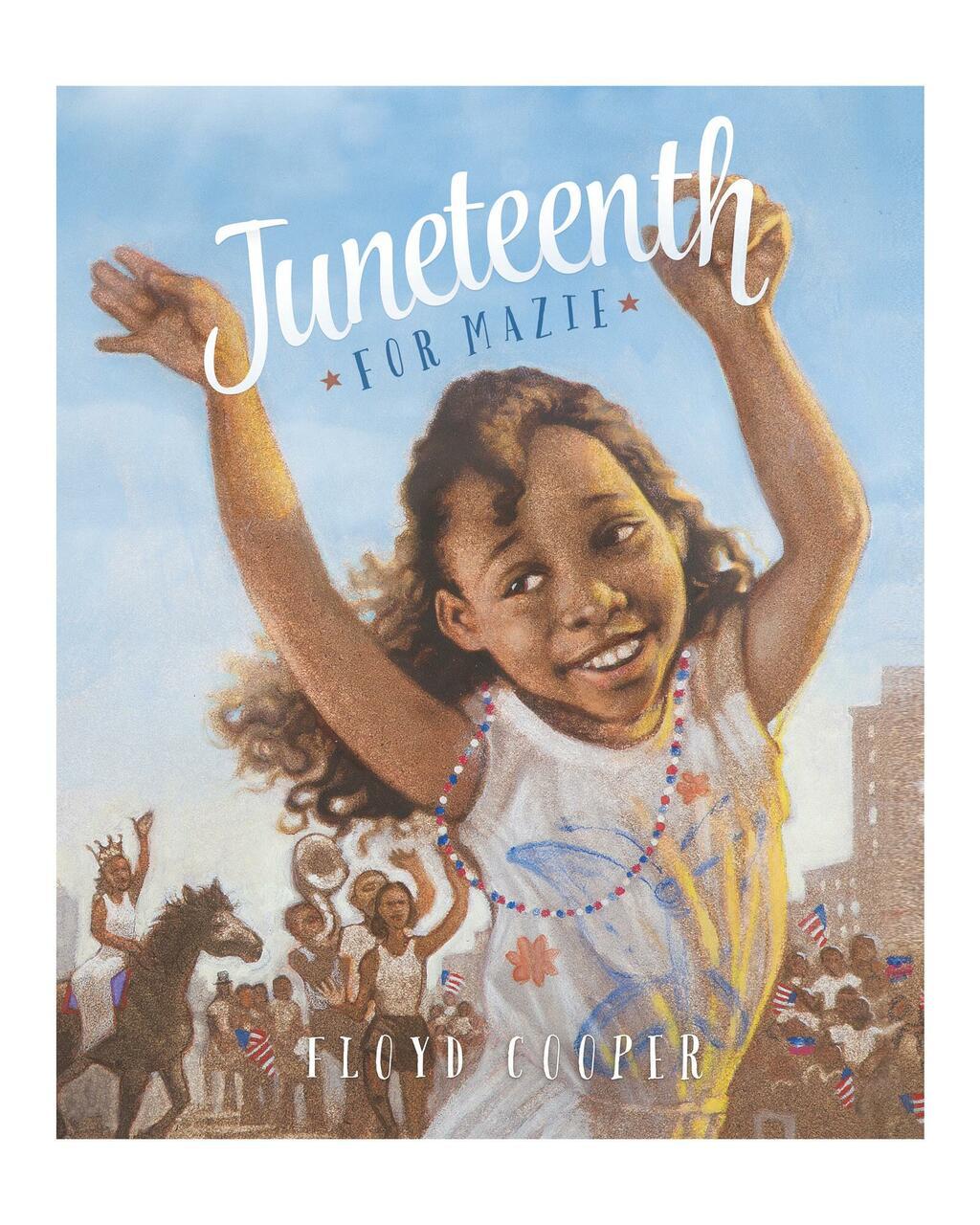
Juneteenth for Mazie
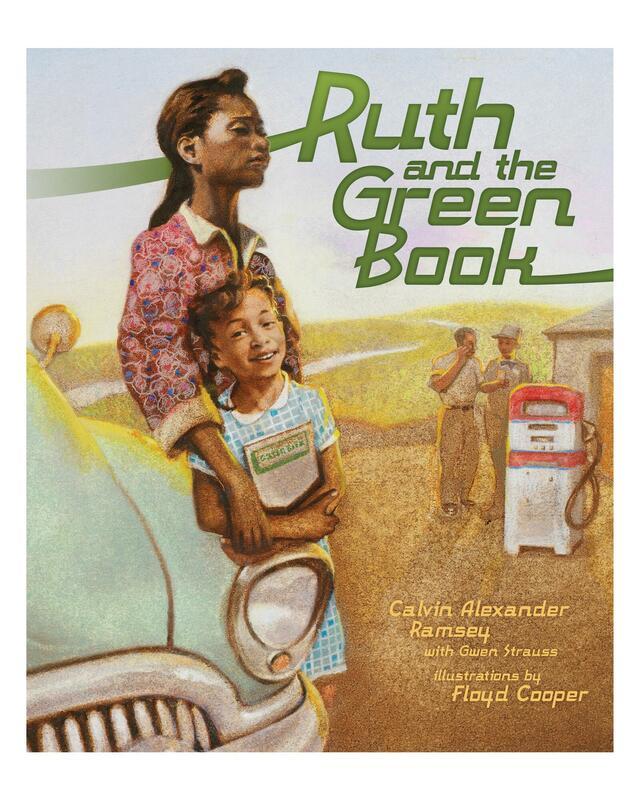
Ruth and the Green Book
RUTH AND THE GREEN BOOK Calvin Alexander Ramsey with Gwen Strauss Ruth and the Green Book is the story of one Black family’s trip from Chicago to Alabama by car in the late 1940s. Along the way they encounter prejudice, but they also discover The Green Book, a real guide to accommodations which was published for decades to aid African American travelers as they faced prejudice on the roads across the country.
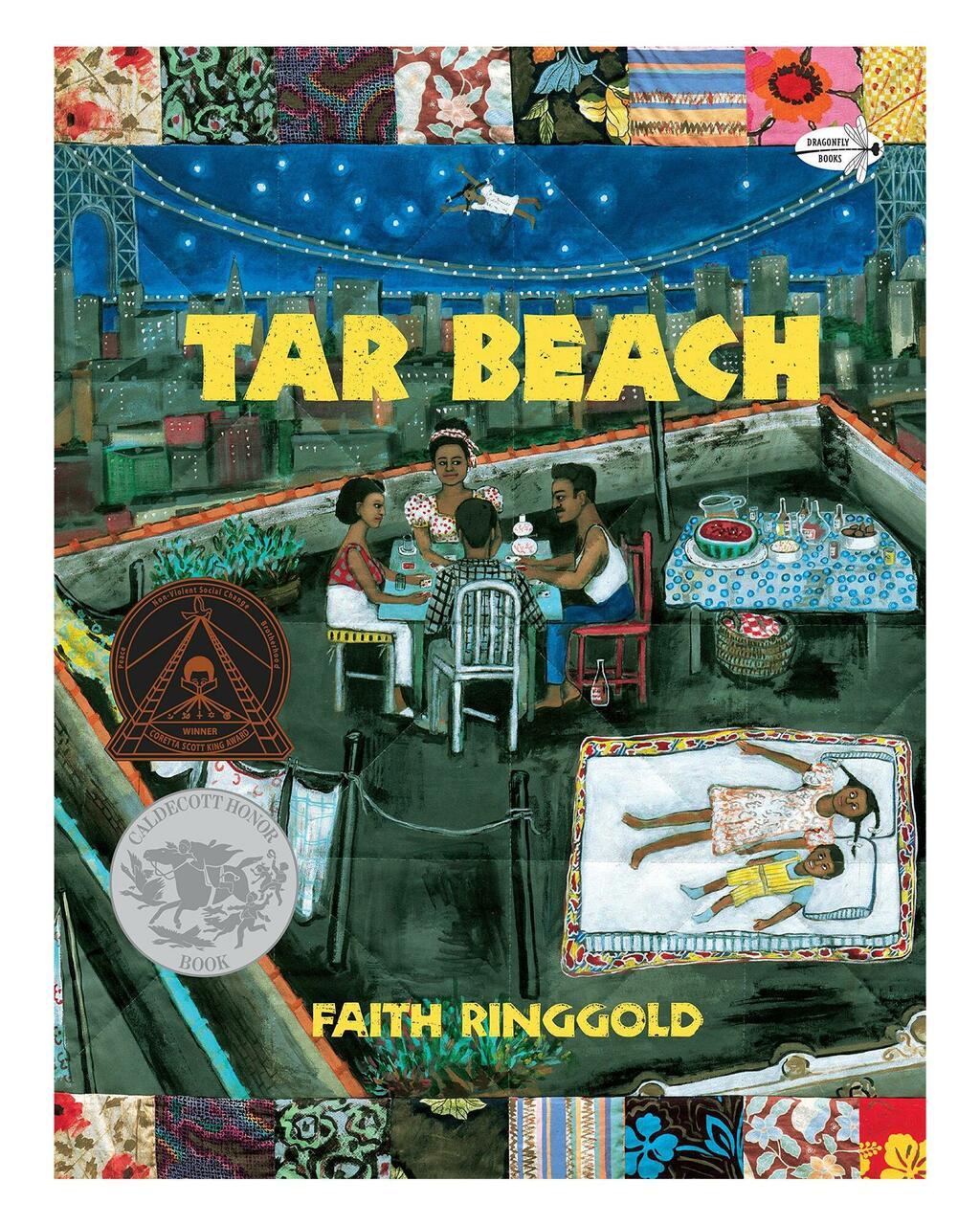
TAR BEACH Faith Ringgold Cassie Louise Lightfoot has a dream: to be free to go wherever she wants for the rest of her life. One night, up on “tar beach,” the rooftop of her family’s Harlem apartment building, her dreams come true. The stars lift her up, and she flies over the city, claiming the buildings and the city as her own.

Love Twelve Miles Long
LOVE TWELVE MILES LONG Glenda Armand This story, inspired by the life of Fredrick Douglas, imagines a poignant bedtime conversation between a young Fredrick Douglas and his mother about her twelve-mile journey to see him. Through the book, readers follow the life of a family separated by slavery and explore questions about resilience, the injustice of slavery, and the hope and promise of freedom.
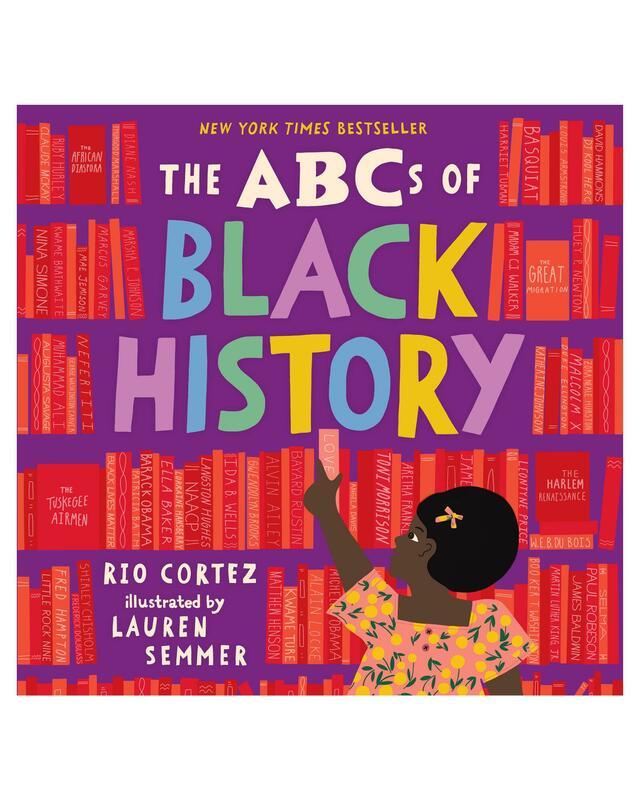
ABCs of Black History
ABCs OF BLACK HISTORY Rio Cortez Letter by letter, celebrate a story of big ideas––P is for Power, S is for Science and Soul -- of significant moments––G is for Great Migration-- and of iconic figures––H is for Zora Neale Hurston, X is for Malcom X. In addition to rhyming text, the book includes back matter with information on the events, places, and people mentioned in the poem, from Mae Jemison to W. E. B. Du Bois, Fannie Lou Hamer to Sam Cooke, and the Little Rock Nine to DJ Kool Herc.
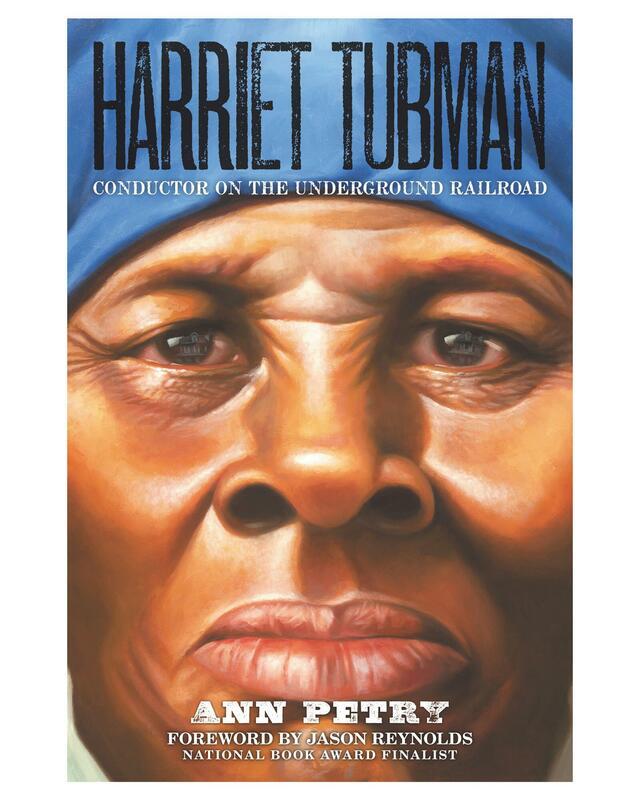
Harriet Tubman Conductor on the Underground Railroad
HARRIET TUBMAN: CONDUCTOR ON THE UNDERGROUND RAILROAD Ann Petry Harriet Tubman was born a slave and dreamed of being free. She was willing to risk everything–including her own life–to see that dream come true. After her daring escape, Harriet became a conductor on the secret Underground Railroad, helping others make the dangerous journey to freedom.
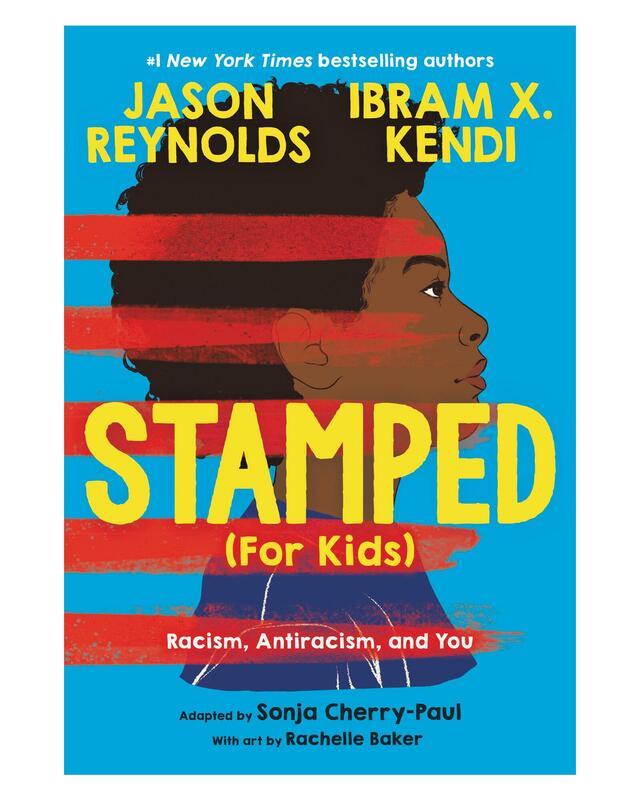
Stamped (for kids_ Racism, Antiracism, and You
STAMPED (FOR KIDS): RACISM, ANTIRACISM, AND YOU. Jason Reynolds and Ibram X. Kendi Adapted from the groundbreaking bestseller Stamped: Racism, Antiracism, and You, this book takes readers on a journey from present to past and back again. Kids will discover where racist ideas came from, identify how they impact America today, and meet those who have fought racism with antiracism. Along the way, they’ll learn how to identify and stamp out racist thoughts in their own lives.
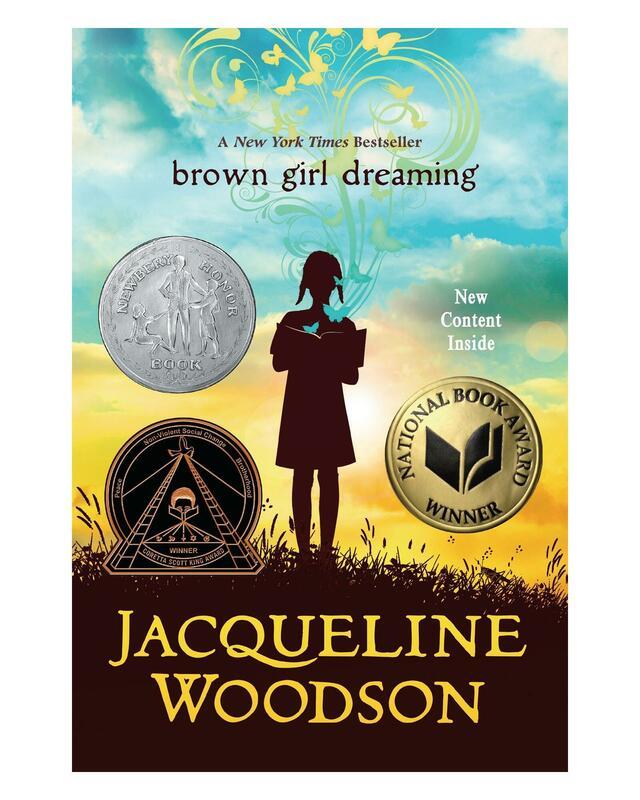
Brown Girl Dreaming
BROWN GIRL DREAMING Jaqueline Woodson A memoir in verse about what it was like to grow up in the 1960s and 1970s living with the remnants of Jim Crow and a growing awareness of the Civil Rights movement.
Gallery Modal
Facts about juneteenth.
The National Museum of African American History and Culture’s curator of women’s history Angela Tate and museum specialist and oral historian Kelly Navies provide history and insight on Juneteenth.
The Historical Background of Juneteenth:
Kelly Navies, museum specialist and oral historian: “Throughout the war, Texas remained largely free of the presence of Union troops. A year after General Granger’s announcement, Texans celebrated the first Juneteenth. However, African Americans had to overcome many challenges in the years after learning of their ‘freedom.’ Many states, including Texas, passed stringent laws curtailing the movement and actions of the newly freed men and women. Those in power also attempted to thwart the observance of Juneteenth by denying large groups of African Americans access to land on which to celebrate. In response to this strategy, in 1872, Black Houstonians, under the leadership of Rev. Jack Yates, a formerly enslaved man, formed the Colored People and Emancipation Park Association to purchase a plot of land that could be used for Juneteenth celebrations. This plot of land became known as Emancipation Park and throughout the era of segregation it was the only public park open to African Americans in Houston, Texas. In other towns throughout the South, similar strategies were used to secure safe spaces for Juneteenth observance."
The Meaning of Juneteenth Through Social Justice Movements
Juneteenth gained popularity during the Civil Rights Movement with the increased emphasis on Black history and empowerment. At the end of the 1968 Poor People’s Campaign, held on the National Mall, there was a ‘Solidarity Day,’ held on Juneteenth. Many who attended had never heard of Juneteenth and subsequently took their new knowledge to their hometowns across the United States. The significance of Juneteenth is part of a continuum of moments where African Americans have advocated for their full participation in American citizenship and commanded the maintenance of the memory of our history and culture in the face of resistance and racism.
What is the significance of Juneteenth?
Angela Tate, museum curator of women’s history : “The holiday did not exist when Frederick Douglass delivered his stirring speech about Independence Day. By the turn of the twentieth century, Black leaders such as W.E.B. Du Bois focused efforts on commemorating anniversaries of Emancipation Day (1913, 1933). Black History Month grew out of Negro History Week, which Carter G. Woodson founded February 7, 1926, to commemorate the birthdays of Abraham Lincoln and Frederick Douglass. Martin Luther King’s birthday was not made a federal holiday until 1983. The significance of Juneteenth is, thus, part of a continuum of moments where African Americans have advocated for their full participation in American citizenship and commanded the maintenance of the memory of our history and culture in the face of resistance and racism.”
How is Juneteenth celebrated?
Kelly Navies, museum specialist and oral historian : “Juneteenth is celebrated in a variety of ways throughout the United States and world, but consistent themes are an emphasis on family, freedom, activism, and resilience. Most communities celebrate with a feast centered around a barbeque. Often there are historic-themed performances and poetry readings. You might also see African drumming and dancing. The color red is an important symbol of the sacrifices made in the past, and many people wear red and bring red side dishes to the feast, like red beans, watermelon, and red soda pop.”
Why is the day called Juneteenth?
Kelly Navies, museum specialist and oral historian : “The holiday’s name Juneteenth is a combination of the month of June and the 19th day, representing the date in 1865 General Granger arrived in Galveston, Texas with a force of almost 2000 troops to inform the enslaved African Americans in Texas that they were now “free.” June + 19 = Juneteenth.”
How has the holiday evolved over the years?
Angela Tate, museum curator of women’s history : “As with many things involving African American history and culture, Juneteenth is not without its own debates and detractors. Recent efforts to generate support for making it a national holiday have been met with resistance. Several Black Texans have been critical of how the state and Southern culture have been excised from the conversations and commemorations. Chaédria LaBouvier, the first Black curator at the Guggenheim Museum, tweeted in late 2020 about the lack of specificity when discussing Juneteenth and the Southern roots of African American culture:
‘Histories, practices, etc that traceably originate or were developed as we currently iterate them in places that we are not living descendants of said history or ppl — we are doing the toxic, colonial thing to each other that has been done to us.’
“This sharp reminder of Juneteenth’s cultural roots is echoed in a letter to the editor sent to the Atlanta Daily World in 1983, when Texas State Representative Al Edwards reminded Atlanta readers that ‘Juneteenth celebrations originated here in Texas...In 1979 the 66th Legislature passed and the Governor signed my H.B. 1016 which going into effect next year made Emancipation Day an official state holiday.’ When digging even further into Black newspapers, the evidence of Texas being at the heart of Juneteenth is clear: newspaper articles from the first half of the twentieth century characterize it as a strictly Texas holiday, whereas in the second half of twentieth century, it has flourished in a variety of cities, with Los Angeles being the most prevalent city of celebration.
“This is no coincidence: California was the destination for African Americans from Texas and Louisiana in the 1940s-70s, undoubtedly drawn by the continuous sunshine and the similar ethnic populations (it was split amongst black, white, and brown, as opposed to the black and white binary in the rest of the South). However, even Black newspapers from Los Angeles, San Francisco, and Sacramento reveal how often Juneteenth was merely an excuse to gather over food, drinks, and music. At one celebration held in 1988, the usual red soda and funk was swapped out for finger foods as guests listened to classical music! Later, in the early 2000s, Black leaders saw in Juneteenth a piece of the overall push for reparations and federal acknowledgement and redress for the harms of slavery and Jim Crow.”
What is the significance of the color red and Juneteenth?
Kelly Navies, museum specialist and oral historian : Each year when my family celebrates Juneteenth, our flyers boldly request that each quest bring something “Red.” We then add examples, like red soda pop, watermelon, apples, or even red beans. Folks bring these items without much thinking about their origin. In fact, the roots of thesymbolic efficacy of the color Red can be traced to West Africa, where it has been associated with strength, spirituality, life, and death. Furthermore, culinary historians, trace the color to certain foods that traveled to the Americas along with the Africans during the trans-Atlantic slave trade, such as hibiscus and the Kola nut. So, this year at Juneteenth, as you take a long swallow from a cool drink of hibiscus iced tea, or red punch, remember the ancestors who sacrificed, remember the blood shed in the struggle, remember the collective strength of people of the African diaspora, and finally remember the spirituality and transcendent joy that enabled us to overcome.
Test Your Knowledge: Crossword Answer Key

Savor the Flavors of Juneteenth
Louis armstrong's red beans and rice, hibiscus and ginger sweet tea, commemorative merchandise.

Help Represent Juneteenth
Shop this limited-edition collection that honors Juneteenth as celebrated for over 150 years. Purchases support the museum’s artistic, community and education programs.
Transcribe Freedmen's Bureau Records
Learn about the post-Civil War transition of enslaved people by volunteering to transcribe the records of the Freedmen's Bureau, which is accessible online, through the Smithsonian Transcription Center.
Subtitle here for the credits modal.

Live in Moscow
Andreas Schaerer & Hildegard Lernt Fliegen
8 SONGS • 54 MINUTES • JAN 13 2012
- TRACKS TRACKS
- DETAILS DETAILS
How are ratings calculated?
- Amazon Newsletter
- About Amazon
- Accessibility
- Sustainability
- Press Center
- Investor Relations
- Amazon Devices
- Amazon Science
- Sell on Amazon
- Sell apps on Amazon
- Supply to Amazon
- Protect & Build Your Brand
- Become an Affiliate
- Become a Delivery Driver
- Start a Package Delivery Business
- Advertise Your Products
- Self-Publish with Us
- Become an Amazon Hub Partner
- › See More Ways to Make Money
- Amazon Visa
- Amazon Store Card
- Amazon Secured Card
- Amazon Business Card
- Shop with Points
- Credit Card Marketplace
- Reload Your Balance
- Amazon Currency Converter
- Your Account
- Your Orders
- Shipping Rates & Policies
- Amazon Prime
- Returns & Replacements
- Manage Your Content and Devices
- Recalls and Product Safety Alerts
- Conditions of Use
- Privacy Notice
- Consumer Health Data Privacy Disclosure
- Your Ads Privacy Choices

IMAGES
VIDEO
COMMENTS
Digital innovation has demonstrated powers to complement, enrich and transform education, and has the potential to speed up progress towards Sustainable Development Goal 4 (SDG 4) for education and transform modes of provision of universal access to learning. It can enhance the quality and relevance of learning, strengthen inclusion, and ...
Learn about the role, types, and history of digital learning resources in education, and how they are used in traditional and online learning environments. Explore the advantages and disadvantages of virtual learning, and the impact of COVID-19 on digital education.
Learn about 11 tools that facilitate communication, collaboration, and personalization in the learning process. These tools include Edmodo, Socrative, Projeqt, Thinglink, TED-Ed, and more.
Explore resources and tools created by Google to inspire creativity, encourage hands-on learning, and equip your students with digital skills.
OER Commons is a public digital library of open educational resources for educators and learners. You can explore, create, collaborate, and access collections, groups, hubs, microsites, and professional learning programs on OER Commons.
Digital learning resources are learning resources that aid students and teachers in the educational process. Their intent is to increase student engagement, make curriculum development and ...
Google for Education offers a suite of tools for learning, teaching, and managing education ecosystems. Explore Google Workspace, Classroom, Chromebooks, and more to enhance your digital educational resources.
Digital technology has become a social necessity to ensure education as a basic human right, especially in a world experiencing more frequent crises and conflicts. During the COVID-19 pandemic, countries without sufficient ICT infrastructure and well-resourced digital learning systems suffered the greatest education disruptions and learning losses.
This guide provides resources and recommendations to support teacher implementation of digital learning using technology tools and practices. It covers topics such as access, digital citizenship, privacy, personalization, assessment, and collaboration.
The Digital Skills Library is an open repository of free learning resources designed to help all adult learners develop the digital skills needed to achieve their personal, civic, educational, and career goals. The library is managed by the EdTech Center @ World Education. All resources within this library have been curated by educators to ...
Discover Google for Education. Explore learning tools, cloud solutions, and programs designed for higher ed. Find tools for higher education. Get access to digital tools, training, support, and more for educators. Find trainings and support. Help kids continue learning beyond the classroom. Find resources for families.
Open Educational Resources (OER) are learning, teaching and research materials in any format and medium that reside in the public domain or are under copyright that have been released under an open license, that permit no-cost access, re-use, re-purpose, adaptation and redistribution by others. Open license refers to a license that respects the ...
OER stands for Open Educational Resources. OER are teaching, learning, and research materials intentionally created and licensed to be free for the end user to own, share, and modify. OpenStax is an open education resource (OER) repository where students and educators around the world can have free access to quality, peer-reviewed, and up-to ...
Inspire your students with thousands of free teaching resources including videos, lesson plans, and games aligned to state and national standards. ... Choose a station to find educational resources and station-sponsored events near you. Choose Station . Student site . In partnership with .
Digital learning is defined as "any instructional practice that effectively uses technology to strengthen a student's learning experience and encompasses a wide spectrum of tools and practices." 1. This "School Leader Digital Learning Guide" is a resource to help you consider, plan, fund, implement, maintain, and adapt learning ...
To help teachers and parents easily find high-quality resources, Amazon's developed a new storefront for digital educational resources on Amazon.comand a publishing portal, Amazon Ignite, for educators who create and sell educational resources. Teachers and parents can now search for materials by grade level, topic, resource type or theme ...
What It Is: Free digital educational resources platform that connects educators and students through Real and Digital play. What They're Offering: Over 150 free toolkits ready to use in your classroom. Mosa Mack Science. What It Is: NGSS based science lessons for 4th-8th graders that can easily be done from home. MusicFirst
One of the best ways to teach online classes is by offering flexible learning options. Allow students to dive deeper into subjects with additional resources, choose their assignment topics, or participate in optional discussions. This approach empowers students to take charge of their learning, making education more relevant and engaging for ...
For educators looking to infuse the arts into their educational practices, we've developed hundreds of free learning resources: lesson plans, articles, learning guides for performances, how-tos, and much more. Kennedy Center Education is here to help you succeed with newly revised lesson plans and digital resources that incorporate best practices for classroom and remote learning—providing ...
NC AI Summit: NCDPI is also hosting two AI Summits, one for the east and one for the west. These are intended for district leadership teams, AI steering committees, and those who will help guide your PSUs AI implementation . Register today and be sure to save the date! April 30, 2024 (West- Lake Junaluska Conference Center in Waynesville, NC)
AMI Digital offers thousands of high-quality downloadable resources for Montessori schools, educators and families. You can access free classified cards, language materials and more without setting up an account or giving any details.
Software. Education expert shares AI tools resource for educators. Rebecca Bultsma, APR, director of communications of communications at Westwind School Division in Alberta Canada, has partnered with Rise Vision, a provider of digital signage software for schools, to present an on-demand webinar entitled "Navigating AI in Schools."
The program is intended to supply digital resources that bolster community engagement, fuel innovation, and expand educational opportunities. "We hope that the HCPL Connected participants think of us as their online library home. ... The HCPL Connected program levels the playing field by giving people access to digital learning experiences ...
across and beyond professional, educational and societal boundaries. MIL addresses all types of media (oral, print, analogue and digital) and all forms and formats of resources. 3. The MIL concept builds on prior international documents such as the Prague Declaration "Towards an Information Literate Society" (2003); Alexandria Proclamation
On June 19, 1865, Union troops arrived in Galveston, Texas with the news that the more than 250,000 enslaved Black people in the state were free. This day came to be known as Juneteenth, now officially a federal holiday. Juneteenth is a time to celebrate, gather as a family, reflect on the past and look to the future.
One electronic resource can be used many times to provide educational services of various content. New technologies are being introduced in education systems and digital educational platforms that provide services. Widespread use of online courses, simulators, interactive whiteboards, projectors, 3D printers, etc. (OECD,
Ronald Reagan, Speech at Moscow State University. Digital History ID 1234. Author: Ronald W. Reagan. Date:1988. Annotation: During a visit to the Soviet Union in 1988, President Ronald Reagan, a lifelong anti-communist, met with students at Moscow State University and delivered a stirring plea for democracy and individual rights.
Select the department you want to search in ...
Announcement marks the largest planned capital investment in state history NEW CARLISLE, Ind. - Governor Eric J. Holcomb today announced that Amazon Web Services (AWS), an Amazon.com. Inc. company (NASDAQ: AMZN), plans to invest $11 billion to build a data center campus in north central Indiana and create at least 1,000 new jobs. This planned investment marks the largest capital investment ...
Nine health systems, including Northwell Health, Novant Health, Ochsner Health and Stanford Health Care, recently joined the venture company's Digital Consortium. Together, the health systems and the private equity (PE) firm that is the venture capital division of Aegis Capital Corp. will develop startups to address health system needs. Aegis ...